Shows
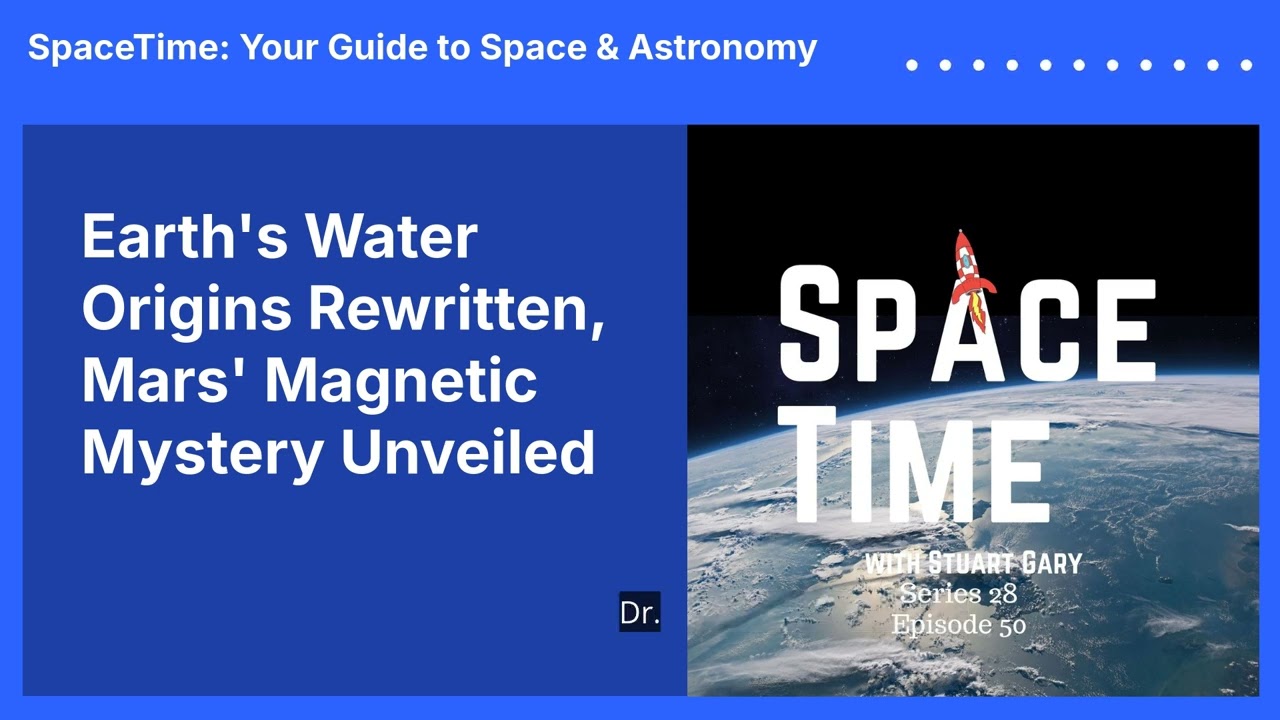 Space News TodayEarth’s Water Origins Rewritten, Mars’ Magnetic Mystery UnveiledIn this episode of SpaceTime, we unveil groundbreaking evidence that challenges previously held theories about the origins of Earth's water. Recent findings published in the journal Icarus indicate that rather than being delivered by asteroids and comets, Earth's water may have formed alongside the planet itself. The study utilizes a unique meteorite known as the enstatite chondrite to reveal a rich source of hydrogen essential for water formation, reshaping our understanding of how life-sustaining conditions developed on Earth.
The Enigmatic Magnetic Field of Mars
Next, we delve into the curious case of Mars's...2025-04-2518 min
Space News TodayEarth’s Water Origins Rewritten, Mars’ Magnetic Mystery UnveiledIn this episode of SpaceTime, we unveil groundbreaking evidence that challenges previously held theories about the origins of Earth's water. Recent findings published in the journal Icarus indicate that rather than being delivered by asteroids and comets, Earth's water may have formed alongside the planet itself. The study utilizes a unique meteorite known as the enstatite chondrite to reveal a rich source of hydrogen essential for water formation, reshaping our understanding of how life-sustaining conditions developed on Earth.
The Enigmatic Magnetic Field of Mars
Next, we delve into the curious case of Mars's...2025-04-2518 min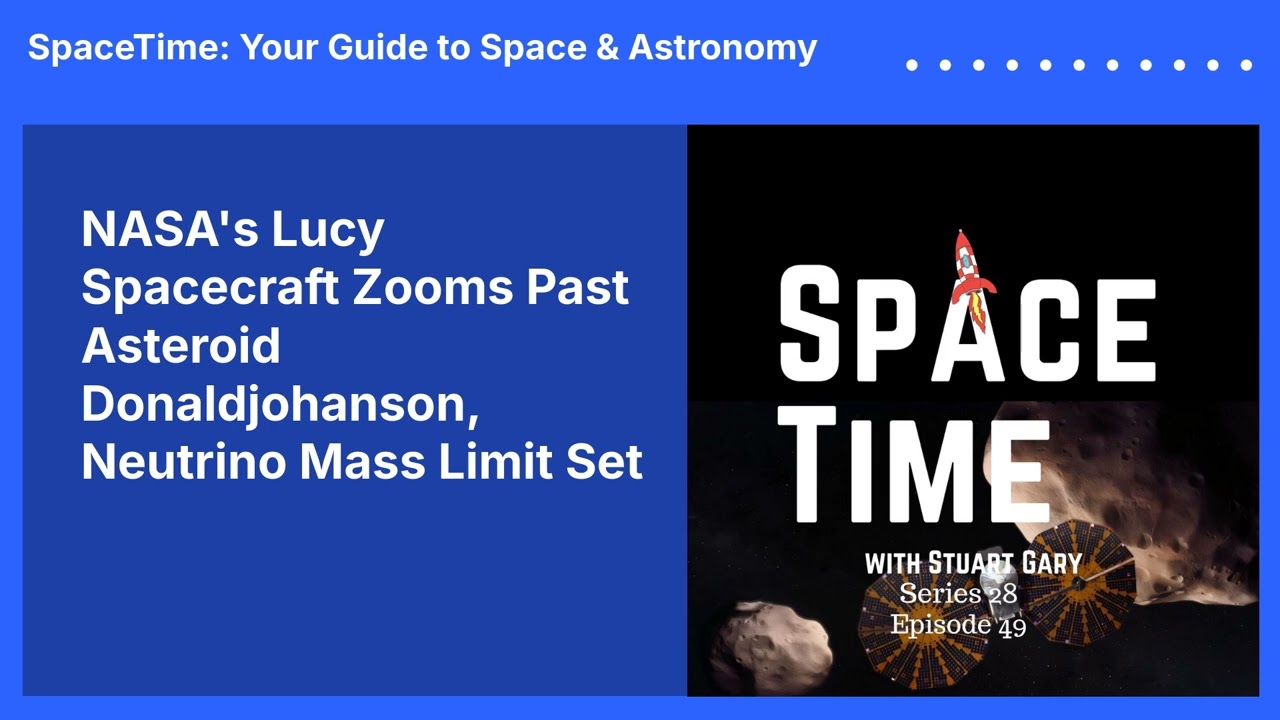 Space News TodayNASA’s Lucy Spacecraft Zooms Past Asteroid Donaldjohanson, Neutrino Mass Limit SetThis episode is brought to you with the support of our sponsor, NordVPN and Incogni. To get your special NordVPN disvcount visit www.nordvpn.com/spacetime (https://www.nordvpn.com/spacetime)
and your Incogni deal at www.incogni.com/spacetime (https://www.incogni.com/spacetime) . Both offers come with a 30 day money back guarantee! Support the show and check them out....recommended and used by the team here at SpaceTime.
NASA's Lucy Mission, Neutrino Mass Breakthrough, and Martian Rock Discoveries
In this episode of SpaceTime, we dive into NASA's Lucy...2025-04-2326 min
Space News TodayNASA’s Lucy Spacecraft Zooms Past Asteroid Donaldjohanson, Neutrino Mass Limit SetThis episode is brought to you with the support of our sponsor, NordVPN and Incogni. To get your special NordVPN disvcount visit www.nordvpn.com/spacetime (https://www.nordvpn.com/spacetime)
and your Incogni deal at www.incogni.com/spacetime (https://www.incogni.com/spacetime) . Both offers come with a 30 day money back guarantee! Support the show and check them out....recommended and used by the team here at SpaceTime.
NASA's Lucy Mission, Neutrino Mass Breakthrough, and Martian Rock Discoveries
In this episode of SpaceTime, we dive into NASA's Lucy...2025-04-2326 min Space News TodayHints of Alien Life Detected, Early Universe Spiral Galaxy UncoveredHints of Alien Life, a Galactic Mystery, and Juno's Safe Mode Incident
In this episode of SpaceTime, we explore groundbreaking revelations suggesting the potential for alien life beyond Earth. Using NASA's Webb Space Telescope, astronomers have detected chemical signatures of dimethyl sulfide and dimethyl disulfide in the atmosphere of the exoplanet K2 18 b, a sub-Neptune world located 124 light years away in the habitable zone of its host star. While these findings are incredibly promising, researchers urge caution as they work to confirm these biosignatures through further observations.
A Surprising Spiral Galaxy from the...2025-04-2133 min
Space News TodayHints of Alien Life Detected, Early Universe Spiral Galaxy UncoveredHints of Alien Life, a Galactic Mystery, and Juno's Safe Mode Incident
In this episode of SpaceTime, we explore groundbreaking revelations suggesting the potential for alien life beyond Earth. Using NASA's Webb Space Telescope, astronomers have detected chemical signatures of dimethyl sulfide and dimethyl disulfide in the atmosphere of the exoplanet K2 18 b, a sub-Neptune world located 124 light years away in the habitable zone of its host star. While these findings are incredibly promising, researchers urge caution as they work to confirm these biosignatures through further observations.
A Surprising Spiral Galaxy from the...2025-04-2133 min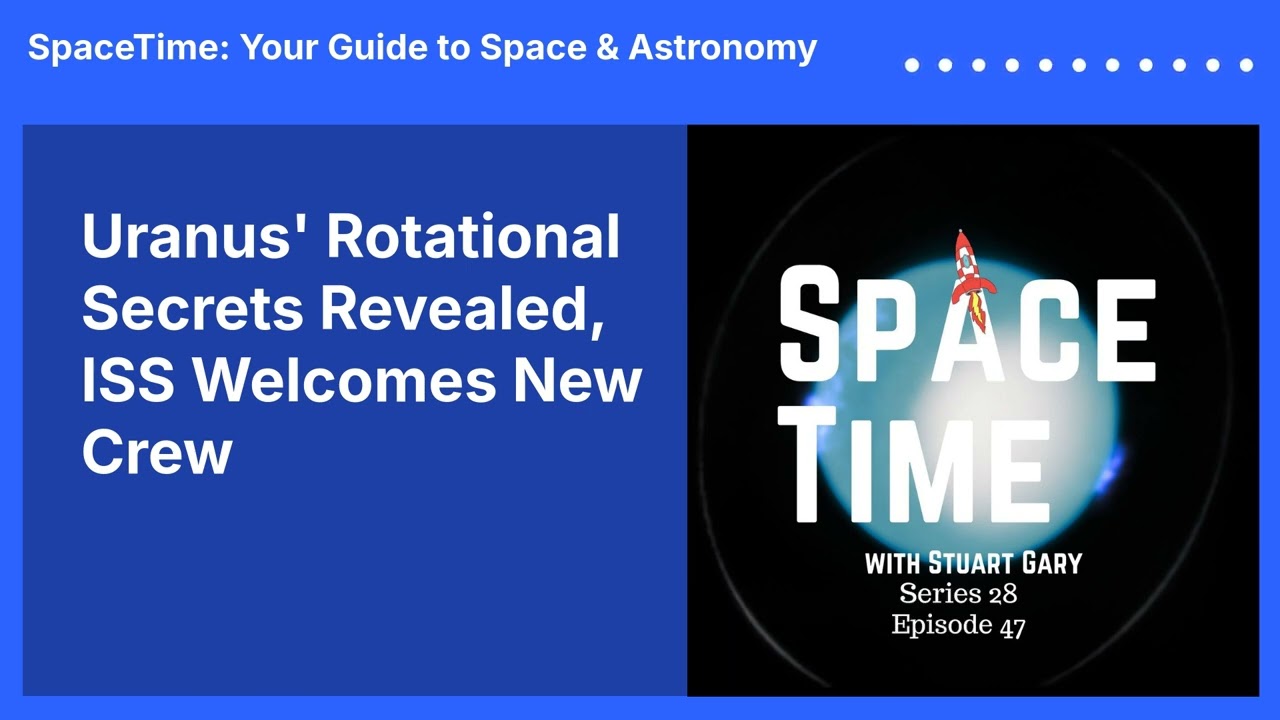 Space News TodayUranus’ Rotational Secrets Revealed, ISS Welcomes New CrewExploring Uranus's Rotational Secrets, New Crew at the ISS, and the Dangers of Space Travel
In this episode of SpaceTime, we delve into groundbreaking measurements of Uranus's rotational rate, achieved with unprecedented accuracy by NASA's Hubble Space Telescope. This new technique, which analyzed over a decade of observations of the planet's auroras, provides essential insights into Uranus's complex atmosphere and magnetic field, establishing a vital reference point for future planetary studies.
A New Crew Arrives at the International Space Station
Next, we cover the arrival of a new crew aboard...2025-04-1919 min
Space News TodayUranus’ Rotational Secrets Revealed, ISS Welcomes New CrewExploring Uranus's Rotational Secrets, New Crew at the ISS, and the Dangers of Space Travel
In this episode of SpaceTime, we delve into groundbreaking measurements of Uranus's rotational rate, achieved with unprecedented accuracy by NASA's Hubble Space Telescope. This new technique, which analyzed over a decade of observations of the planet's auroras, provides essential insights into Uranus's complex atmosphere and magnetic field, establishing a vital reference point for future planetary studies.
A New Crew Arrives at the International Space Station
Next, we cover the arrival of a new crew aboard...2025-04-1919 min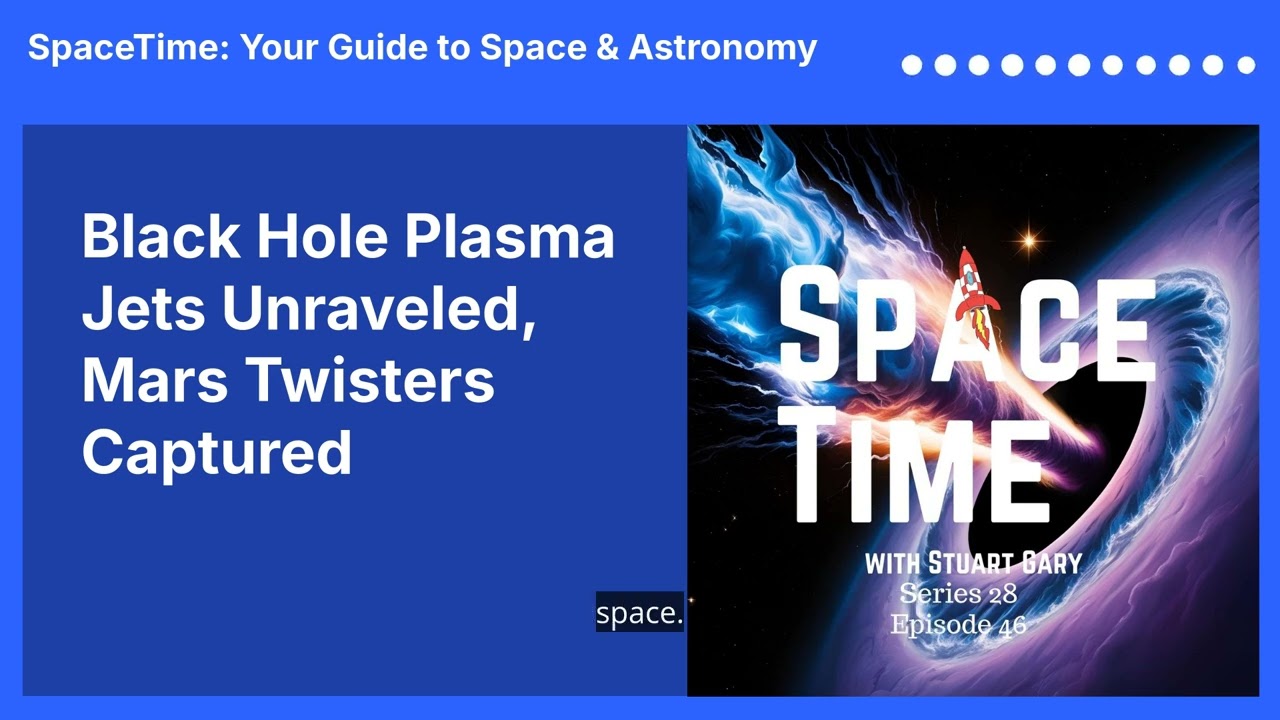 Space News TodayBlack Hole Plasma Jets Unraveled, Mars Twisters CapturedSpaceTime Series 28 Episode 46
The Astronomy, Space and Science News Podcast
Unraveling Black Hole Jets, Martian Dust Devils, and Earth's Tectonic Mysteries
In this episode of SpaceTime, we explore groundbreaking research that sheds light on how black holes generate their powerful plasma jets. A new study reveals that these jets are formed when superheated gas experiences a rapid shrinking towards the black hole's event horizon, offering insights into galaxy evolution and the fundamental physics of black holes. We discuss the implications of these findings for understanding cosmic phenomena and the behavior...2025-04-1719 min
Space News TodayBlack Hole Plasma Jets Unraveled, Mars Twisters CapturedSpaceTime Series 28 Episode 46
The Astronomy, Space and Science News Podcast
Unraveling Black Hole Jets, Martian Dust Devils, and Earth's Tectonic Mysteries
In this episode of SpaceTime, we explore groundbreaking research that sheds light on how black holes generate their powerful plasma jets. A new study reveals that these jets are formed when superheated gas experiences a rapid shrinking towards the black hole's event horizon, offering insights into galaxy evolution and the fundamental physics of black holes. We discuss the implications of these findings for understanding cosmic phenomena and the behavior...2025-04-1719 min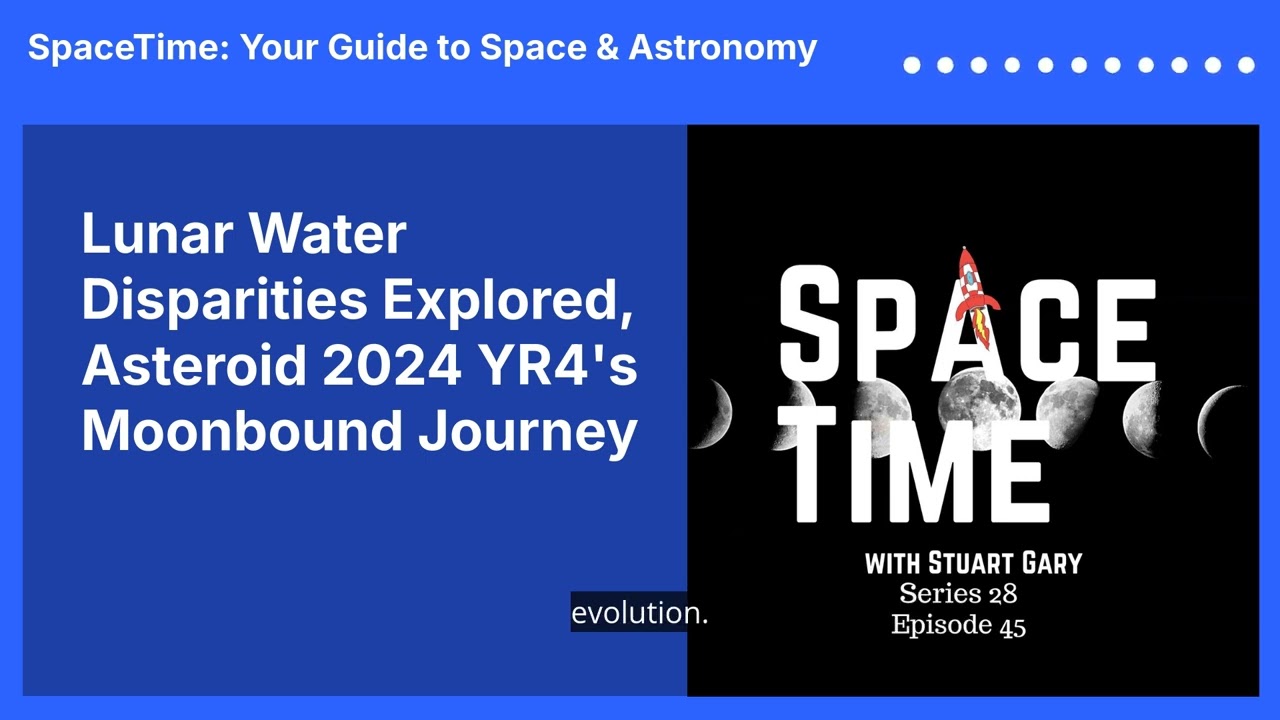 Space News TodayLunar Water Disparities Explored, Asteroid 2024 YR4’s Moonbound Journey(00:00:00) Lunar Water Disparities Explored, Asteroid 2024 YR4's Moonbound Journey
(00:00:46) Lunar Water Differences
(00:03:47) Asteroid 2024 YR4: From Earth Threat to Lunar Target
(00:06:33) Singing Stars and Galactic History
(00:18:56) The Science Report
(00:25:11) Show Wrap
SpaceTime Series 28 Episode 45
The Astronomy, Space and Science News Podcast
Uncovering Lunar Water Discrepancies, Asteroid 2024 YR4's Moon Targeting, and Stellar...2025-04-1626 min
Space News TodayLunar Water Disparities Explored, Asteroid 2024 YR4’s Moonbound Journey(00:00:00) Lunar Water Disparities Explored, Asteroid 2024 YR4's Moonbound Journey
(00:00:46) Lunar Water Differences
(00:03:47) Asteroid 2024 YR4: From Earth Threat to Lunar Target
(00:06:33) Singing Stars and Galactic History
(00:18:56) The Science Report
(00:25:11) Show Wrap
SpaceTime Series 28 Episode 45
The Astronomy, Space and Science News Podcast
Uncovering Lunar Water Discrepancies, Asteroid 2024 YR4's Moon Targeting, and Stellar...2025-04-1626 min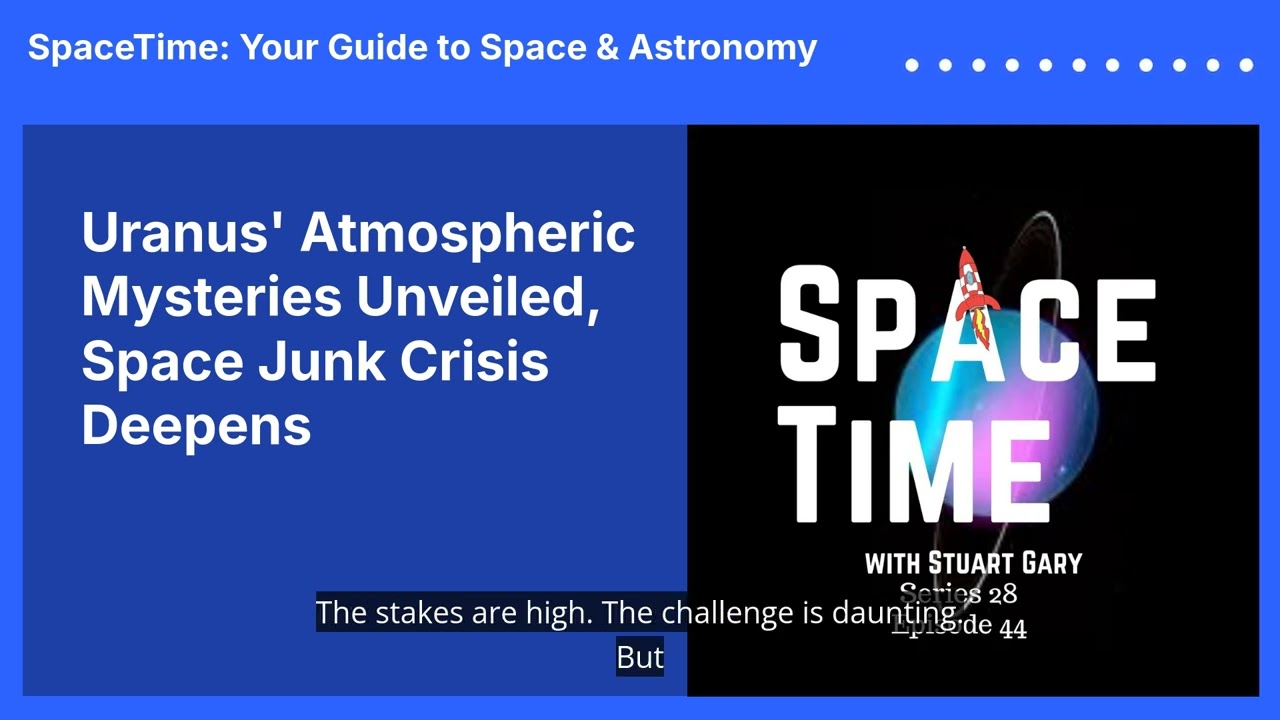 Space News TodayUranus’ Atmospheric Mysteries Unveiled, Space Junk Crisis DeepensSpaceTime Series 28 Episode 44
The Astronomy, Space and Science News Podcast
New Discoveries About Uranus, the 2025 Space Environment Robert on Space Junk, and NASA's Starliner Testing Updates
In this episode of SpaceTime, we explore groundbreaking insights into the atmosphere of Uranus, derived from two decades of observations by NASA's Hubble Space Telescope. Uranus, an ice giant with its unique tilt and rotation, reveals complex atmospheric dynamics that scientists are just beginning to understand. We discuss the implications of Hubble's findings, including the distribution of methane and the changing aerosol structures as...2025-04-1128 min
Space News TodayUranus’ Atmospheric Mysteries Unveiled, Space Junk Crisis DeepensSpaceTime Series 28 Episode 44
The Astronomy, Space and Science News Podcast
New Discoveries About Uranus, the 2025 Space Environment Robert on Space Junk, and NASA's Starliner Testing Updates
In this episode of SpaceTime, we explore groundbreaking insights into the atmosphere of Uranus, derived from two decades of observations by NASA's Hubble Space Telescope. Uranus, an ice giant with its unique tilt and rotation, reveals complex atmospheric dynamics that scientists are just beginning to understand. We discuss the implications of Hubble's findings, including the distribution of methane and the changing aerosol structures as...2025-04-1128 min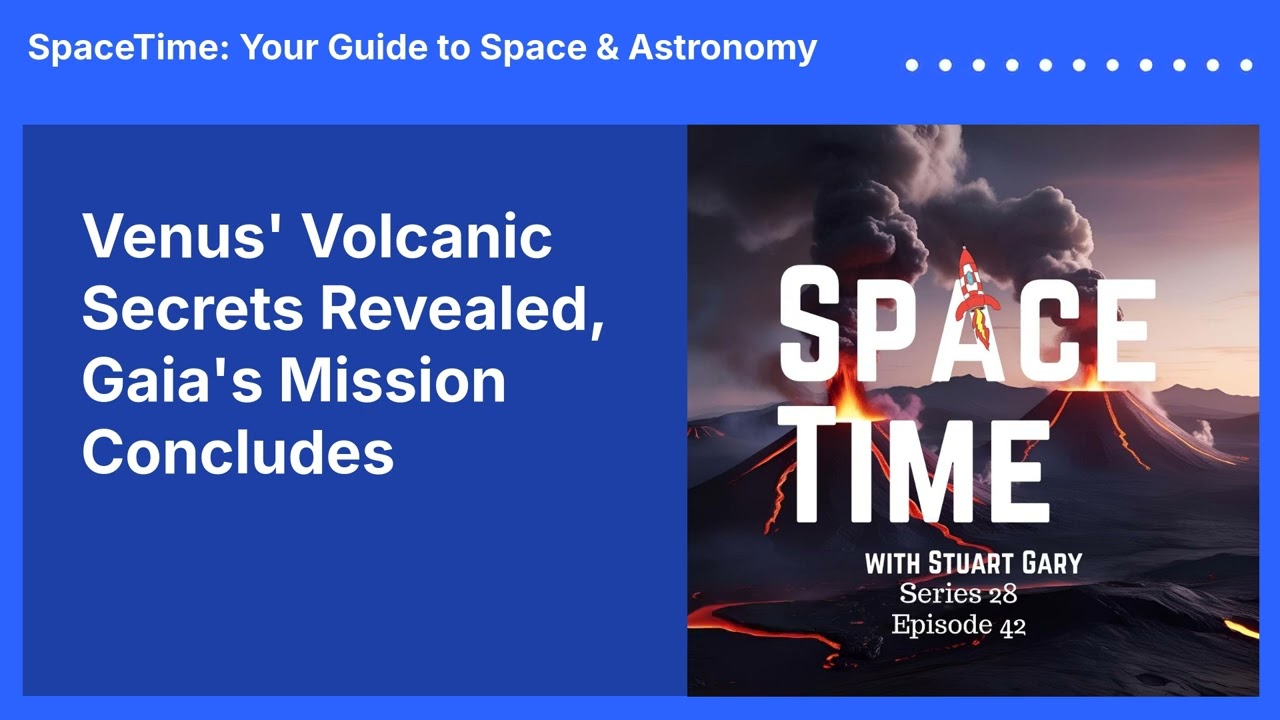 Space News TodayVenus’ Volcanic Secrets Revealed, Gaia’s Mission ConcludesSpaceTime Series 28 Episode 43
The Astronomy, Space and Science News Podcast
Exploring Venusian Volcanoes, the End of the Gaia Mission, and SpaceX's Historic Polar Orbit Launch
In this episode of SpaceTime, we delve into the geological mysteries of Venus, where new research suggests that convection in its crust may explain the planet's numerous volcanoes. Unlike Earth, which supports life, Venus is a harsh environment with extreme temperatures and a crushing atmosphere. We discuss how this convection could indicate a more active geological landscape than previously understood, shedding light on the planet's...2025-04-0929 min
Space News TodayVenus’ Volcanic Secrets Revealed, Gaia’s Mission ConcludesSpaceTime Series 28 Episode 43
The Astronomy, Space and Science News Podcast
Exploring Venusian Volcanoes, the End of the Gaia Mission, and SpaceX's Historic Polar Orbit Launch
In this episode of SpaceTime, we delve into the geological mysteries of Venus, where new research suggests that convection in its crust may explain the planet's numerous volcanoes. Unlike Earth, which supports life, Venus is a harsh environment with extreme temperatures and a crushing atmosphere. We discuss how this convection could indicate a more active geological landscape than previously understood, shedding light on the planet's...2025-04-0929 min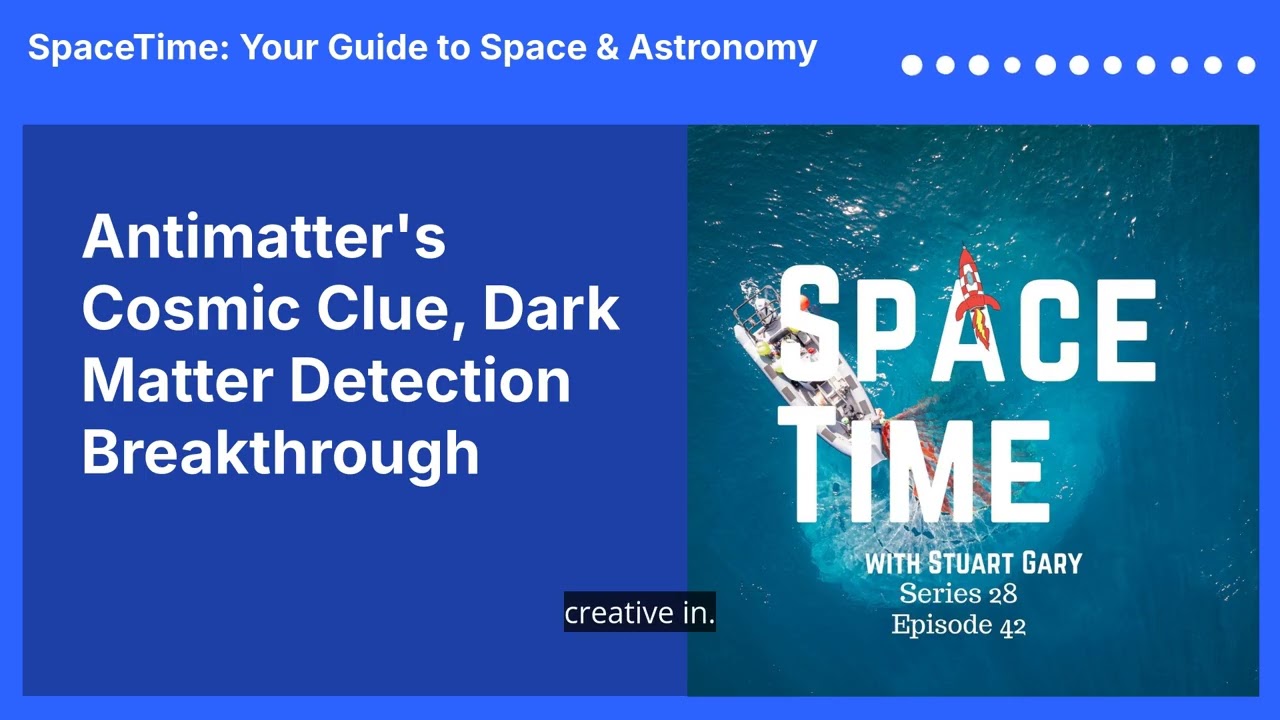 Space News TodayAntimatter’s Cosmic Clue, Dark Matter Detection BreakthroughSpaceTime Series 28 Episode 42
The Astronomy, Space and Science News Podcast
Unraveling Antimatter Mysteries, New Techniques to Detect Dark Matter, and Insights into the Spectrum Rocket Failure
In this episode of SpaceTime, we dive into groundbreaking discoveries at the Large Hadron Collider, where physicists have identified a significant difference in the decay behaviors of ordinary matter and antimatter. This finding could provide vital clues to understanding why our universe is dominated by matter despite the Big Bang's creation of equal amounts of both. We explore the implications of these results and...2025-04-0726 min
Space News TodayAntimatter’s Cosmic Clue, Dark Matter Detection BreakthroughSpaceTime Series 28 Episode 42
The Astronomy, Space and Science News Podcast
Unraveling Antimatter Mysteries, New Techniques to Detect Dark Matter, and Insights into the Spectrum Rocket Failure
In this episode of SpaceTime, we dive into groundbreaking discoveries at the Large Hadron Collider, where physicists have identified a significant difference in the decay behaviors of ordinary matter and antimatter. This finding could provide vital clues to understanding why our universe is dominated by matter despite the Big Bang's creation of equal amounts of both. We explore the implications of these results and...2025-04-0726 min Space News TodayHimalayan Sprite Lightning, Mars’ Shocking Spherules, Asteroid Belt MappingSpaceTime Series 28 Episode 41
The Astronomy, Space and Science News Podcast
Mysterious Red Sprite Lightning, Shocking Spherules on Mars, and a New Geological Map of the Asteroid Belt
In this episode of SpaceTime, we explore the breathtaking phenomenon of red sprite lightning captured over the Himalayas. Chinese astrophotographers documented over 100 of these rare electrical discharges, revealing insights into the complex thunderstorms of the region. We discuss the mechanisms behind these sprites and their implications for understanding upper atmospheric phenomena.
Shocking Discoveries on Mars
Next, we...2025-04-0442 min
Space News TodayHimalayan Sprite Lightning, Mars’ Shocking Spherules, Asteroid Belt MappingSpaceTime Series 28 Episode 41
The Astronomy, Space and Science News Podcast
Mysterious Red Sprite Lightning, Shocking Spherules on Mars, and a New Geological Map of the Asteroid Belt
In this episode of SpaceTime, we explore the breathtaking phenomenon of red sprite lightning captured over the Himalayas. Chinese astrophotographers documented over 100 of these rare electrical discharges, revealing insights into the complex thunderstorms of the region. We discuss the mechanisms behind these sprites and their implications for understanding upper atmospheric phenomena.
Shocking Discoveries on Mars
Next, we...2025-04-0442 min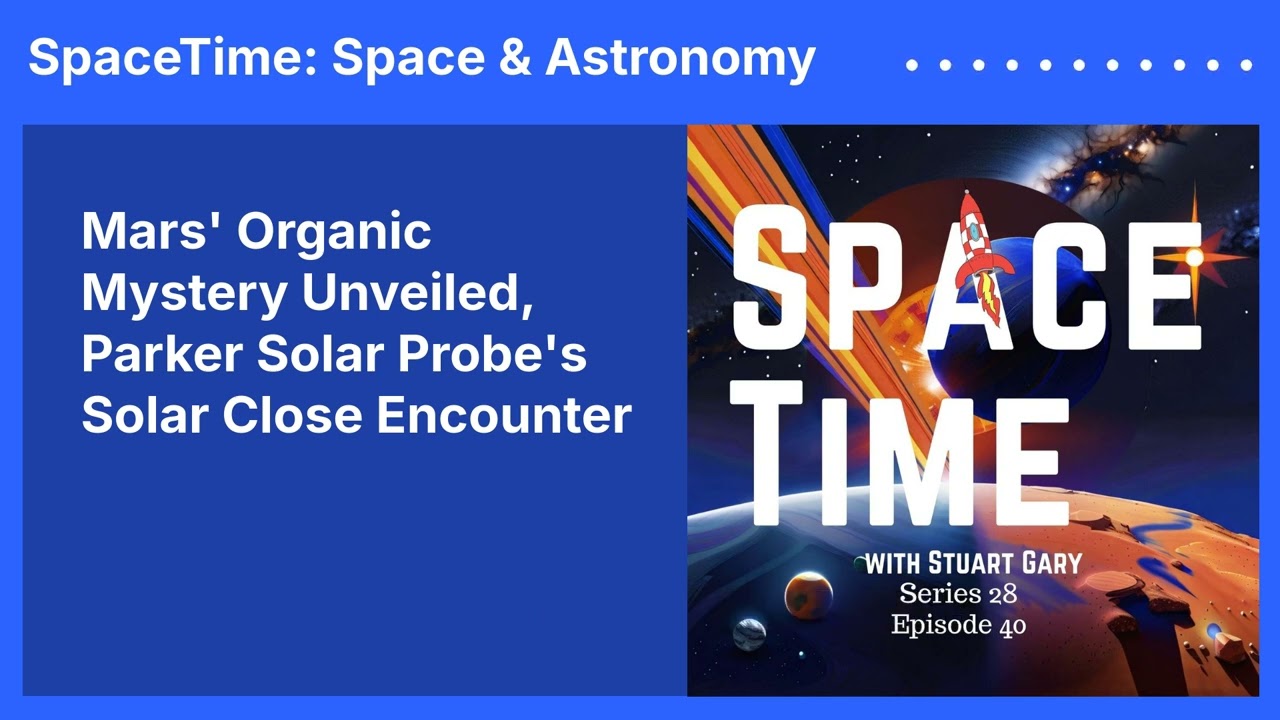 Space News TodayMars’ Organic Mystery Unveiled, Parker Solar Probe’s Solar Close EncounterSpaceTime Series 28 Episode 40
The Astronomy, Space and Science News Podcast
Largest Organic Molecule Discovered on Mars, Parker Solar Probe's Close Encounter with the Sun, and New Insights into Earth's Formation
In this episode of SpaceTime, we discuss the remarkable discovery made by NASA's Curiosity Rover, which has identified the largest organic molecules ever found on Mars. These molecules, potentially remnants of fatty acids, suggest that prebiotic chemistry may have progressed further on the Red Planet than previously thought. We delve into the implications of these findings for future Mars sample...2025-04-0224 min
Space News TodayMars’ Organic Mystery Unveiled, Parker Solar Probe’s Solar Close EncounterSpaceTime Series 28 Episode 40
The Astronomy, Space and Science News Podcast
Largest Organic Molecule Discovered on Mars, Parker Solar Probe's Close Encounter with the Sun, and New Insights into Earth's Formation
In this episode of SpaceTime, we discuss the remarkable discovery made by NASA's Curiosity Rover, which has identified the largest organic molecules ever found on Mars. These molecules, potentially remnants of fatty acids, suggest that prebiotic chemistry may have progressed further on the Red Planet than previously thought. We delve into the implications of these findings for future Mars sample...2025-04-0224 min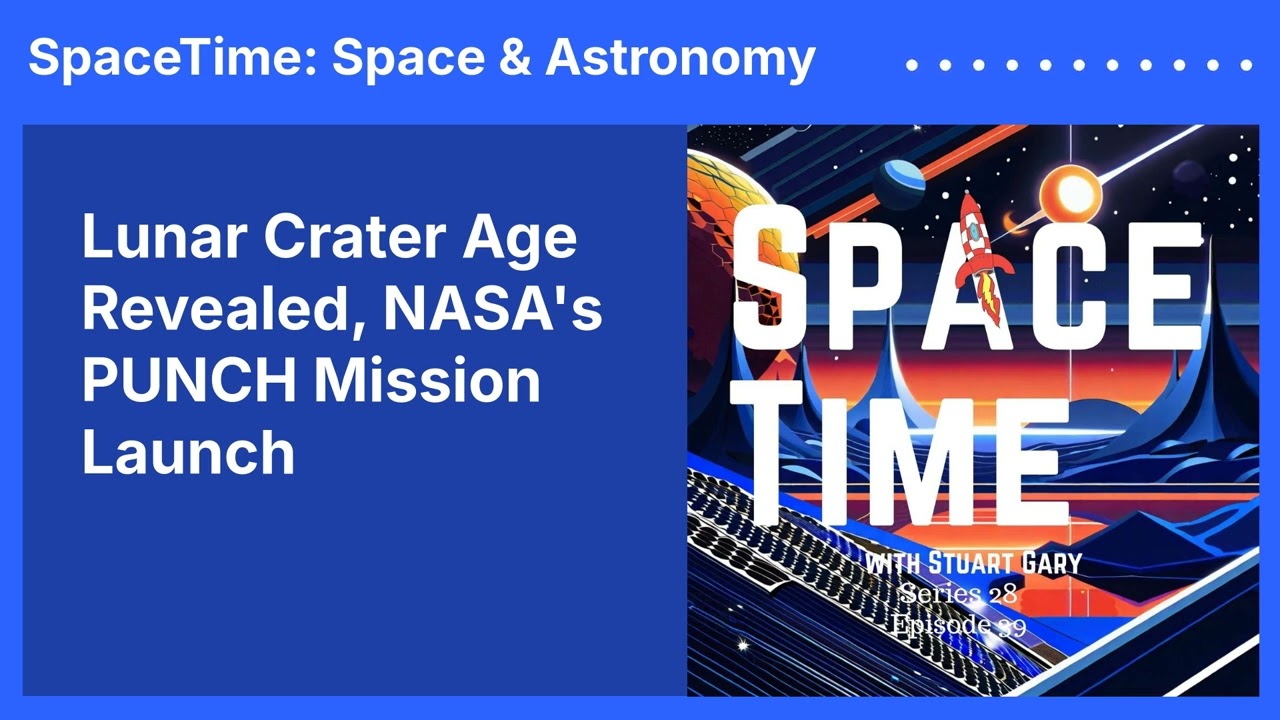 Space News TodayLunar Crater Age Revealed, NASA’s PUNCH Mission LaunchSpaceTime Series 28 Episode 39
The Astronomy, Space and Science News Podcast
Moon's Oldest Impact Crater Dated, NASA's Punch Mission Launches, and Europe's First Orbital Rocket Countdown
In this episode of SpaceTime, we reveal groundbreaking findings that pinpoint the age of the Moon's oldest and largest impact crater, the Aitken Basin. Recent analysis of lunar regolith collected by China's Chang'e 6 mission indicates that this massive structure was formed approximately 4.25 billion years ago by a colossal asteroid impact. We discuss how this discovery enhances our understanding of the Moon's geological history and its...2025-03-3123 min
Space News TodayLunar Crater Age Revealed, NASA’s PUNCH Mission LaunchSpaceTime Series 28 Episode 39
The Astronomy, Space and Science News Podcast
Moon's Oldest Impact Crater Dated, NASA's Punch Mission Launches, and Europe's First Orbital Rocket Countdown
In this episode of SpaceTime, we reveal groundbreaking findings that pinpoint the age of the Moon's oldest and largest impact crater, the Aitken Basin. Recent analysis of lunar regolith collected by China's Chang'e 6 mission indicates that this massive structure was formed approximately 4.25 billion years ago by a colossal asteroid impact. We discuss how this discovery enhances our understanding of the Moon's geological history and its...2025-03-3123 min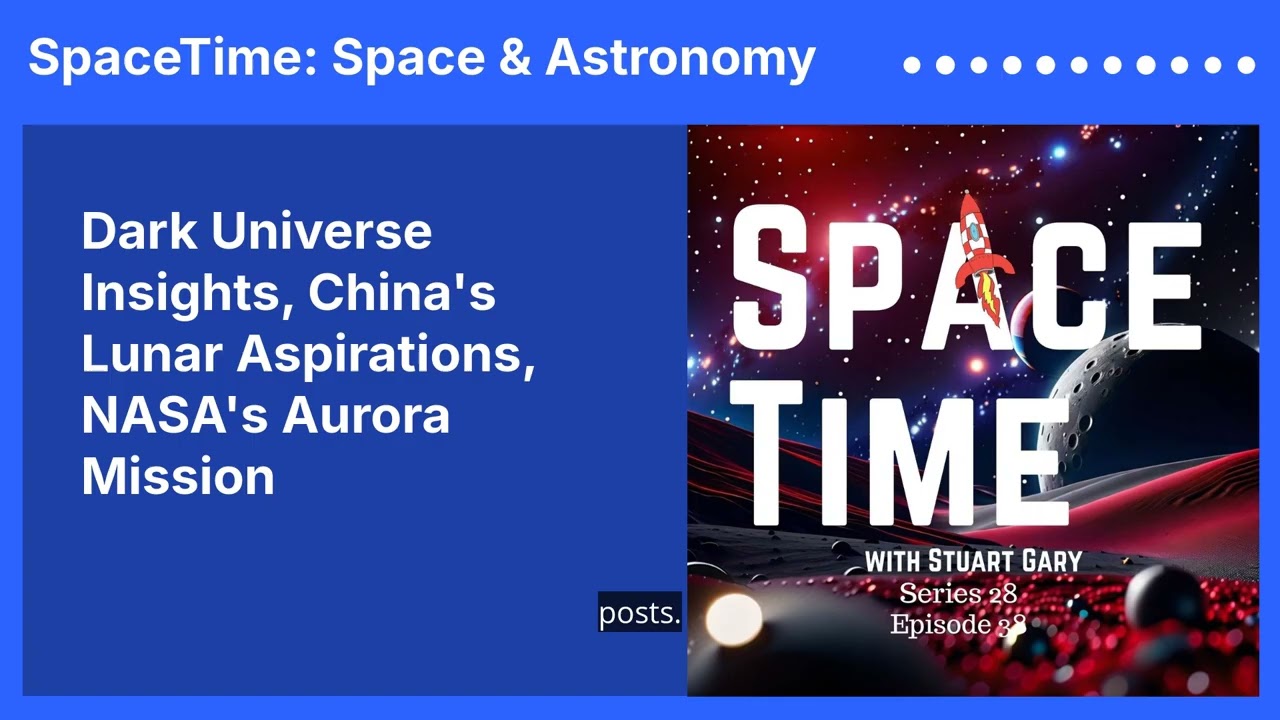 Space News TodayDark Universe Insights, China’s Lunar Aspirations, NASA’s Aurora MissionSpaceTime Series 28 Episode 38
The Astronomy, Space and Science News Podcast
Deep Insights into the Dark Universe, China's Lunar Ambitions, and NASA's New Aurora Mission
In this episode of SpaceTime, we dive into the latest findings from the European Space Agency's Euclid mission, which is shedding light on the mysterious force of dark energy and how it accelerates the universe's expansion. The recently released data reveals stunning images of billions of galaxies, providing crucial insights into the nature of dark energy and its effect on cosmic history. We discuss the mission's...2025-03-2818 min
Space News TodayDark Universe Insights, China’s Lunar Aspirations, NASA’s Aurora MissionSpaceTime Series 28 Episode 38
The Astronomy, Space and Science News Podcast
Deep Insights into the Dark Universe, China's Lunar Ambitions, and NASA's New Aurora Mission
In this episode of SpaceTime, we dive into the latest findings from the European Space Agency's Euclid mission, which is shedding light on the mysterious force of dark energy and how it accelerates the universe's expansion. The recently released data reveals stunning images of billions of galaxies, providing crucial insights into the nature of dark energy and its effect on cosmic history. We discuss the mission's...2025-03-2818 min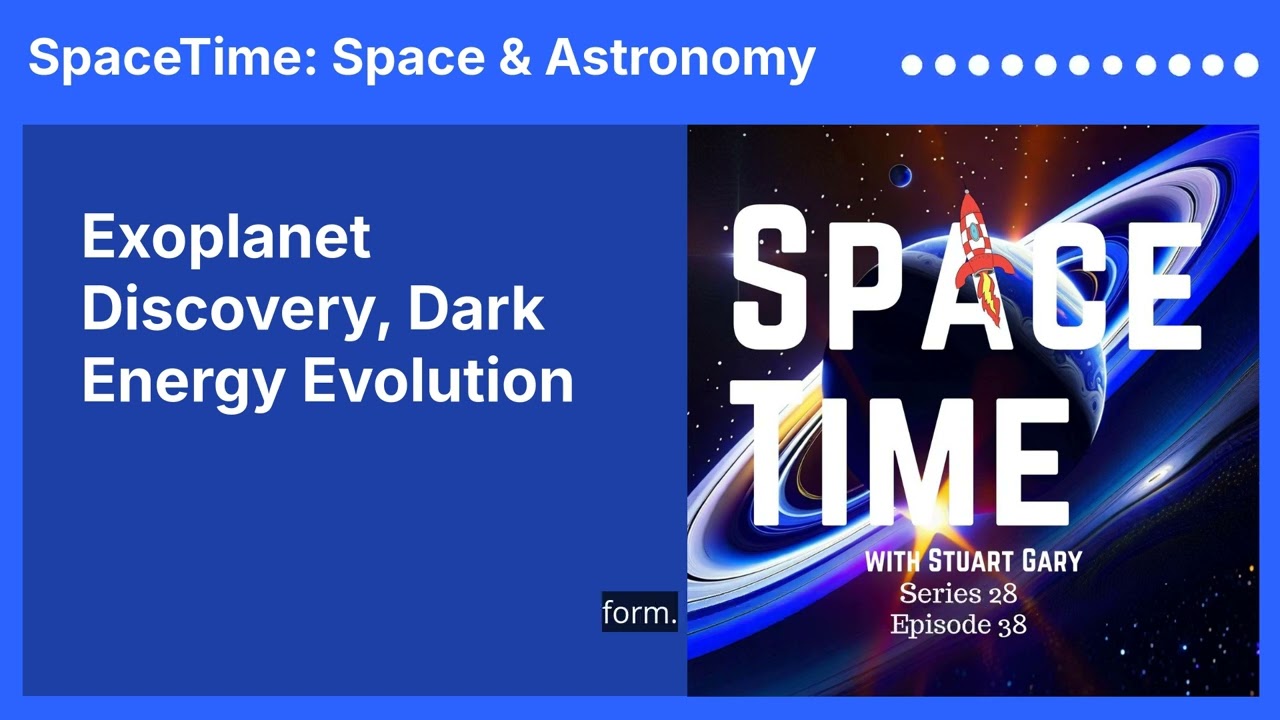 Space News TodayExoplanet Discovery, Dark Energy EvolutionSpaceTime Series 28 Episode 37
The Astronomy, Space and Science News Podcast
Exciting New Exoplanet Discovery, Evolving Dark Energy, and Insights into the Moon's Magnetic Field
In this episode of SpaceTime, we uncover the discovery of a potential new exoplanet, TOI 2818C, located over a thousand light years away in the constellation Papus. This intriguing planetary candidate is estimated to be 10 to 16 times the size of Earth and orbits its host star in less than 16 Earth days. We delve into the innovative transit timing variations method employed by astronomers, which revealed the...2025-03-2627 min
Space News TodayExoplanet Discovery, Dark Energy EvolutionSpaceTime Series 28 Episode 37
The Astronomy, Space and Science News Podcast
Exciting New Exoplanet Discovery, Evolving Dark Energy, and Insights into the Moon's Magnetic Field
In this episode of SpaceTime, we uncover the discovery of a potential new exoplanet, TOI 2818C, located over a thousand light years away in the constellation Papus. This intriguing planetary candidate is estimated to be 10 to 16 times the size of Earth and orbits its host star in less than 16 Earth days. We delve into the innovative transit timing variations method employed by astronomers, which revealed the...2025-03-2627 min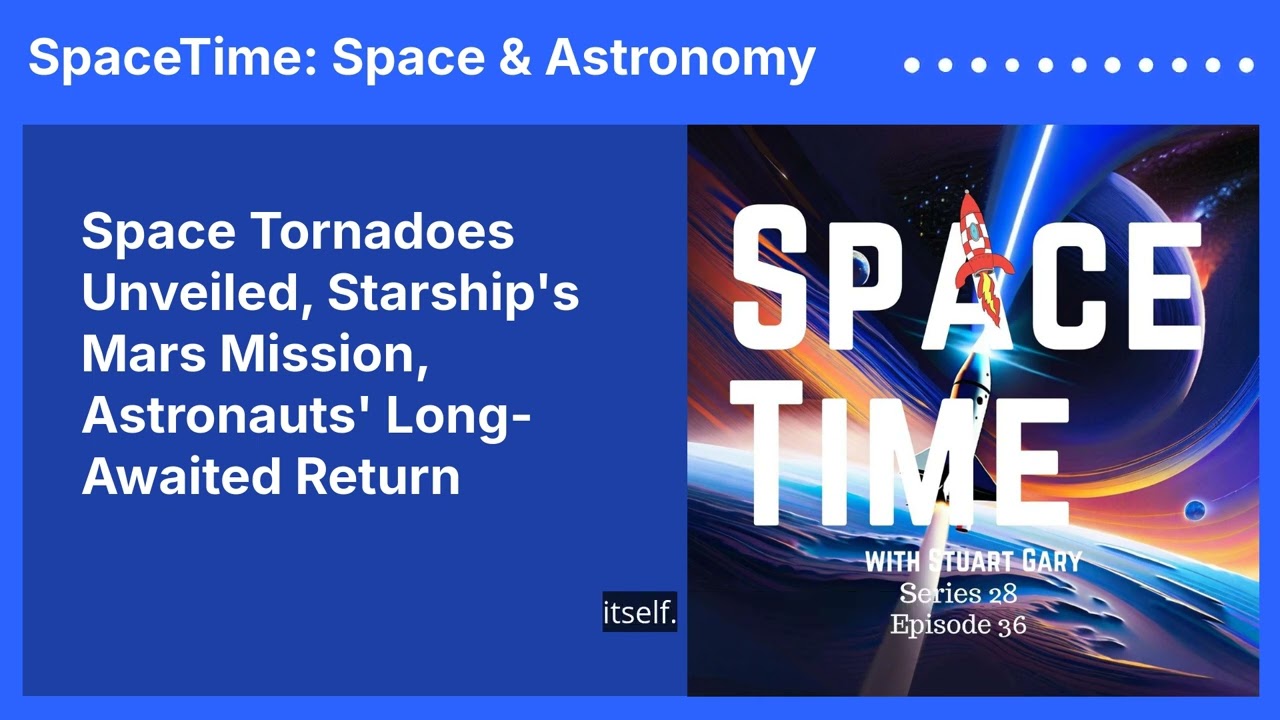 Space News TodaySpace Tornadoes Unveiled, Starship’s Mars Mission, Astronauts’ Long-Awaited ReturnSpaceTime Series 28 Episode 36
The Astronomy, Space and Science News Podcast
Space Tornadoes Discovered in the Milky Way's Core, SpaceX's Starship to Undertake a Mission to Mars Next Year, and Stranded Astronauts Finally Return Home After Nine Months in Space
In this episode of SpaceTime, we explore the astonishing discovery of enormous space tornadoes swirling in the Milky Way's central core. Astronomers have unveiled these spectacular formations, detected using the Atacama Large Millimeter/submillimeter Array (ALMA), which reveal the dynamic processes surrounding the supermassive black hole Sagittarius A*. We discuss the...2025-03-2428 min
Space News TodaySpace Tornadoes Unveiled, Starship’s Mars Mission, Astronauts’ Long-Awaited ReturnSpaceTime Series 28 Episode 36
The Astronomy, Space and Science News Podcast
Space Tornadoes Discovered in the Milky Way's Core, SpaceX's Starship to Undertake a Mission to Mars Next Year, and Stranded Astronauts Finally Return Home After Nine Months in Space
In this episode of SpaceTime, we explore the astonishing discovery of enormous space tornadoes swirling in the Milky Way's central core. Astronomers have unveiled these spectacular formations, detected using the Atacama Large Millimeter/submillimeter Array (ALMA), which reveal the dynamic processes surrounding the supermassive black hole Sagittarius A*. We discuss the...2025-03-2428 min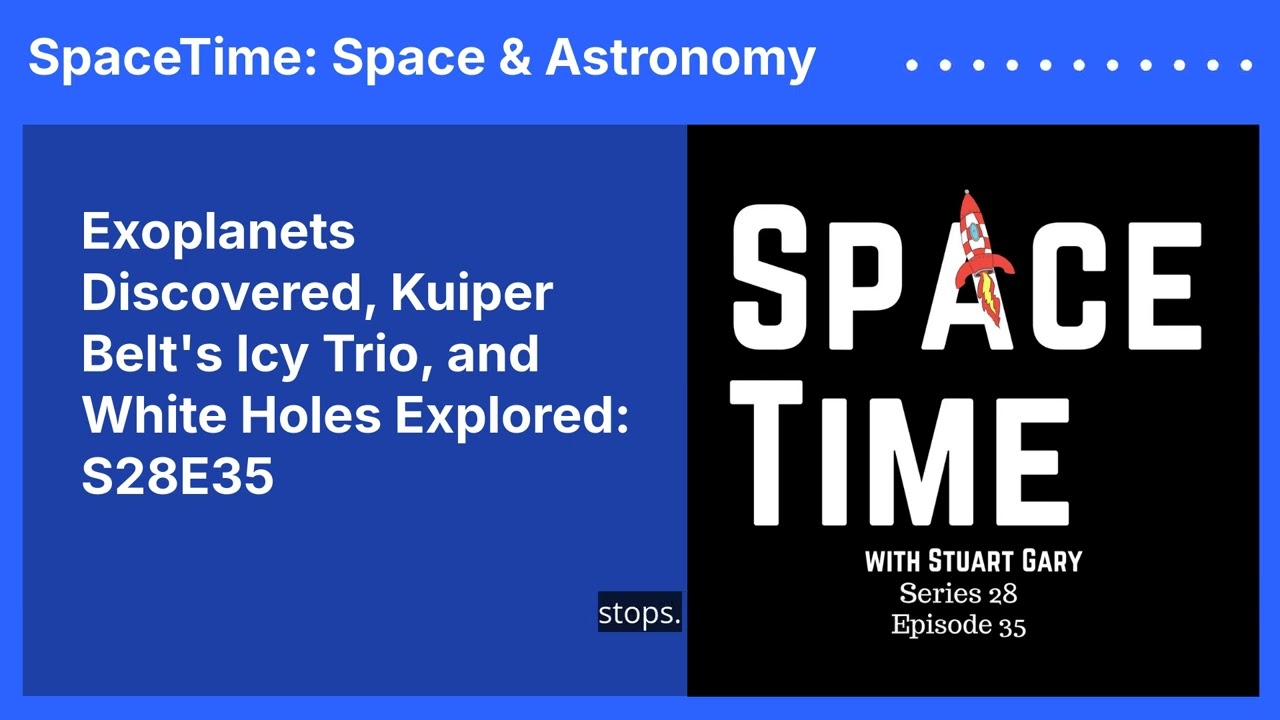 Space News TodayExoplanets Discovered, Kuiper Belt’s Icy Trio, and White Holes Explored: S28E35SpaceTime Series 28 Episode 35
The Astronomy, Space and Science News Podcast
Discovery of a New Planetary System, Stable Trio of Icy Worlds in the Kuiper Belt, and the Fascinating Concept of White Holes
In this episode of SpaceTime, we delve into the groundbreaking discovery of a nearby planetary system orbiting Barnard's Star, the second closest star system to the Sun. Located just 5.96 light years away, this system comprises four small planets, each 20 to 30% the mass of Earth, revealing new insights into the potential for life beyond our solar system. We discuss...2025-03-2120 min
Space News TodayExoplanets Discovered, Kuiper Belt’s Icy Trio, and White Holes Explored: S28E35SpaceTime Series 28 Episode 35
The Astronomy, Space and Science News Podcast
Discovery of a New Planetary System, Stable Trio of Icy Worlds in the Kuiper Belt, and the Fascinating Concept of White Holes
In this episode of SpaceTime, we delve into the groundbreaking discovery of a nearby planetary system orbiting Barnard's Star, the second closest star system to the Sun. Located just 5.96 light years away, this system comprises four small planets, each 20 to 30% the mass of Earth, revealing new insights into the potential for life beyond our solar system. We discuss...2025-03-2120 min Space News TodaySupernovae, Stellar Mapping, and Saturn’s New Moons: S28E34SpaceTime Series 28 Episode 34
The Astronomy, Space and Science News Podcast
Supernovae's Role in Mass Extinctions, NASA's Stellar Mapping Mission, and New Moons of Saturn
In this episode of SpaceTime, we explore a fascinating new study suggesting that nearby supernovae could have triggered at least two of Earth's mass extinction events. These violent stellar explosions may have stripped away the ozone layer, exposing life to harmful ultraviolet radiation and leading to significant ecological upheaval. We delve into the implications of these findings and how they reshape our understanding of Earth's history. 2025-03-1929 min
Space News TodaySupernovae, Stellar Mapping, and Saturn’s New Moons: S28E34SpaceTime Series 28 Episode 34
The Astronomy, Space and Science News Podcast
Supernovae's Role in Mass Extinctions, NASA's Stellar Mapping Mission, and New Moons of Saturn
In this episode of SpaceTime, we explore a fascinating new study suggesting that nearby supernovae could have triggered at least two of Earth's mass extinction events. These violent stellar explosions may have stripped away the ozone layer, exposing life to harmful ultraviolet radiation and leading to significant ecological upheaval. We delve into the implications of these findings and how they reshape our understanding of Earth's history. 2025-03-1929 min Space News TodayAncient Impacts, Lunar Ice Potential, and the Return of X37B: S28E33SpaceTime Series 28 Episode 33
The Astronomy, Space and Science News Podcast
World's Oldest Meteor Impact Crater, Water Ice on the Moon, and the Secretive X37B Shuttle Returns
In this episode of SpaceTime, we unveil the discovery of the world's oldest known meteor impact crater located in Western Australia. This ancient structure, dating back 3.5 billion years, was identified in the Pilbara region and challenges previous notions about Earth's geological history and the origins of life. We discuss the implications of this significant find, including its potential to reshape our understanding of...2025-03-1724 min
Space News TodayAncient Impacts, Lunar Ice Potential, and the Return of X37B: S28E33SpaceTime Series 28 Episode 33
The Astronomy, Space and Science News Podcast
World's Oldest Meteor Impact Crater, Water Ice on the Moon, and the Secretive X37B Shuttle Returns
In this episode of SpaceTime, we unveil the discovery of the world's oldest known meteor impact crater located in Western Australia. This ancient structure, dating back 3.5 billion years, was identified in the Pilbara region and challenges previous notions about Earth's geological history and the origins of life. We discuss the implications of this significant find, including its potential to reshape our understanding of...2025-03-1724 min Space News TodayMars’ Ancient Beaches, Water’s Early Emergence, and Voyager’s Power Struggles: S28E31SpaceTime Series 28 Episode 31
The Astronomy, Space and Science News Podcast
Beaches on Mars, Water's Early Emergence in the Universe, and Voyager's Power Conservation
In this episode of SpaceTime, we delve into the groundbreaking confirmation by China's Zhurong Mars rover, which has revealed that ancient ocean beaches once graced Mars' northern hemisphere. Using advanced ground-penetrating radar, scientists have discovered sedimentary structures resembling Earth's coastal deposits, suggesting that the Red Planet once harbored a significant body of water, potentially creating habitable environments for microbial life.
Water's Early Role in...2025-03-1229 min
Space News TodayMars’ Ancient Beaches, Water’s Early Emergence, and Voyager’s Power Struggles: S28E31SpaceTime Series 28 Episode 31
The Astronomy, Space and Science News Podcast
Beaches on Mars, Water's Early Emergence in the Universe, and Voyager's Power Conservation
In this episode of SpaceTime, we delve into the groundbreaking confirmation by China's Zhurong Mars rover, which has revealed that ancient ocean beaches once graced Mars' northern hemisphere. Using advanced ground-penetrating radar, scientists have discovered sedimentary structures resembling Earth's coastal deposits, suggesting that the Red Planet once harbored a significant body of water, potentially creating habitable environments for microbial life.
Water's Early Role in...2025-03-1229 min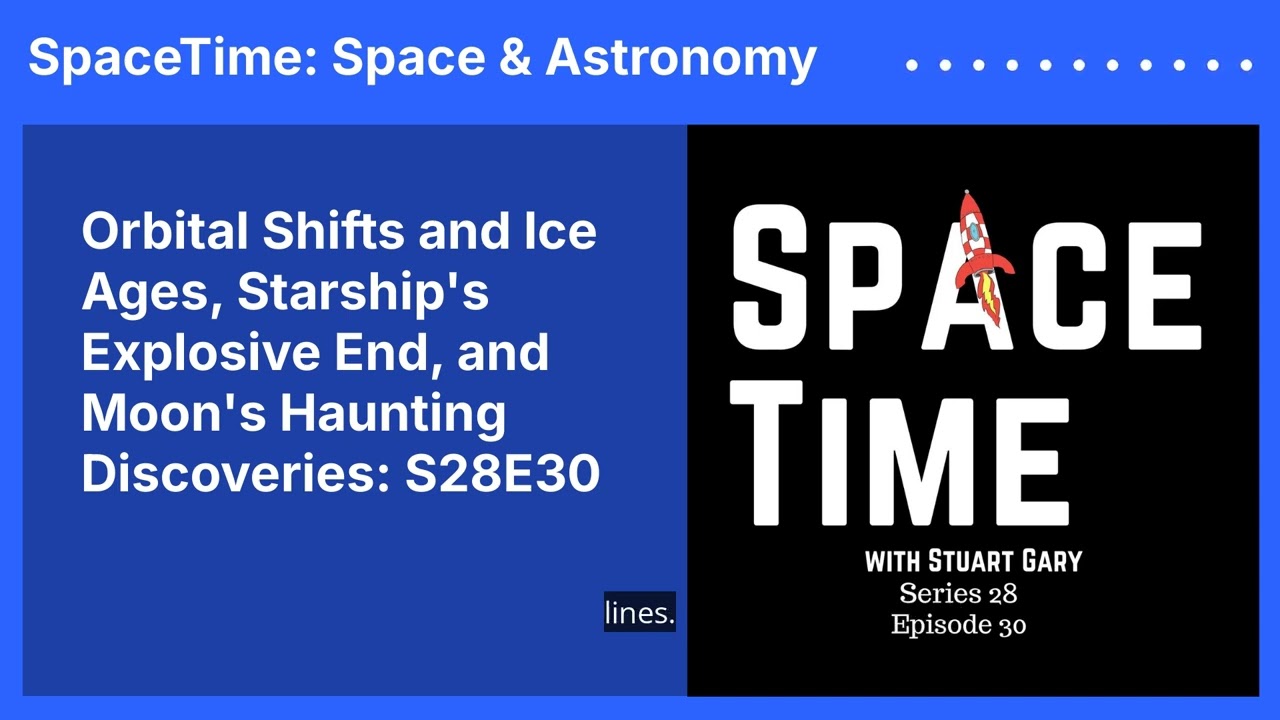 Space News TodayOrbital Shifts and Ice Ages, Starship’s Explosive End, and Moon’s Haunting Discoveries: S28E30SpaceTime Series 28 Episode 30
The Astronomy, Space and Science News Podcast
Earth's Jessica Cycles, Starship's Latest Failure, and Lunar Landings in Trouble
In this episode of SpaceTime, we explore a groundbreaking discovery linking Earth's ice age cycles to its orbital shifts. Recent research indicates a predictable pattern for glacial and interglacial periods, suggesting the onset of the next ice age could occur in approximately 10,000 years. This insight stems from a million-year climate record that matches changes in Earth's orbit with significant climate shifts.
Starship's Crash and Burn
2025-03-1031 min
Space News TodayOrbital Shifts and Ice Ages, Starship’s Explosive End, and Moon’s Haunting Discoveries: S28E30SpaceTime Series 28 Episode 30
The Astronomy, Space and Science News Podcast
Earth's Jessica Cycles, Starship's Latest Failure, and Lunar Landings in Trouble
In this episode of SpaceTime, we explore a groundbreaking discovery linking Earth's ice age cycles to its orbital shifts. Recent research indicates a predictable pattern for glacial and interglacial periods, suggesting the onset of the next ice age could occur in approximately 10,000 years. This insight stems from a million-year climate record that matches changes in Earth's orbit with significant climate shifts.
Starship's Crash and Burn
2025-03-1031 min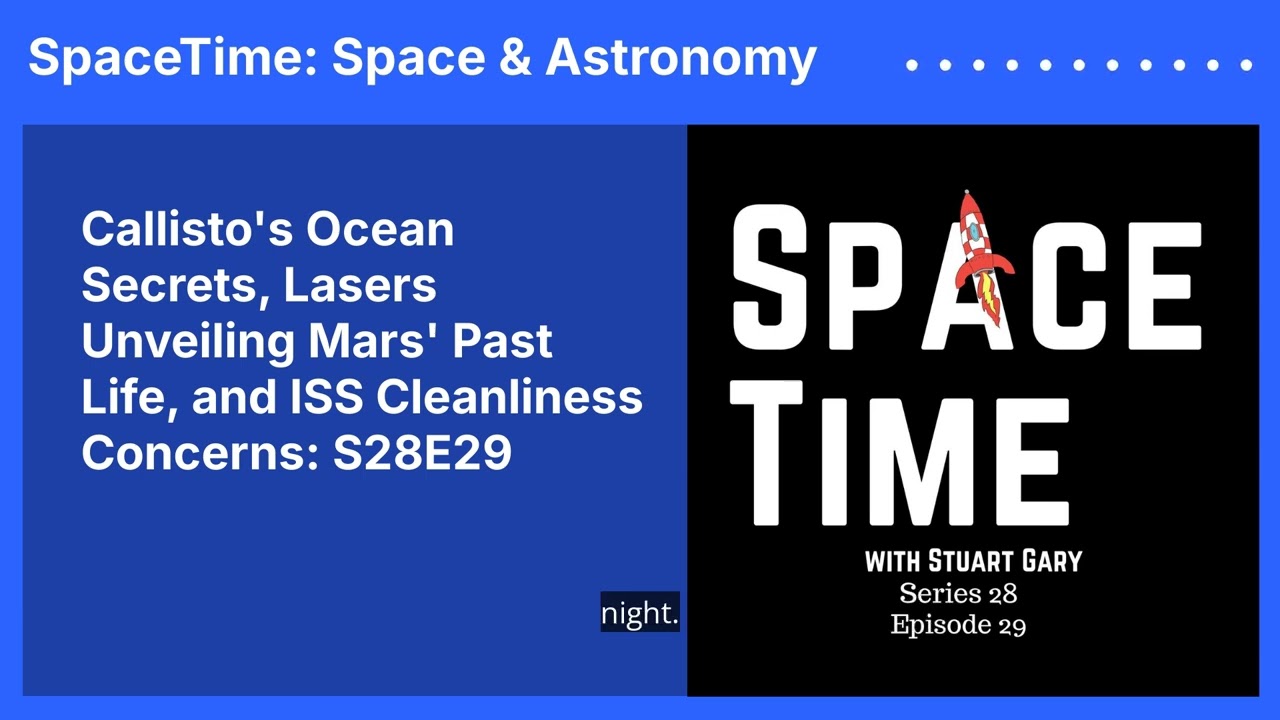 Space News TodayCallisto’s Ocean Secrets, Lasers Unveiling Mars’ Past Life, and ISS Cleanliness Concerns: S28E29SpaceTime Series 28 Episode 29
The Astronomy, Space and Science News Podcast
Exploring Callisto's Ocean Potential, Laser Fossil Detection on Mars, and ISS Cleanliness Concerns
In this episode of SpaceTime, we dive into exciting new research suggesting that Jupiter's moon Callisto may harbor a subsurface ocean, potentially making it another ocean world in our solar system. This revelation builds on data from NASA's Galileo spacecraft, which hinted at the presence of a salty liquid water ocean beneath Callisto's icy crust. Advanced modeling techniques have strengthened these claims, setting the stage for further...2025-03-0736 min
Space News TodayCallisto’s Ocean Secrets, Lasers Unveiling Mars’ Past Life, and ISS Cleanliness Concerns: S28E29SpaceTime Series 28 Episode 29
The Astronomy, Space and Science News Podcast
Exploring Callisto's Ocean Potential, Laser Fossil Detection on Mars, and ISS Cleanliness Concerns
In this episode of SpaceTime, we dive into exciting new research suggesting that Jupiter's moon Callisto may harbor a subsurface ocean, potentially making it another ocean world in our solar system. This revelation builds on data from NASA's Galileo spacecraft, which hinted at the presence of a salty liquid water ocean beneath Callisto's icy crust. Advanced modeling techniques have strengthened these claims, setting the stage for further...2025-03-0736 min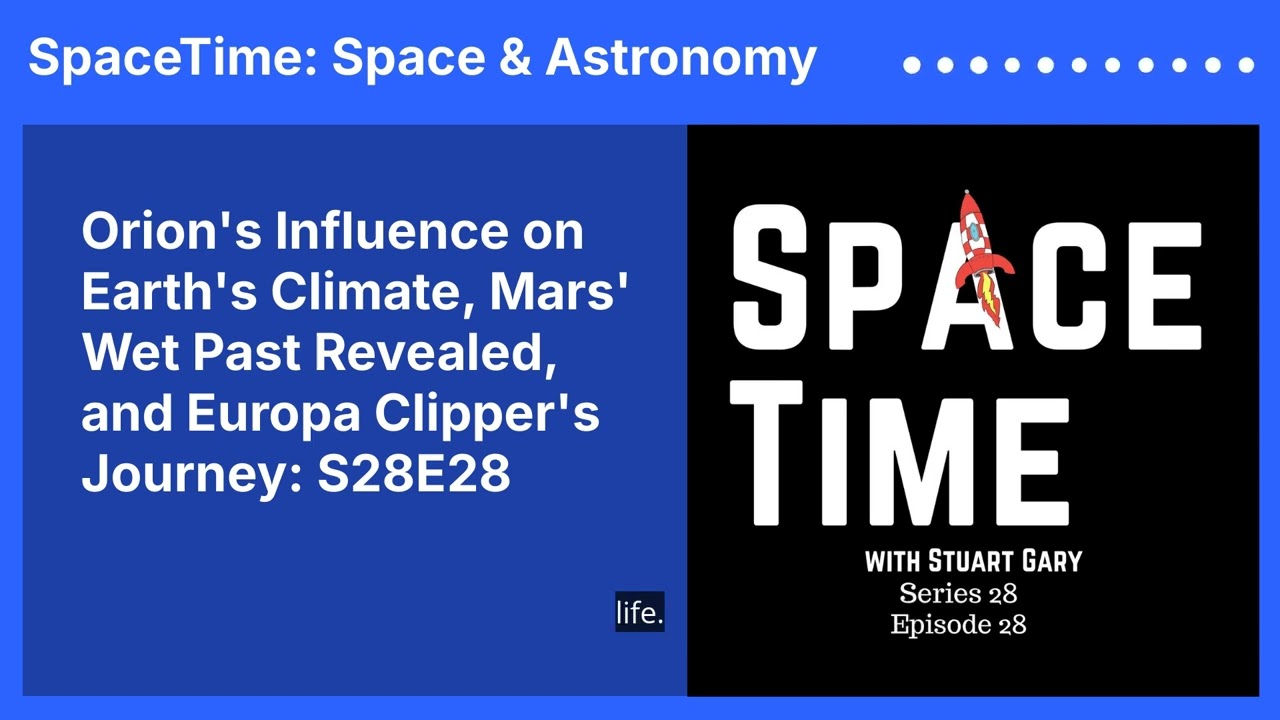 Space News TodayOrion’s Influence on Earth’s Climate, Mars’ Wet Past Revealed, and Europa Clipper’s Journey: S28E28The Astronomy, Space and Science News Podcast
Earth's Climate Shaped by Orion, New Insights into Mars' Red Color, and NASA's Europa Clipper Mission Update
In this episode of SpaceTime, we explore a groundbreaking study suggesting that Earth's climate may have undergone significant changes around 14 million years ago due to our solar system's journey through the Orion star-forming region. Researchers propose that this passage may have compressed the heliosphere, increasing interstellar dust influx and potentially impacting Earth's climate and geological records.
Revisiting Mars' Iconic Hue
We also discuss...2025-03-0522 min
Space News TodayOrion’s Influence on Earth’s Climate, Mars’ Wet Past Revealed, and Europa Clipper’s Journey: S28E28The Astronomy, Space and Science News Podcast
Earth's Climate Shaped by Orion, New Insights into Mars' Red Color, and NASA's Europa Clipper Mission Update
In this episode of SpaceTime, we explore a groundbreaking study suggesting that Earth's climate may have undergone significant changes around 14 million years ago due to our solar system's journey through the Orion star-forming region. Researchers propose that this passage may have compressed the heliosphere, increasing interstellar dust influx and potentially impacting Earth's climate and geological records.
Revisiting Mars' Iconic Hue
We also discuss...2025-03-0522 min Space News TodayAsteroid 2024 YR4’s Threat Averted, Martian Core Study Breakthrough, and NASA’s Latest Lunar...SpaceTime Series 28 Episode 27
The Astronomy, Space and Science News Podcast
Asteroid 2024 YR4 Impact Risk Reduced, Insights into Mars' Core, and NASA's Lunar Mission Update
In this episode of SpaceTime, we bring you encouraging news about asteroid 2024 YR4, with new observations indicating that the chances of it impacting Earth have plummeted to just 0.001%. Initially flagged as a potential threat, this asteroid has been closely monitored, and the latest data from the Very Large Telescope has allowed astronomers to refine its orbit and rule out any collision risk for 2032.
...2025-03-0328 min
Space News TodayAsteroid 2024 YR4’s Threat Averted, Martian Core Study Breakthrough, and NASA’s Latest Lunar...SpaceTime Series 28 Episode 27
The Astronomy, Space and Science News Podcast
Asteroid 2024 YR4 Impact Risk Reduced, Insights into Mars' Core, and NASA's Lunar Mission Update
In this episode of SpaceTime, we bring you encouraging news about asteroid 2024 YR4, with new observations indicating that the chances of it impacting Earth have plummeted to just 0.001%. Initially flagged as a potential threat, this asteroid has been closely monitored, and the latest data from the Very Large Telescope has allowed astronomers to refine its orbit and rule out any collision risk for 2032.
...2025-03-0328 min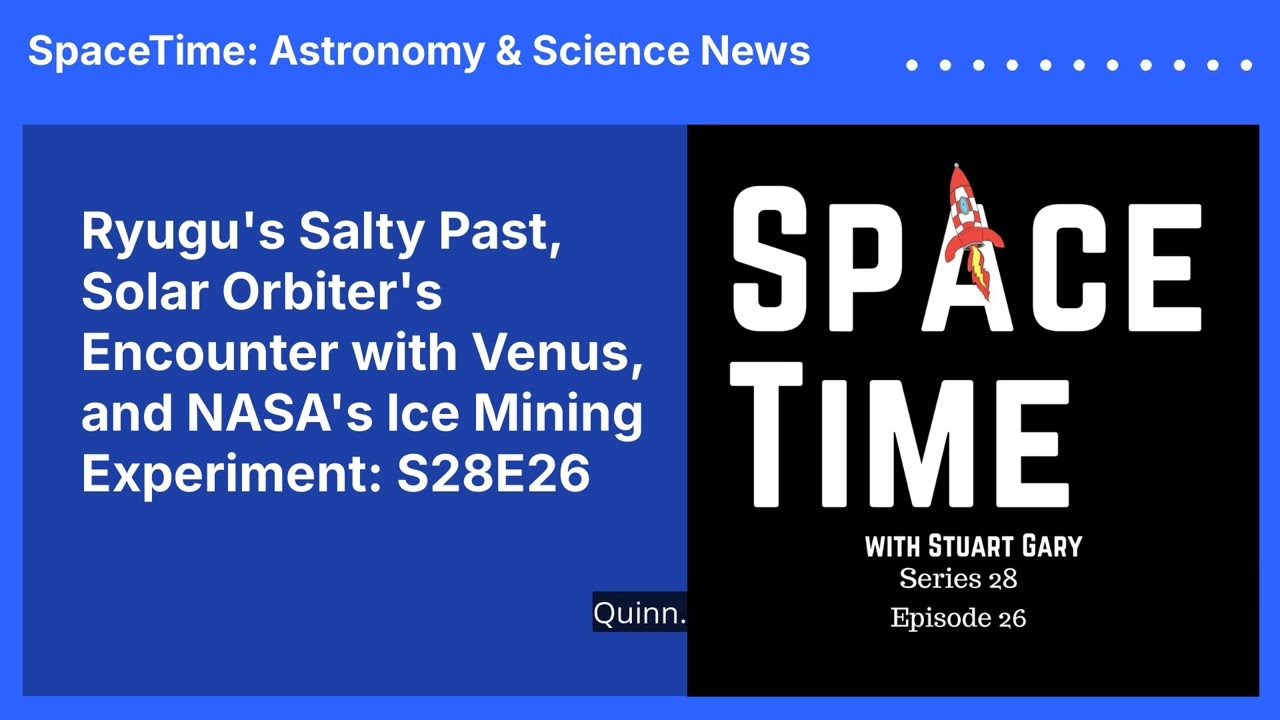 Space News TodayRyugu’s Salty Past, Solar Orbiter’s Encounter with Venus, and NASA’s Ice Mining Experiment: S28E26SpaceTime Series 28 Episode 26
The Astronomy, Space and Science News Podcast
Asteroid Ryugu's Salty Secrets, Solar Orbiter's Venus Encounter, and NASA's Lunar Resource Exploration
In this episode of SpaceTime, we delve into the recent findings from the asteroid Richie, where scientists have discovered evidence of salt minerals, hinting at the presence of saline water in the outer solar system. This exciting revelation parallels previous discoveries from asteroid Bennu and enhances our understanding of the chemical history of these celestial bodies.
Europe's Solar Orbiter and Venus
...2025-02-2820 min
Space News TodayRyugu’s Salty Past, Solar Orbiter’s Encounter with Venus, and NASA’s Ice Mining Experiment: S28E26SpaceTime Series 28 Episode 26
The Astronomy, Space and Science News Podcast
Asteroid Ryugu's Salty Secrets, Solar Orbiter's Venus Encounter, and NASA's Lunar Resource Exploration
In this episode of SpaceTime, we delve into the recent findings from the asteroid Richie, where scientists have discovered evidence of salt minerals, hinting at the presence of saline water in the outer solar system. This exciting revelation parallels previous discoveries from asteroid Bennu and enhances our understanding of the chemical history of these celestial bodies.
Europe's Solar Orbiter and Venus
...2025-02-2820 min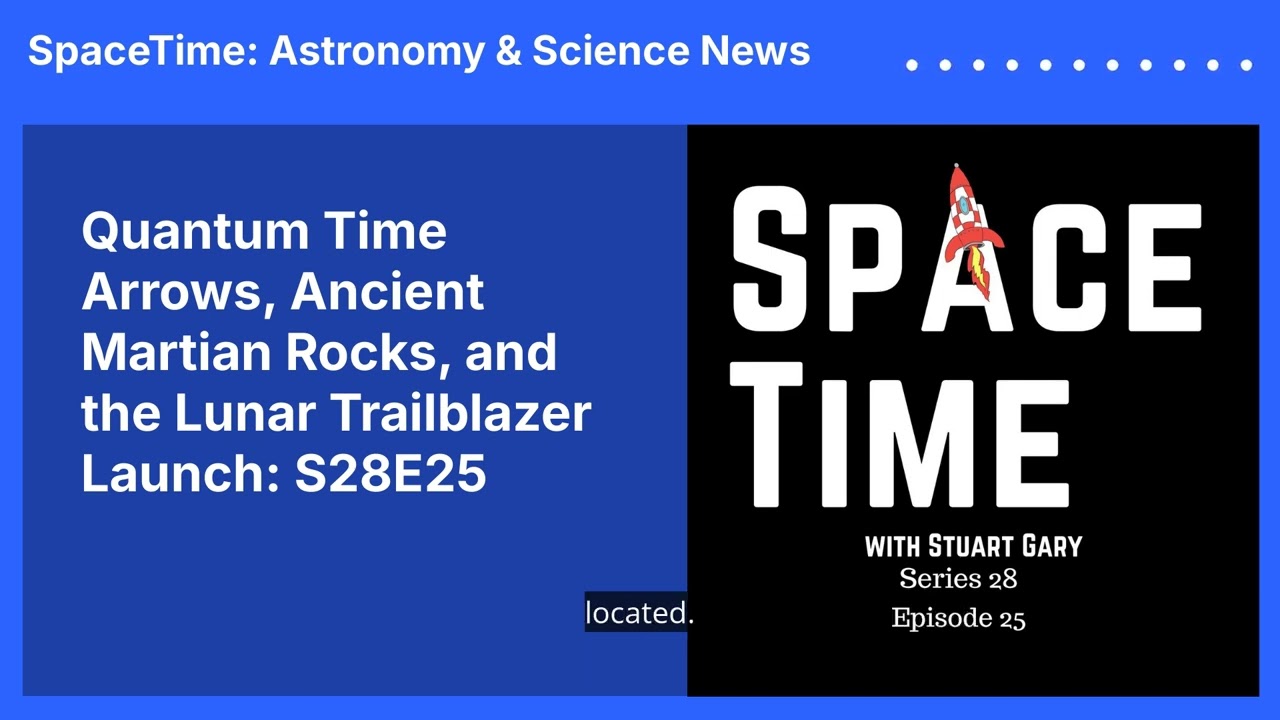 Space News TodayQuantum Time Arrows, Ancient Martian Rocks, and the Lunar Trailblazer Launch: S28E25SpaceTime Series 28 Episode 25
The Astronomy, Space and Science News Podcast
Two Arrows of Time, Ancient Rocks on Mars, and NASA's Lunar Trailblazer Mission
In this episode of SpaceTime, we delve into a groundbreaking discovery by physicists revealing the possibility of two distinct arrows of time emerging from the quantum realm. This fascinating research challenges our conventional understanding of time, suggesting that it may not flow in just one direction, but could theoretically move both forwards and backwards under certain quantum conditions.
NASA's Perseverance Rover Finds Ancient Martian...2025-02-2623 min
Space News TodayQuantum Time Arrows, Ancient Martian Rocks, and the Lunar Trailblazer Launch: S28E25SpaceTime Series 28 Episode 25
The Astronomy, Space and Science News Podcast
Two Arrows of Time, Ancient Rocks on Mars, and NASA's Lunar Trailblazer Mission
In this episode of SpaceTime, we delve into a groundbreaking discovery by physicists revealing the possibility of two distinct arrows of time emerging from the quantum realm. This fascinating research challenges our conventional understanding of time, suggesting that it may not flow in just one direction, but could theoretically move both forwards and backwards under certain quantum conditions.
NASA's Perseverance Rover Finds Ancient Martian...2025-02-2623 min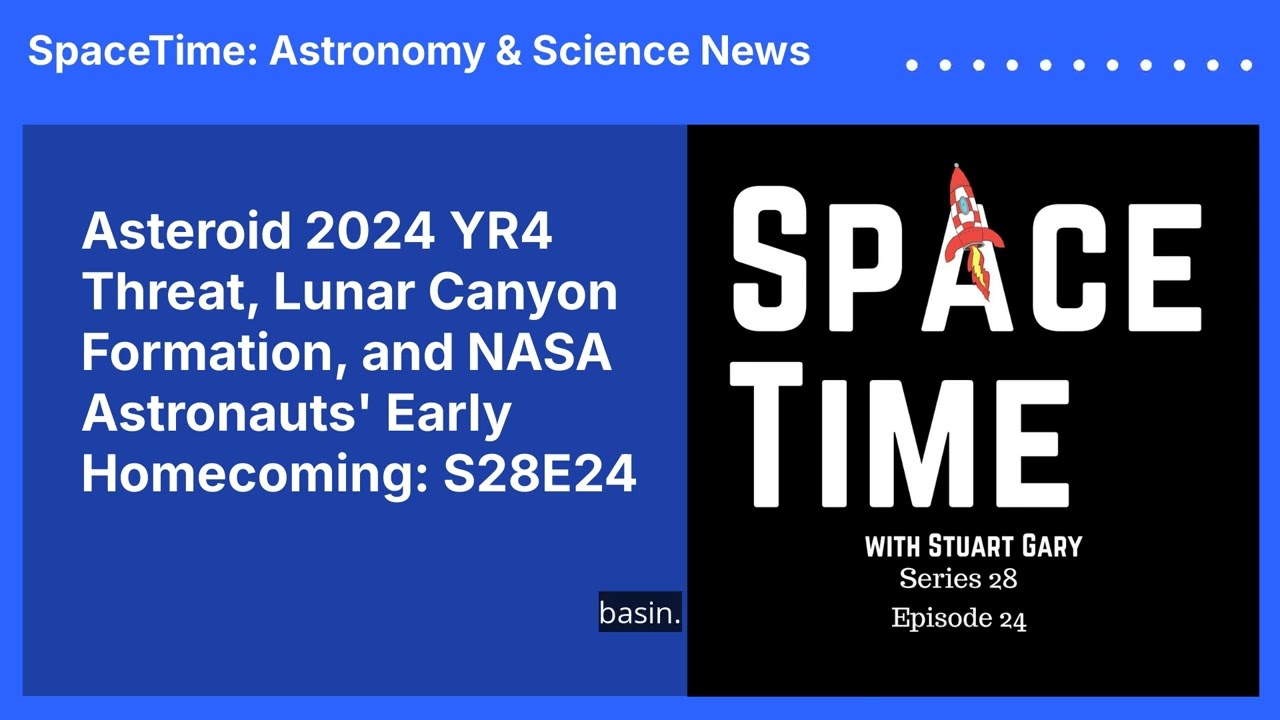 Space News TodayAsteroid 2024 YR4 Threat, Lunar Canyon Formation, and NASA Astronauts’ Early Homecoming: S28E24SpaceTime Series 28 Episode 24
The Astronomy, Space and Science News Podcast
Asteroid Impact Odds, Lunar Grand Canyons, and NASA's Stranded Astronauts
In this episode of SpaceTime, we discuss the alarming increase in the odds of asteroid 2024 YR4 impacting Earth, now estimated at 3.1% for December 22, 2032. This asteroid, measuring between 40 to 90 meters, poses a significant threat, and we delve into the implications of planetary defense strategies that could be employed to mitigate this risk.
The Origins of the Moon's Grand Canyons
We also explore new research that...2025-02-2523 min
Space News TodayAsteroid 2024 YR4 Threat, Lunar Canyon Formation, and NASA Astronauts’ Early Homecoming: S28E24SpaceTime Series 28 Episode 24
The Astronomy, Space and Science News Podcast
Asteroid Impact Odds, Lunar Grand Canyons, and NASA's Stranded Astronauts
In this episode of SpaceTime, we discuss the alarming increase in the odds of asteroid 2024 YR4 impacting Earth, now estimated at 3.1% for December 22, 2032. This asteroid, measuring between 40 to 90 meters, poses a significant threat, and we delve into the implications of planetary defense strategies that could be employed to mitigate this risk.
The Origins of the Moon's Grand Canyons
We also explore new research that...2025-02-2523 min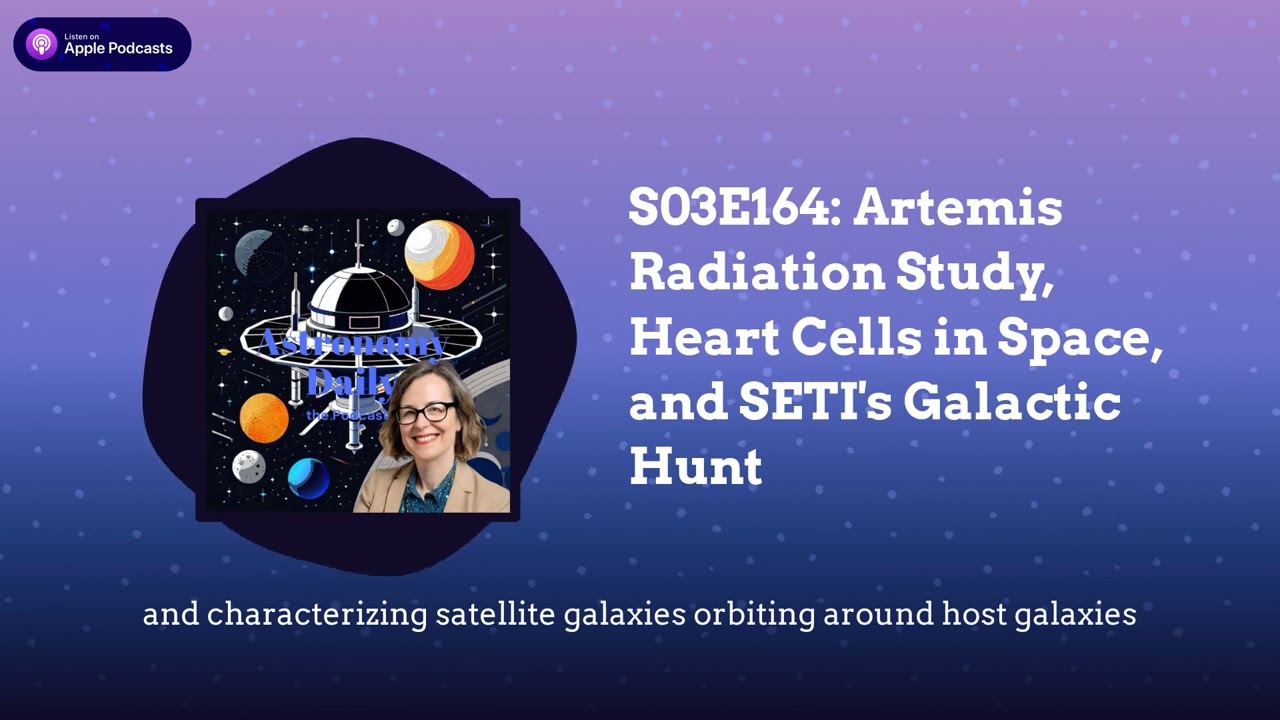 Space News TodayS03E164: Artemis Radiation Study, Heart Cells in Space, and SETI’s Galactic HuntAstronomy Daily - The Podcast: S03E164
Welcome to Astronomy Daily, your source for the latest space and Astronomy news. I'm your host, Anna, and today we have an exciting lineup of stories that span from Earth's orbit to distant galaxies. Buckle up and get ready for a thrilling journey through the cosmos.
Highlights:
- Spaceflight Radiation Exposure: During NASA's Artemis I mission, scientists gathered crucial data on radiation exposure using mannequins and advanced sensors. Findings show that enhanced radiation shielding areas provided up to four times more protection, validating...2025-01-1708 min
Space News TodayS03E164: Artemis Radiation Study, Heart Cells in Space, and SETI’s Galactic HuntAstronomy Daily - The Podcast: S03E164
Welcome to Astronomy Daily, your source for the latest space and Astronomy news. I'm your host, Anna, and today we have an exciting lineup of stories that span from Earth's orbit to distant galaxies. Buckle up and get ready for a thrilling journey through the cosmos.
Highlights:
- Spaceflight Radiation Exposure: During NASA's Artemis I mission, scientists gathered crucial data on radiation exposure using mannequins and advanced sensors. Findings show that enhanced radiation shielding areas provided up to four times more protection, validating...2025-01-1708 min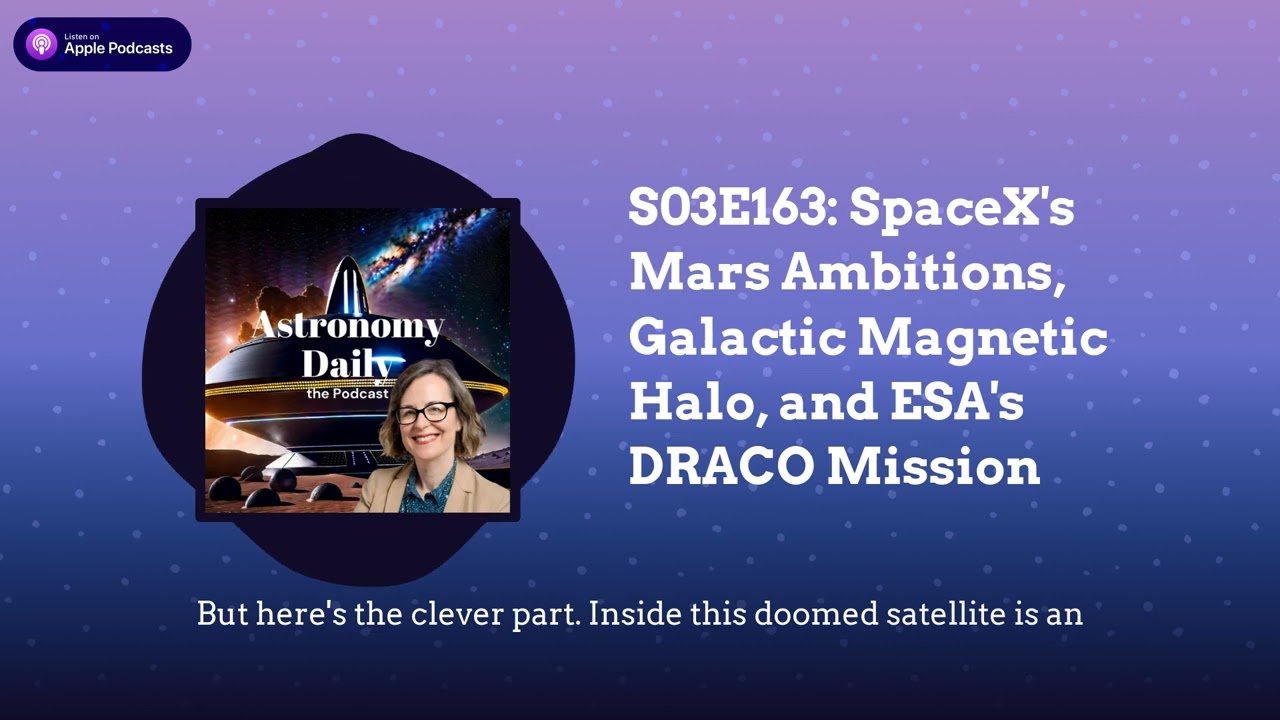 Space News TodayS03E163: SpaceX’s Mars Ambitions, Galactic Magnetic Halo, and ESA’s DRACO MissionAstronomy Daily - The Podcast: S03E163
Welcome to Astronomy Daily, your source for the latest space and Astronomy news. I'm your host, Anna, and today we'll be covering a range of exciting topics, from SpaceX's ambitious Mars plans to new discoveries about our galaxy's magnetic halo. Strap in for a cosmic journey as we explore the frontiers of space exploration and scientific discovery.
Highlights:
- SpaceX's Mars Missions : Elon Musk has announced that SpaceX aims to launch approximately five uncrewed starship missions to Mars within the next two years...2025-01-1708 min
Space News TodayS03E163: SpaceX’s Mars Ambitions, Galactic Magnetic Halo, and ESA’s DRACO MissionAstronomy Daily - The Podcast: S03E163
Welcome to Astronomy Daily, your source for the latest space and Astronomy news. I'm your host, Anna, and today we'll be covering a range of exciting topics, from SpaceX's ambitious Mars plans to new discoveries about our galaxy's magnetic halo. Strap in for a cosmic journey as we explore the frontiers of space exploration and scientific discovery.
Highlights:
- SpaceX's Mars Missions : Elon Musk has announced that SpaceX aims to launch approximately five uncrewed starship missions to Mars within the next two years...2025-01-1708 min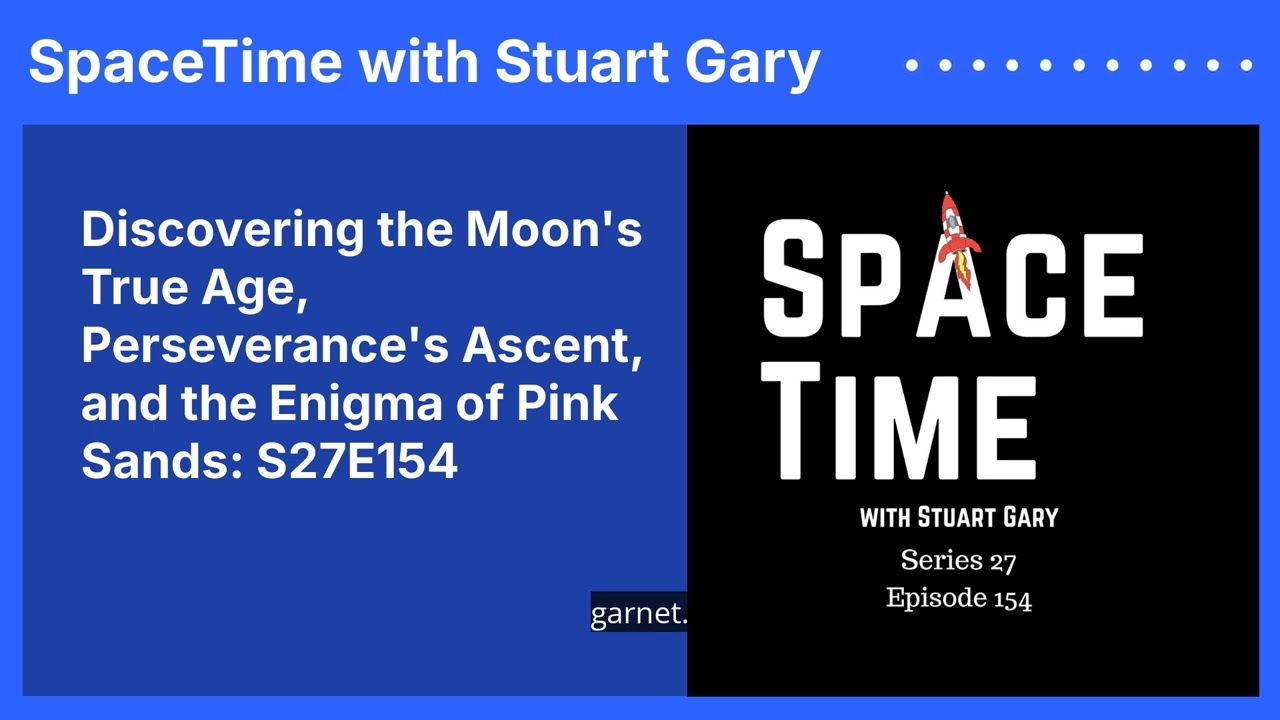 Space News TodayDiscovering the Moon’s True Age, Perseverance’s Ascent, and the Enigma of Pink Sands: S27E154SpaceTime Series 27 Episode 154
* The Moon's Age: A New Perspectiv e
New research suggests the Moon may be much older than previously believed. Evidence indicates the Moon's crust underwent extensive remelting around 4.35 billion years ago, obscuring its true age. This study proposes the Moon could be as old as 4.53 billion years, challenging past estimates and offering a new understanding of its formation.
* Perseverance Rover's New Horizons
NASA's Perseverance rover has reached the top of Jezero Crater's rim, marking a significant milestone in its mission. With the climb complete, the rover is set...2024-12-2328 min
Space News TodayDiscovering the Moon’s True Age, Perseverance’s Ascent, and the Enigma of Pink Sands: S27E154SpaceTime Series 27 Episode 154
* The Moon's Age: A New Perspectiv e
New research suggests the Moon may be much older than previously believed. Evidence indicates the Moon's crust underwent extensive remelting around 4.35 billion years ago, obscuring its true age. This study proposes the Moon could be as old as 4.53 billion years, challenging past estimates and offering a new understanding of its formation.
* Perseverance Rover's New Horizons
NASA's Perseverance rover has reached the top of Jezero Crater's rim, marking a significant milestone in its mission. With the climb complete, the rover is set...2024-12-2328 min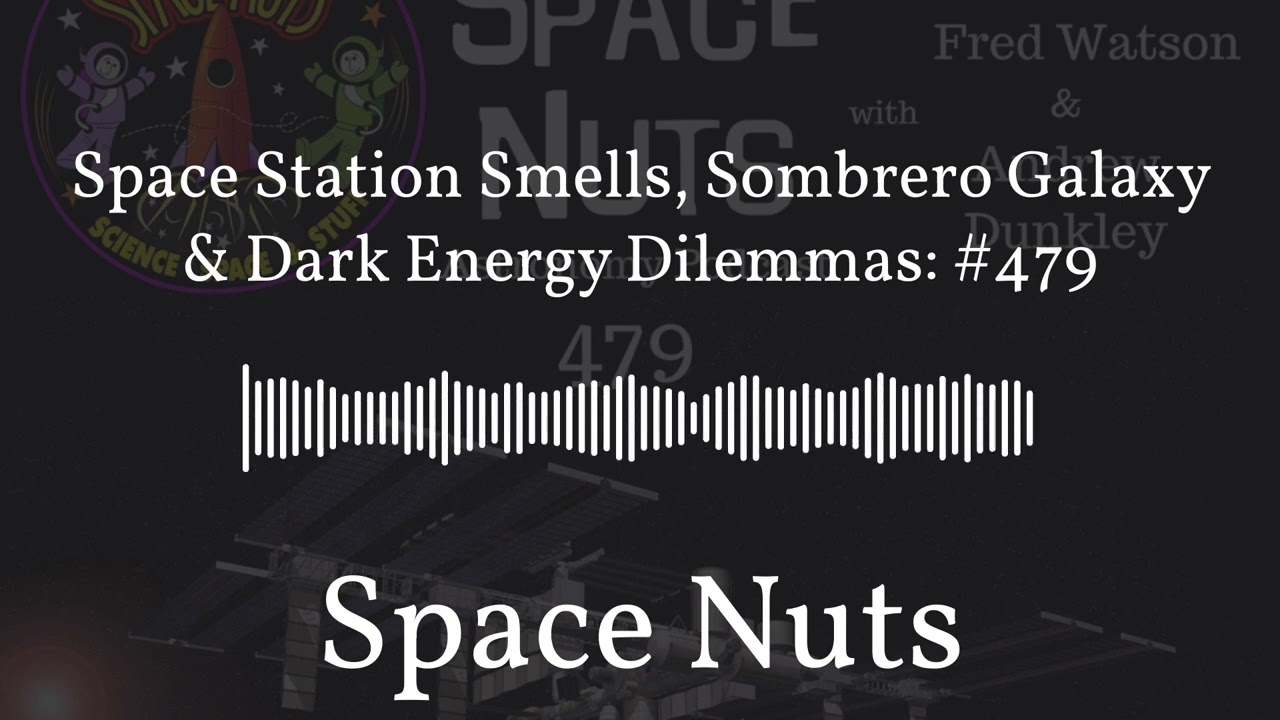 Space News TodaySpace Station Smells, Sombrero Galaxy & Dark Energy Dilemmas: #479 | Space NutsThis episode is brought to you with the support of Incogni ...the best way to cleanup your privacy online and remain that way. To get our special 60% off offer, visit www.incogni.com/spacenuts (https://www.incogni.com/spacenuts)
Space Nuts Episode: Stink in Space, Sombrero Galaxy, and Dark Energy Revelations #479
Join Andrew Dunkley and Professor Fred Watson as they explore the latest cosmic events in this entertaining episode of Space Nuts. From a mysterious odour aboard the International Space Station to stunning images of the Sombrero Galaxy and groundbreaking theories on dark...2024-12-2035 min
Space News TodaySpace Station Smells, Sombrero Galaxy & Dark Energy Dilemmas: #479 | Space NutsThis episode is brought to you with the support of Incogni ...the best way to cleanup your privacy online and remain that way. To get our special 60% off offer, visit www.incogni.com/spacenuts (https://www.incogni.com/spacenuts)
Space Nuts Episode: Stink in Space, Sombrero Galaxy, and Dark Energy Revelations #479
Join Andrew Dunkley and Professor Fred Watson as they explore the latest cosmic events in this entertaining episode of Space Nuts. From a mysterious odour aboard the International Space Station to stunning images of the Sombrero Galaxy and groundbreaking theories on dark...2024-12-2035 min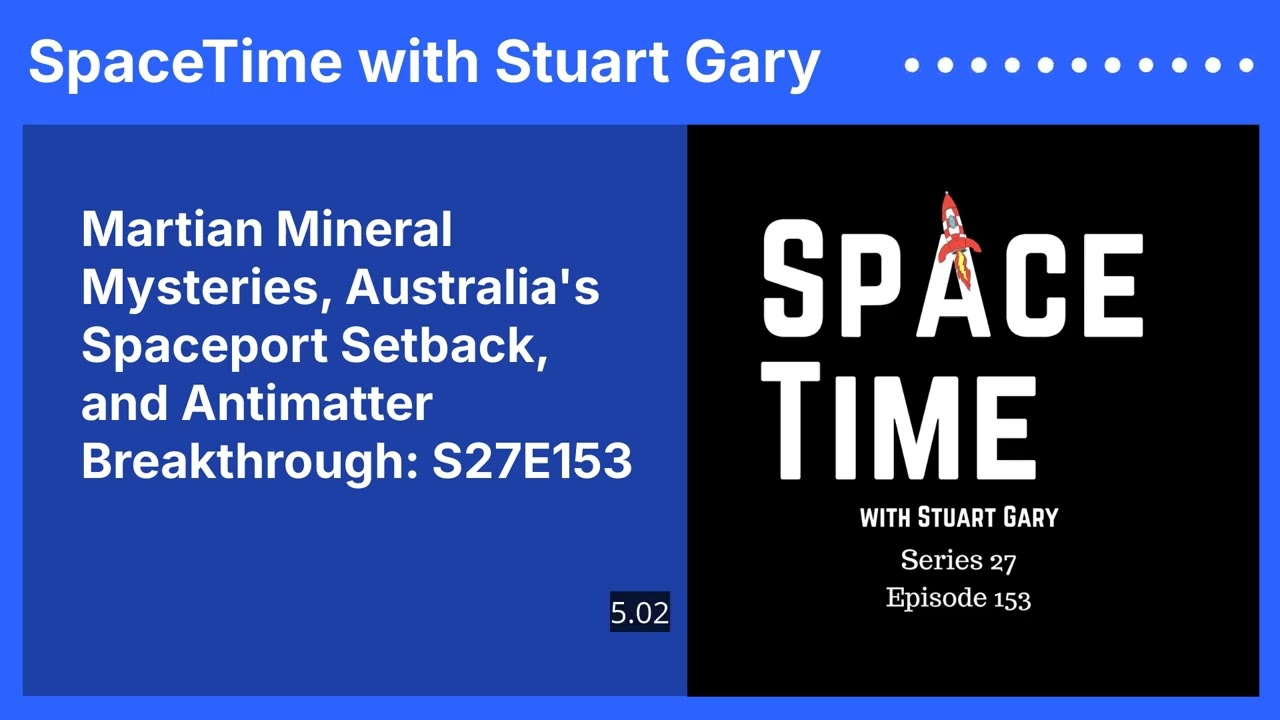 Space News TodayMartian Mineral Mysteries, Australia’s Spaceport Setback, and Antimatter Breakthrough: S27E153SpaceTime Series 27 Episode 153
* The Mysterious Origins of Martian Minerals
A new study suggests that some Martian minerals may have formed in liquid carbon dioxide rather than water. While traditional views link Mars' dry river channels to past water presence, this research indicates that under ancient Martian conditions, liquid CO2 could have been a significant factor in shaping the planet's geological features. This finding, published in Nature Geoscience, adds a new layer to the ongoing debate about Mars' liquid past and its implications for the planet's habitability.
* Australia's Arnhem Space Centre Shuttered
...2024-12-2025 min
Space News TodayMartian Mineral Mysteries, Australia’s Spaceport Setback, and Antimatter Breakthrough: S27E153SpaceTime Series 27 Episode 153
* The Mysterious Origins of Martian Minerals
A new study suggests that some Martian minerals may have formed in liquid carbon dioxide rather than water. While traditional views link Mars' dry river channels to past water presence, this research indicates that under ancient Martian conditions, liquid CO2 could have been a significant factor in shaping the planet's geological features. This finding, published in Nature Geoscience, adds a new layer to the ongoing debate about Mars' liquid past and its implications for the planet's habitability.
* Australia's Arnhem Space Centre Shuttered
...2024-12-2025 min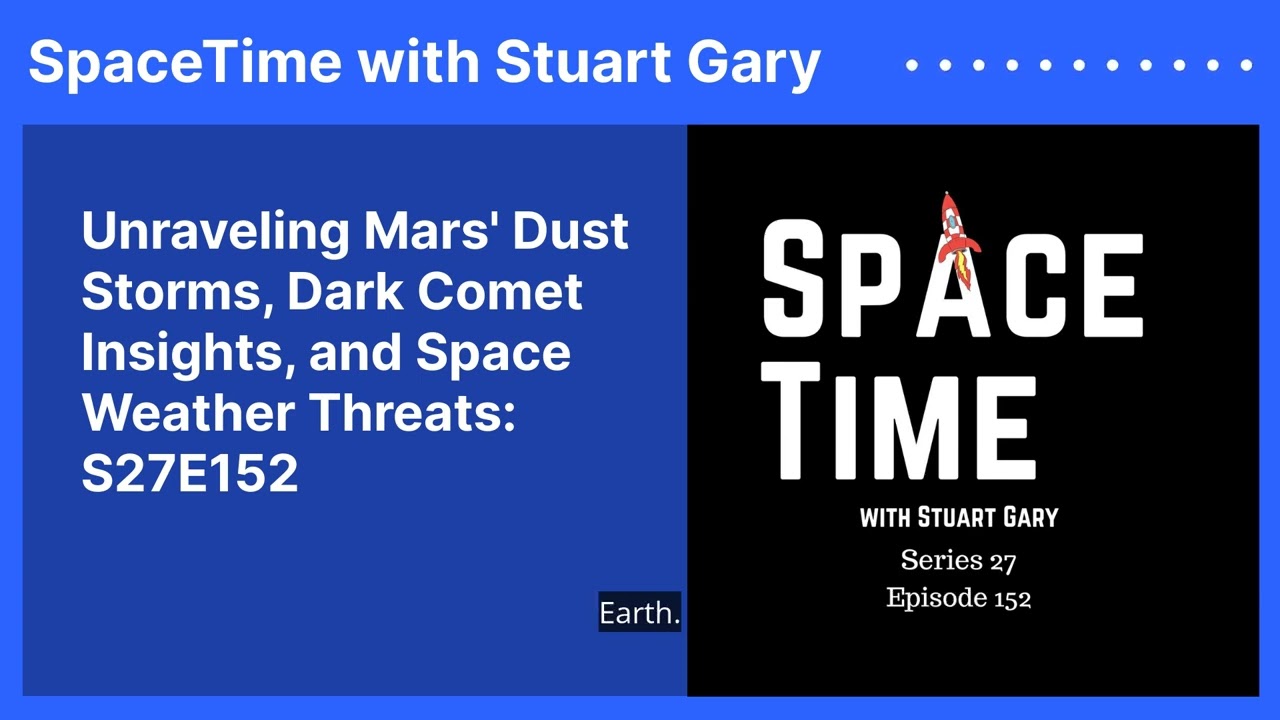 Space News TodayUnraveling Mars’ Dust Storms, Dark Comet Insights, and Space Weather Threats: S27E152SpaceTime Series 27 Episode 152
* Martian Dust Storms: A New Understanding
A groundbreaking study reveals the triggers behind Mars' infamous planet-wide dust storms. Researchers from the University of Colorado Boulder suggest that relatively warm and sunny days could initiate these massive storms. Presented at the American Geophysical Union's 2024 meeting, the findings could pave the way for forecasting Martian weather, similar to Earth meteorology. Understanding these storms is crucial, as they pose significant challenges to Mars missions by affecting rovers and landers.
*Discovery of New Dark Comets
Astronomers have doubled the known population of...2024-12-1823 min
Space News TodayUnraveling Mars’ Dust Storms, Dark Comet Insights, and Space Weather Threats: S27E152SpaceTime Series 27 Episode 152
* Martian Dust Storms: A New Understanding
A groundbreaking study reveals the triggers behind Mars' infamous planet-wide dust storms. Researchers from the University of Colorado Boulder suggest that relatively warm and sunny days could initiate these massive storms. Presented at the American Geophysical Union's 2024 meeting, the findings could pave the way for forecasting Martian weather, similar to Earth meteorology. Understanding these storms is crucial, as they pose significant challenges to Mars missions by affecting rovers and landers.
*Discovery of New Dark Comets
Astronomers have doubled the known population of...2024-12-1823 min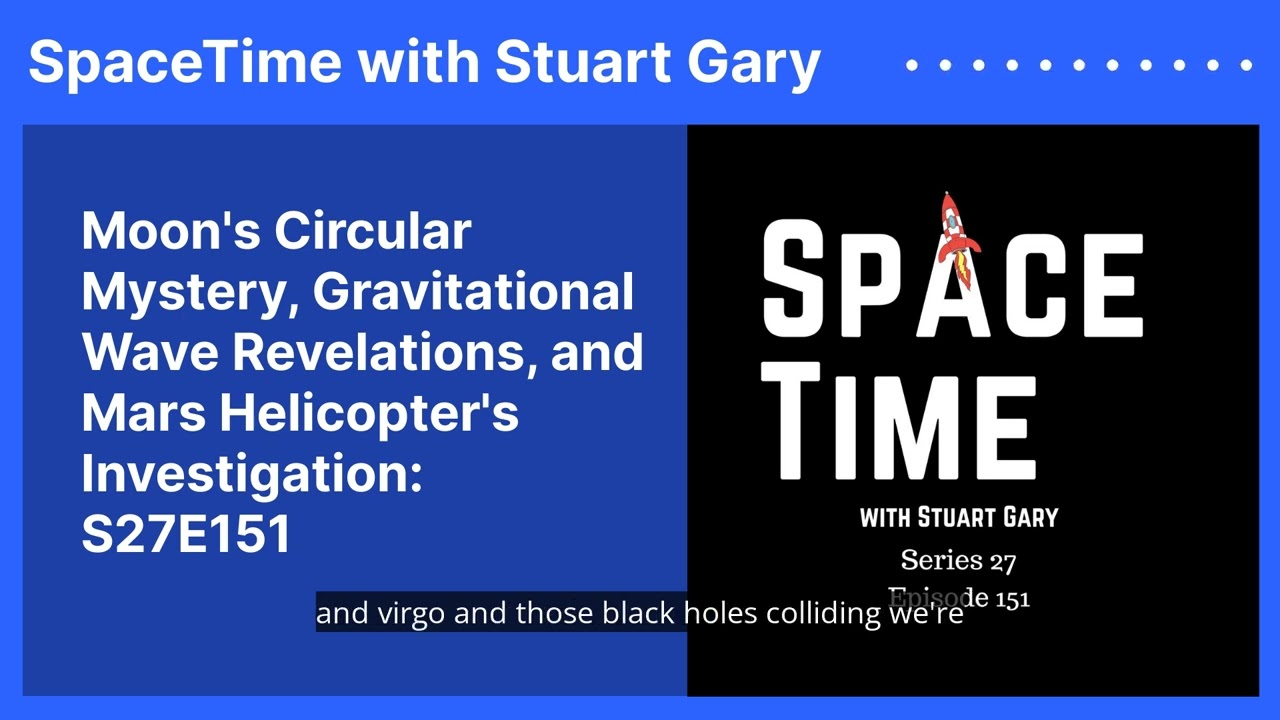 Space News TodayMoon’s Circular Mystery, Gravitational Wave Revelations, and Mars Helicopter’s Investigation:...SpaceTime Series 27 Episode 151
* A New Perspective on the Moon's Aitken Basin
Recent observations of the Moon's south pole reveal that the Aitken Basin crater is more circular than previously believed. This significant discovery challenges existing theories about its formation and has implications for future lunar missions, including NASA's Artemis program. The study, published in Earth and Planetary Science Letters, suggests a more direct impact created the crater, offering potential access to deep lunar material for study.
*Gravitational Wave Maps Unveil Hidden Cosmic Structures
Astronomers have developed the most detailed gravitational wave...2024-12-1630 min
Space News TodayMoon’s Circular Mystery, Gravitational Wave Revelations, and Mars Helicopter’s Investigation:...SpaceTime Series 27 Episode 151
* A New Perspective on the Moon's Aitken Basin
Recent observations of the Moon's south pole reveal that the Aitken Basin crater is more circular than previously believed. This significant discovery challenges existing theories about its formation and has implications for future lunar missions, including NASA's Artemis program. The study, published in Earth and Planetary Science Letters, suggests a more direct impact created the crater, offering potential access to deep lunar material for study.
*Gravitational Wave Maps Unveil Hidden Cosmic Structures
Astronomers have developed the most detailed gravitational wave...2024-12-1630 min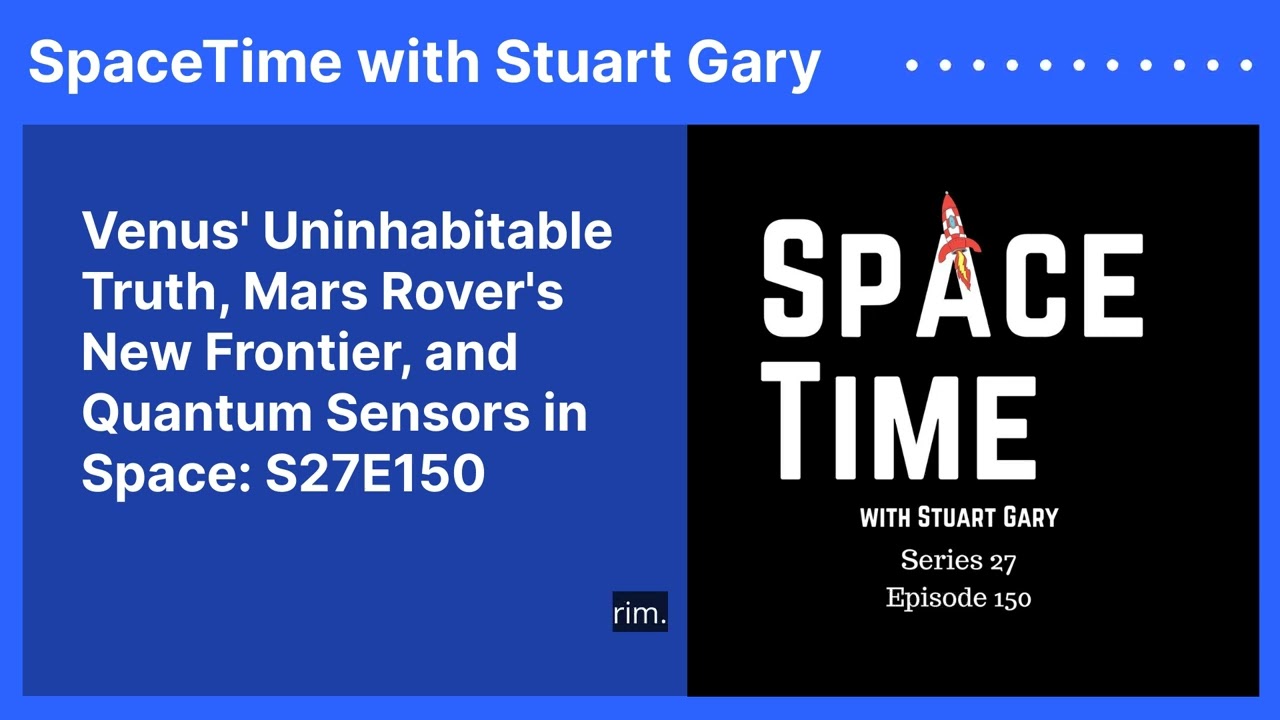 Space News TodayVenus’ Uninhabitable Truth, Mars Rover’s New Frontier, and Quantum Sensors in Space: S27E150SpaceTime Series 27 Episode 150
* Venus: A Lifeless World
New research has debunked the long-standing theory that Venusmight have once been habitable. Despite being Earth's sister planet, a study of its atmospheric chemistry reveals that Venus has always been too dry to support oceans, making it an inhospitable world throughout its history. These findings, published in Nature Astronomy, have significant implications for the search for life on exoplanets, suggesting a focus on more Earth-like candidates.
* Mars Perseverance Rover Reaches Jezero Crater Rim
NASA's Mars Perseverance Rover has successfully reached the rim of Jezero...2024-12-1325 min
Space News TodayVenus’ Uninhabitable Truth, Mars Rover’s New Frontier, and Quantum Sensors in Space: S27E150SpaceTime Series 27 Episode 150
* Venus: A Lifeless World
New research has debunked the long-standing theory that Venusmight have once been habitable. Despite being Earth's sister planet, a study of its atmospheric chemistry reveals that Venus has always been too dry to support oceans, making it an inhospitable world throughout its history. These findings, published in Nature Astronomy, have significant implications for the search for life on exoplanets, suggesting a focus on more Earth-like candidates.
* Mars Perseverance Rover Reaches Jezero Crater Rim
NASA's Mars Perseverance Rover has successfully reached the rim of Jezero...2024-12-1325 min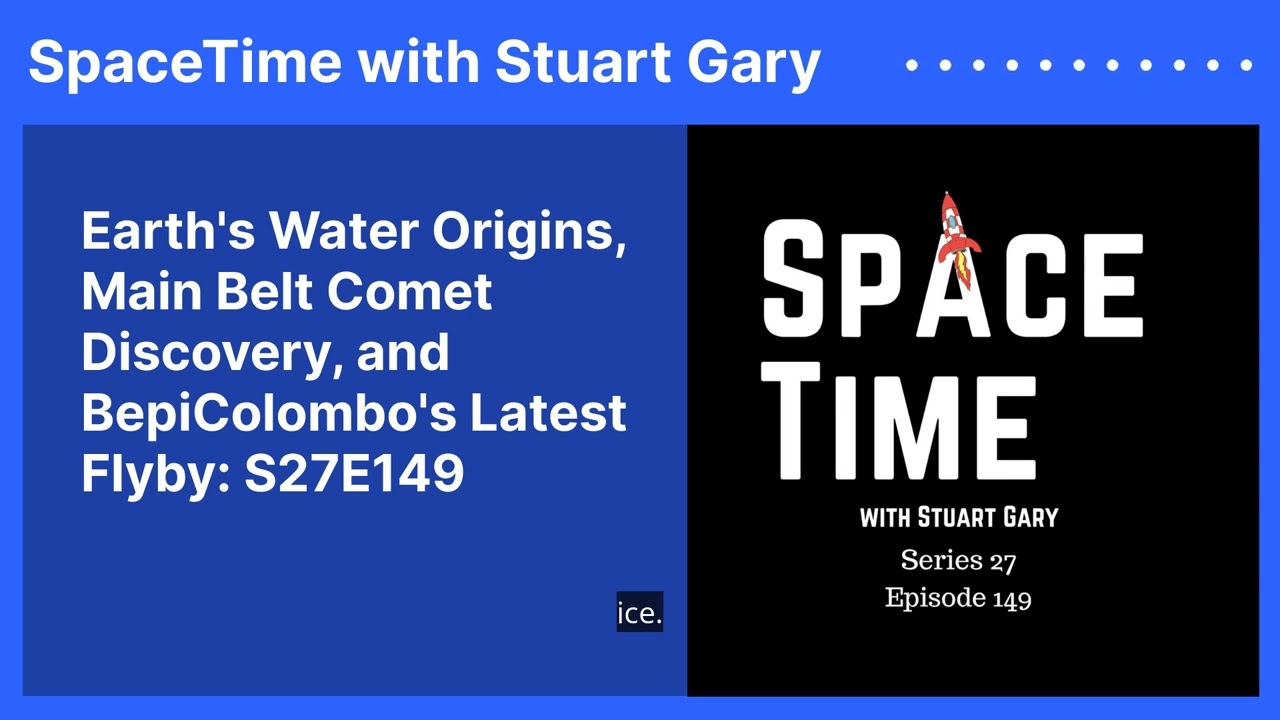 Space News TodayEarth’s Water Origins, Main Belt Comet Discovery, and BepiColombo’s Latest Flyby: S27E149SpaceTime Series 27 Episode 149
* Did Earth's Oceans Come from Comets?
New research suggests that Earth's oceans may have originated from comets, reigniting the debate about the origins of Earth's water. Recent observations of Comet 67P reveal a similar molecular signature to Earth's oceans, challenging previous findings and suggesting Jupiter family comets could have contributed to Earth's water supply. This discovery, led by Kathleen Mandit from NASA's Goddard Space Flight Centre, highlights the importance of understanding the origins of water, a crucial element for life on Earth.
* Discovery of a Rare Main Belt Comet
2024-12-1120 min
Space News TodayEarth’s Water Origins, Main Belt Comet Discovery, and BepiColombo’s Latest Flyby: S27E149SpaceTime Series 27 Episode 149
* Did Earth's Oceans Come from Comets?
New research suggests that Earth's oceans may have originated from comets, reigniting the debate about the origins of Earth's water. Recent observations of Comet 67P reveal a similar molecular signature to Earth's oceans, challenging previous findings and suggesting Jupiter family comets could have contributed to Earth's water supply. This discovery, led by Kathleen Mandit from NASA's Goddard Space Flight Centre, highlights the importance of understanding the origins of water, a crucial element for life on Earth.
* Discovery of a Rare Main Belt Comet
2024-12-1120 min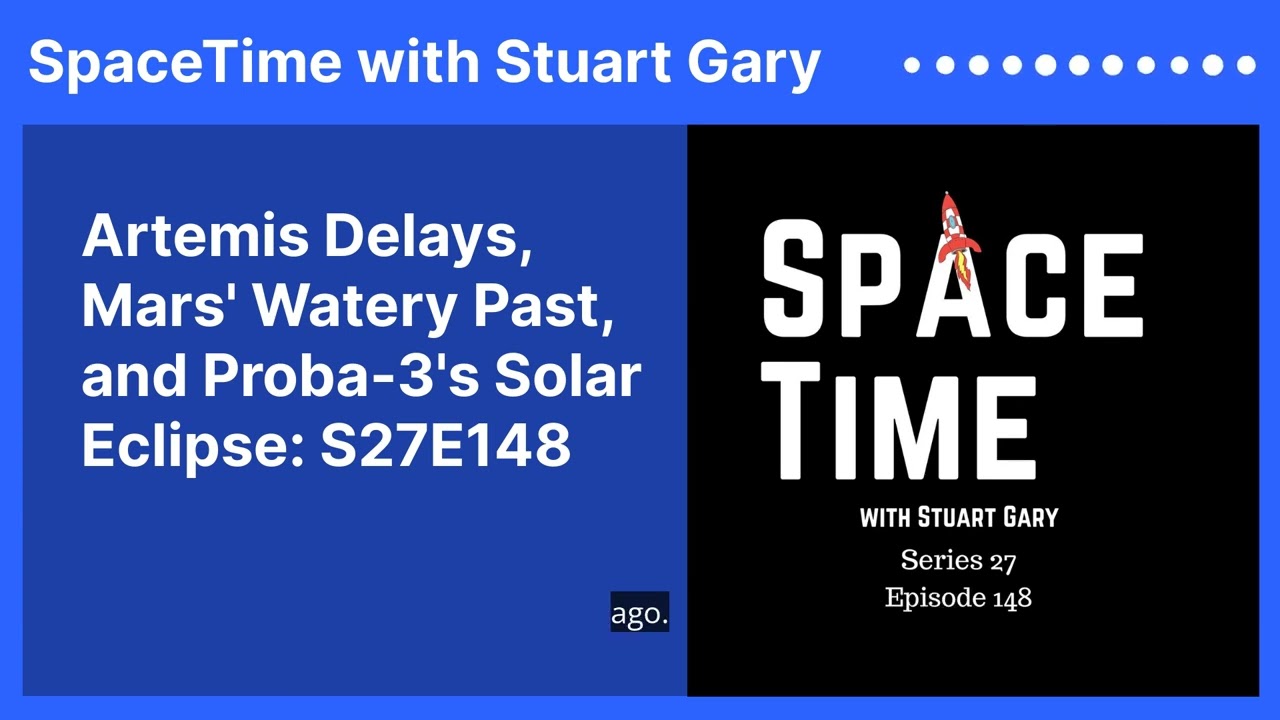 Space News TodayArtemis Delays, Mars’ Watery Past, and Proba-3’s Solar Eclipse: S27E148SpaceTime Series 27 Episode 148
* Another Delay for NASA's Artemis Moon Mission
NASA has announced a delay in the launch of its Artemis 2 manned Moon mission, now rescheduled for April 2026. Originally planned for September 2025, the delay is due to concerns about the Orion spacecraft's heat shield. This postponement also affects the timeline for Artemis 3, which aims to return humans to the lunar surface. NASA's focus is on ensuring the safety and reliability of the spacecraft's reentry systems, with adjustments planned for the Artemis 2 mission trajectory.
* Ancient Hot Water Activity on Mars Uncovered
A...2024-12-1040 min
Space News TodayArtemis Delays, Mars’ Watery Past, and Proba-3’s Solar Eclipse: S27E148SpaceTime Series 27 Episode 148
* Another Delay for NASA's Artemis Moon Mission
NASA has announced a delay in the launch of its Artemis 2 manned Moon mission, now rescheduled for April 2026. Originally planned for September 2025, the delay is due to concerns about the Orion spacecraft's heat shield. This postponement also affects the timeline for Artemis 3, which aims to return humans to the lunar surface. NASA's focus is on ensuring the safety and reliability of the spacecraft's reentry systems, with adjustments planned for the Artemis 2 mission trajectory.
* Ancient Hot Water Activity on Mars Uncovered
A...2024-12-1040 min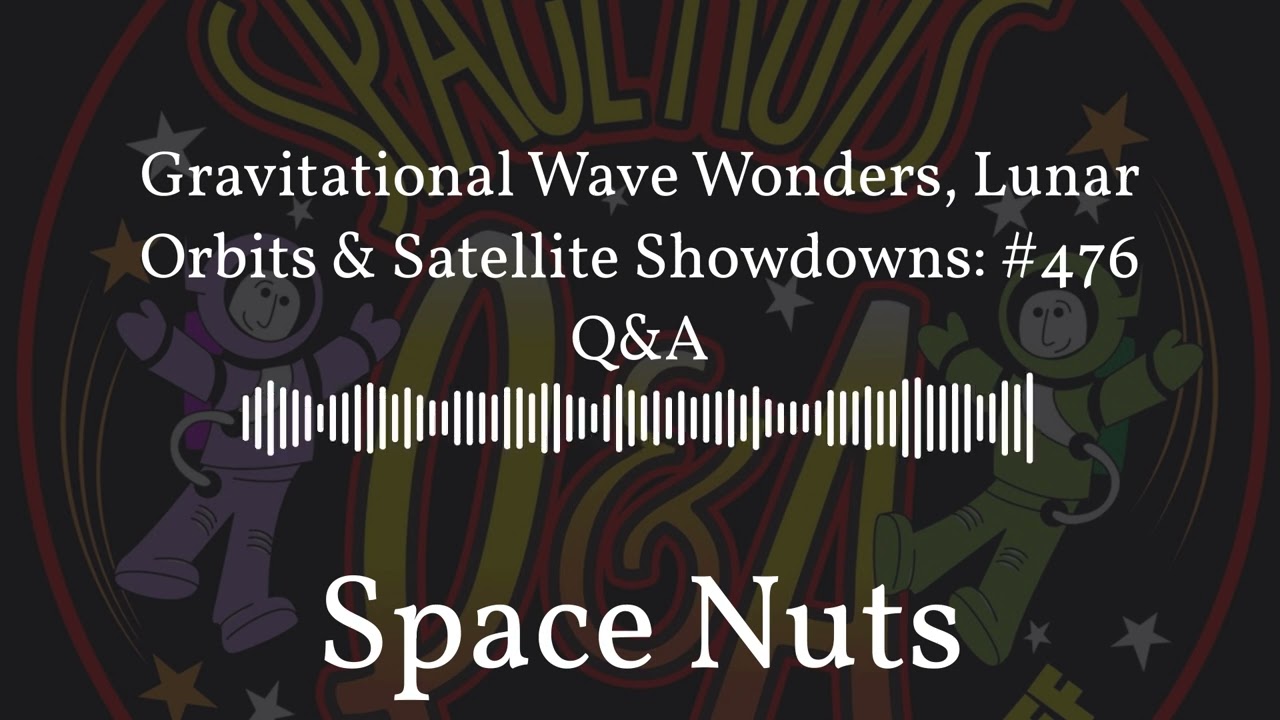 Space News TodayGravitational Wave Wonders, Lunar Orbits & Satellite Showdowns: #476 Q&A | Space NutsSpace Nuts #476 Q&A: Gravitational Waves, Space Stations, and Ultra Massive Black Holes
Join Andrew Dunkley and Professor Fred Watson in this engaging Q&A edition of Space Nuts as they tackle intriguing questions from listeners worldwide. From the curious nature of gravitational waves to the feasibility of a dual orbiting space station, and the mystery of ultra massive black holes, this episode is full of cosmic conundrums and insightful discussions.
Episode Highlights:
- Gravitational Waves Conundrum : Explore whether gravitational waves can reflect or refract like light or sound waves. Understand the unique...2024-12-0928 min
Space News TodayGravitational Wave Wonders, Lunar Orbits & Satellite Showdowns: #476 Q&A | Space NutsSpace Nuts #476 Q&A: Gravitational Waves, Space Stations, and Ultra Massive Black Holes
Join Andrew Dunkley and Professor Fred Watson in this engaging Q&A edition of Space Nuts as they tackle intriguing questions from listeners worldwide. From the curious nature of gravitational waves to the feasibility of a dual orbiting space station, and the mystery of ultra massive black holes, this episode is full of cosmic conundrums and insightful discussions.
Episode Highlights:
- Gravitational Waves Conundrum : Explore whether gravitational waves can reflect or refract like light or sound waves. Understand the unique...2024-12-0928 min Space News TodayCosmic Supernova Secrets, IO’s Volcanic Heartbeat, and New Glenn’s Vertical Ascent: S27E147SpaceTime Series 27 Episode 147
* A Cosmic Glimpse into the Universe's Past
Astronomers have witnessed a rare supernova, 2023 UFX, offering insights into the early universe. This unusual stellar explosion involved a metal-poor red supergiant star, providing clues about the cosmic conditions when the universe began. The study, led by Michael Tucker from Ohio State University, reveals how early supernovae seeded the next generation of stars, shaping galaxies like the Milky Way. The findings underscore the significance of dwarf galaxies as analogues for the universe's infancy, highlighting how metal-poor environments influenced star evolution and supernova behaviour.
...2024-12-0642 min
Space News TodayCosmic Supernova Secrets, IO’s Volcanic Heartbeat, and New Glenn’s Vertical Ascent: S27E147SpaceTime Series 27 Episode 147
* A Cosmic Glimpse into the Universe's Past
Astronomers have witnessed a rare supernova, 2023 UFX, offering insights into the early universe. This unusual stellar explosion involved a metal-poor red supergiant star, providing clues about the cosmic conditions when the universe began. The study, led by Michael Tucker from Ohio State University, reveals how early supernovae seeded the next generation of stars, shaping galaxies like the Milky Way. The findings underscore the significance of dwarf galaxies as analogues for the universe's infancy, highlighting how metal-poor environments influenced star evolution and supernova behaviour.
...2024-12-0642 min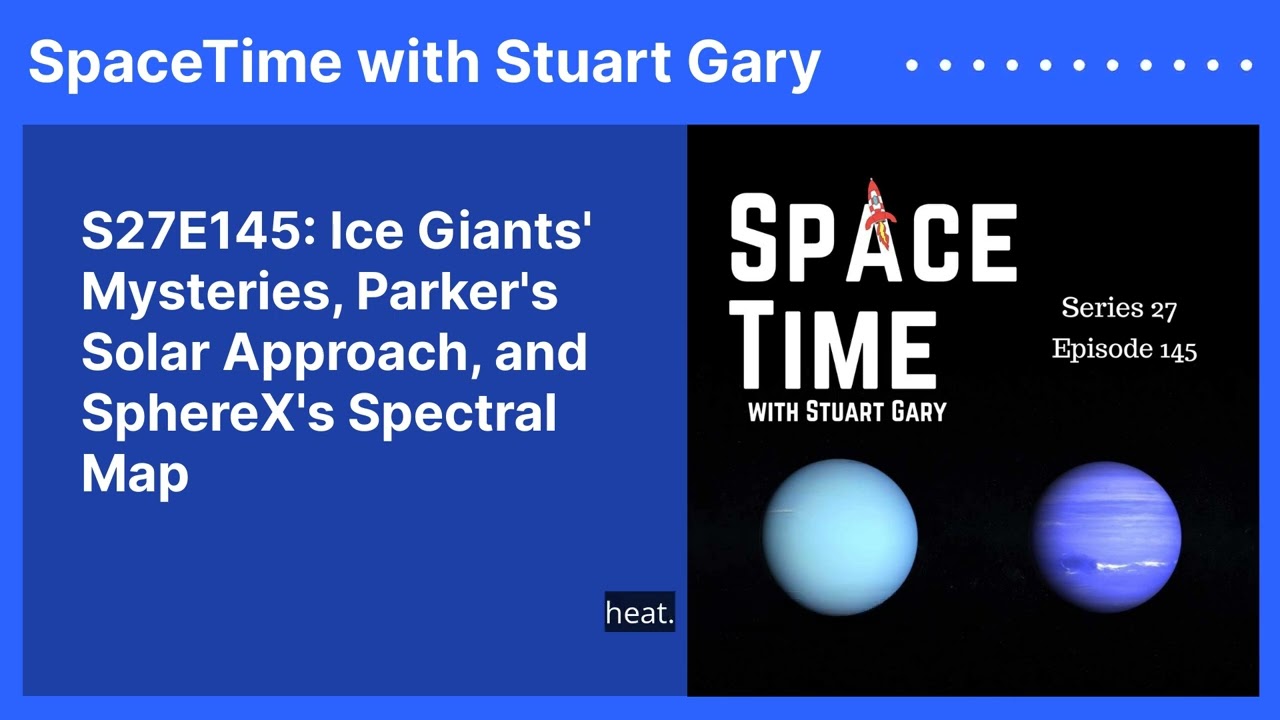 Space News TodayS27E145: Ice Giants’ Mysteries, Parker’s Solar Approach, and SphereX’s Spectral MapSpaceTime Series 27 Episode 145
* Unveiling the Mysteries of Uranus and Neptune
A new study reveals that Uranus and Neptune, the ice giants of our solar system, may have layered interiors composed of water, methane, and ammonia, similar to oil and water that do not mix. This discovery could explain their unique magnetic fields, previously a mystery to scientists. The research, led by Burkhard Miltzer from the University of California, Berkeley, suggests that these planets have a water-rich layer beneath their cloud tops, followed by a denser carbon-rich layer, challenging previous theories about their internal structure.
2024-12-0231 min
Space News TodayS27E145: Ice Giants’ Mysteries, Parker’s Solar Approach, and SphereX’s Spectral MapSpaceTime Series 27 Episode 145
* Unveiling the Mysteries of Uranus and Neptune
A new study reveals that Uranus and Neptune, the ice giants of our solar system, may have layered interiors composed of water, methane, and ammonia, similar to oil and water that do not mix. This discovery could explain their unique magnetic fields, previously a mystery to scientists. The research, led by Burkhard Miltzer from the University of California, Berkeley, suggests that these planets have a water-rich layer beneath their cloud tops, followed by a denser carbon-rich layer, challenging previous theories about their internal structure.
2024-12-0231 min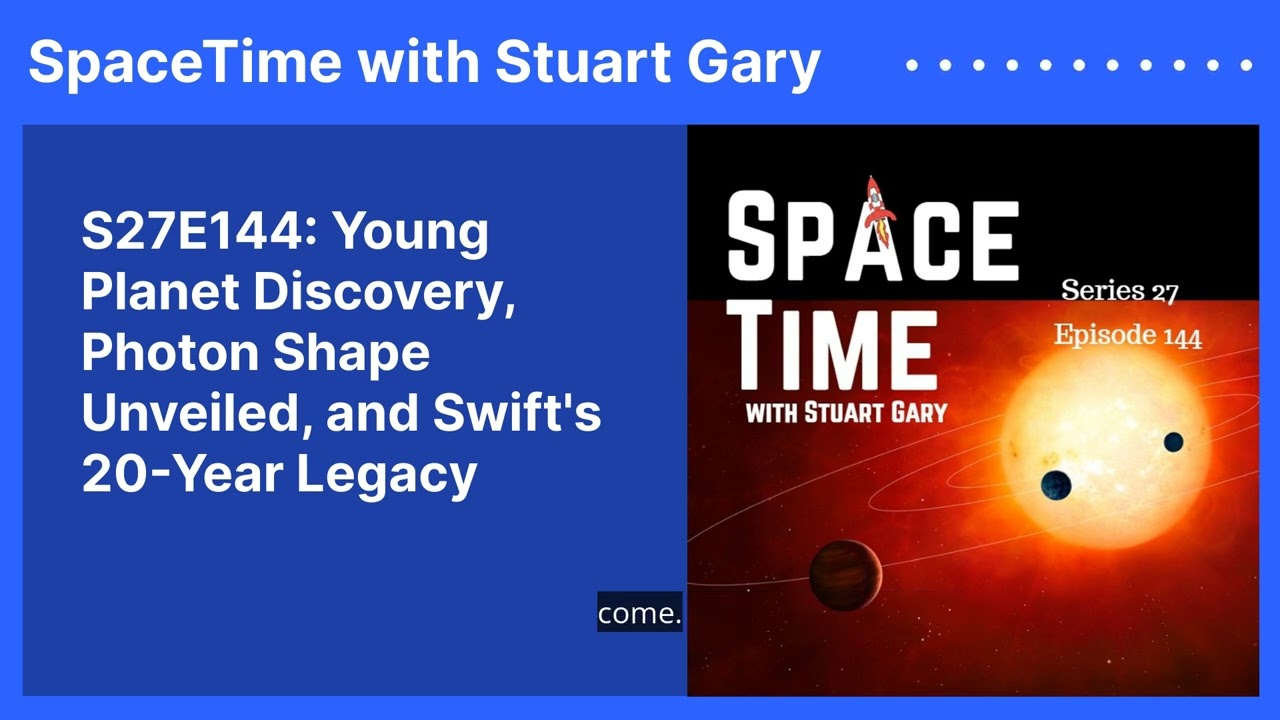 Space News TodayS27E144: Young Planet Discovery, Photon Shape Unveiled, and Swift’s 20-Year LegacySpaceTime Series 27 Episode 144
* Young Exoplanet Challenges Planet Formation Theories
Astronomers have discovered an exoplanet, Taade 1b, that is just 3 million years old, challenging our current understanding of the speed at which planets form. This young planet, orbiting its star every seven Earth days, offers a unique glimpse into the early stages of planetary formation. The study, led by Madison Barber from the University of North Carolina, highlights the surprising rapidity of Taade 1b's formation compared to Earth's estimated 10 to 20 million-year formation period. The discovery provides new insights into the differences between our solar system and...2024-11-2924 min
Space News TodayS27E144: Young Planet Discovery, Photon Shape Unveiled, and Swift’s 20-Year LegacySpaceTime Series 27 Episode 144
* Young Exoplanet Challenges Planet Formation Theories
Astronomers have discovered an exoplanet, Taade 1b, that is just 3 million years old, challenging our current understanding of the speed at which planets form. This young planet, orbiting its star every seven Earth days, offers a unique glimpse into the early stages of planetary formation. The study, led by Madison Barber from the University of North Carolina, highlights the surprising rapidity of Taade 1b's formation compared to Earth's estimated 10 to 20 million-year formation period. The discovery provides new insights into the differences between our solar system and...2024-11-2924 min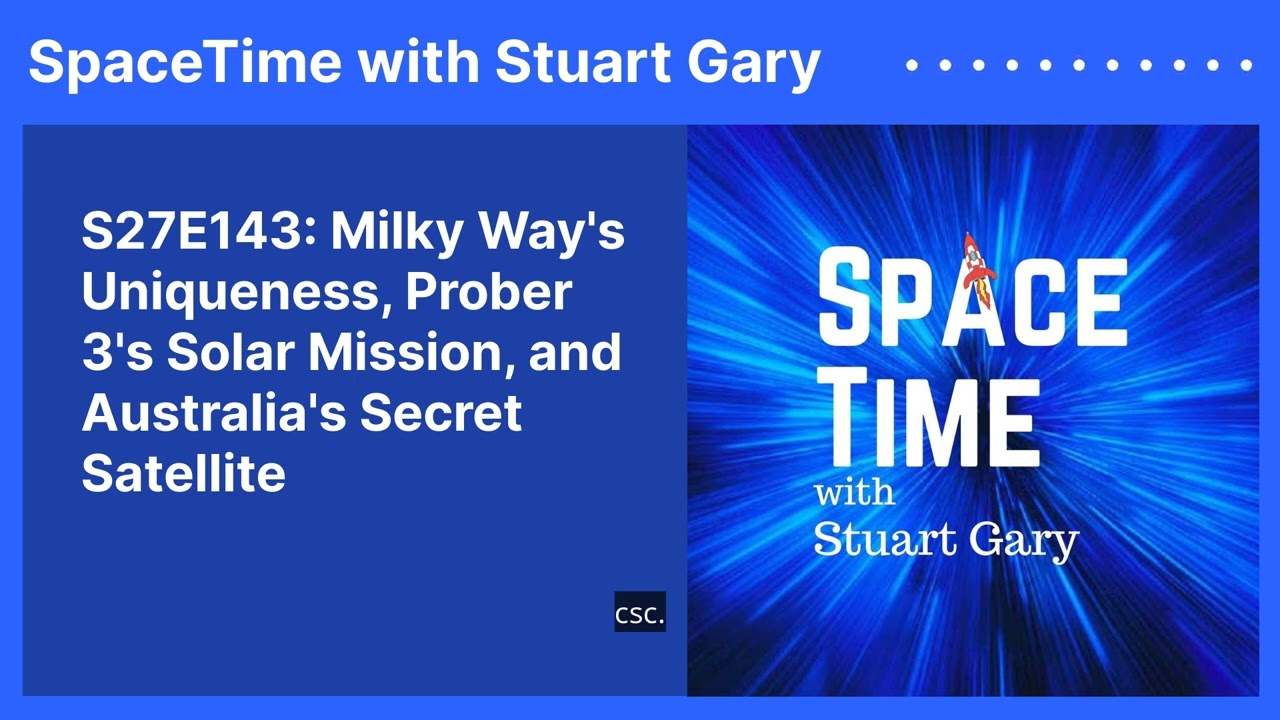 Space News TodayS27E143: Milky Way’s Uniqueness, Prober 3’s Solar Mission, and Australia’s Secret SatelliteSpaceTime Series 27 Episode 143
* The Milky Way: An Unusual Galaxy
A new study reveals that our Milky Way galaxy is an outlier among similar galaxies, challenging the assumption that it is a typical model for understanding galactic formation and evolution. Published in the Astrophysical Journal, the research highlights differences in the Milky Way's evolutionary history compared to other galaxies of similar mass. The Satellite Surround Galactic Analogues (SEGA) survey has identified 101 Milky Way-like analogues, revealing that the Milky Way hosts fewer satellite dwarf galaxies than its peers. Additionally, star formation in the Milky Way's satellite galaxies...2024-11-2724 min
Space News TodayS27E143: Milky Way’s Uniqueness, Prober 3’s Solar Mission, and Australia’s Secret SatelliteSpaceTime Series 27 Episode 143
* The Milky Way: An Unusual Galaxy
A new study reveals that our Milky Way galaxy is an outlier among similar galaxies, challenging the assumption that it is a typical model for understanding galactic formation and evolution. Published in the Astrophysical Journal, the research highlights differences in the Milky Way's evolutionary history compared to other galaxies of similar mass. The Satellite Surround Galactic Analogues (SEGA) survey has identified 101 Milky Way-like analogues, revealing that the Milky Way hosts fewer satellite dwarf galaxies than its peers. Additionally, star formation in the Milky Way's satellite galaxies...2024-11-2724 min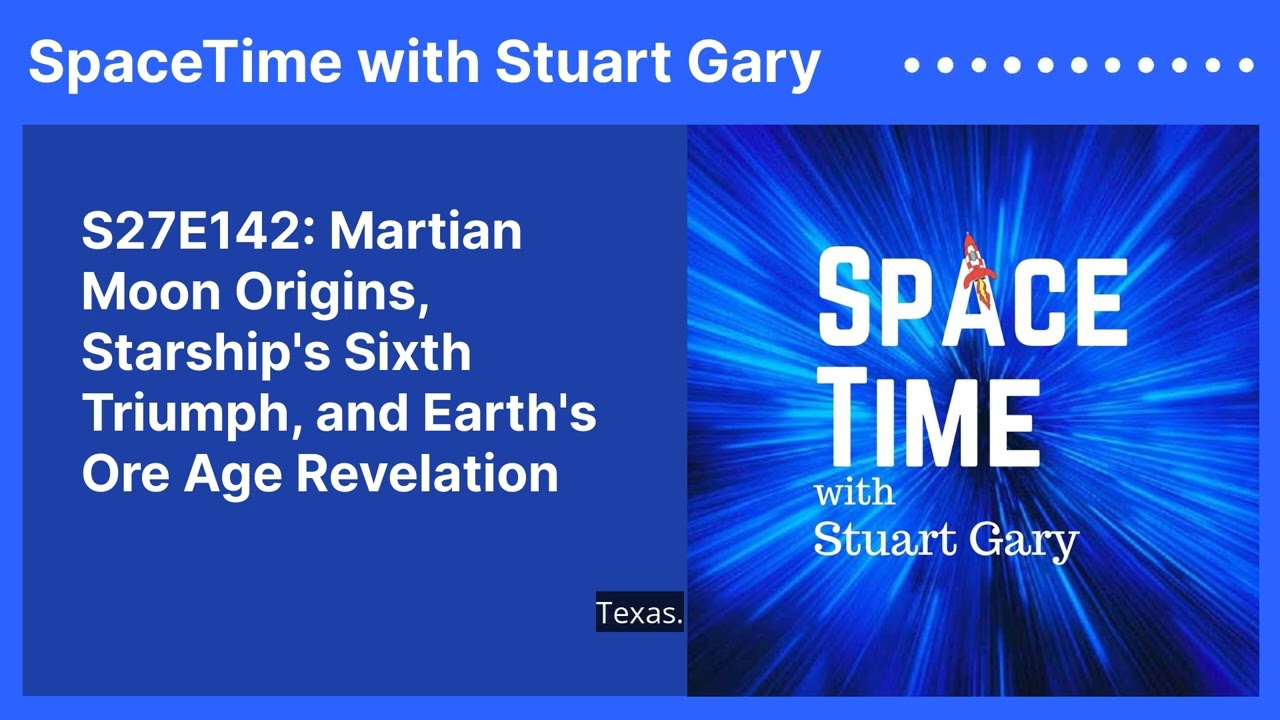 Space News TodayS27E142: Martian Moon Origins, Starship’s Sixth Triumph, and Earth’s Ore Age RevelationSpaceTime Series 27 Episode 142
* How Mars Got Its Moons
A groundbreaking study suggests that Mars acquired its moons, Phobos and Deimos, after a passing asteroid was torn apart by the planet's gravity. This new hypothesis, based on NASA's supercomputer simulations and published in the journal Icarus, challenges previous theories of their origin, such as capture or major impact. The upcoming Martian Moons Exploration mission by JAXA, with NASA's involvement, aims to further investigate these theories by collecting samples from Phobos.
* Starship Test Flight 6
SpaceX has successfully completed its sixth test flight of...2024-11-2539 min
Space News TodayS27E142: Martian Moon Origins, Starship’s Sixth Triumph, and Earth’s Ore Age RevelationSpaceTime Series 27 Episode 142
* How Mars Got Its Moons
A groundbreaking study suggests that Mars acquired its moons, Phobos and Deimos, after a passing asteroid was torn apart by the planet's gravity. This new hypothesis, based on NASA's supercomputer simulations and published in the journal Icarus, challenges previous theories of their origin, such as capture or major impact. The upcoming Martian Moons Exploration mission by JAXA, with NASA's involvement, aims to further investigate these theories by collecting samples from Phobos.
* Starship Test Flight 6
SpaceX has successfully completed its sixth test flight of...2024-11-2539 min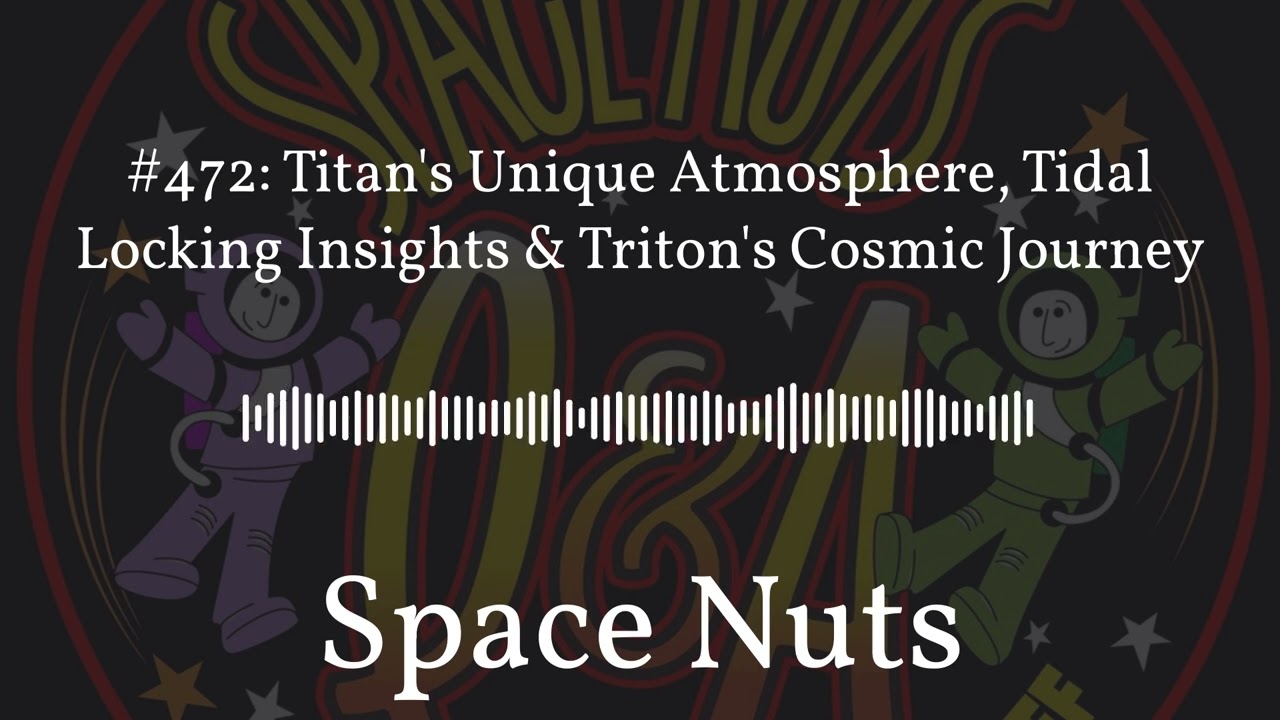 Space News Today#472: Titan’s Unique Atmosphere, Tidal Locking Insights & Triton’s Cosmic Journey | Space NutsSpace Nuts #472 Q&A Edition: Titan's Mysteries and Cosmic Curiosities
Join Andrew Dunkley and Professor Fred Watson in this intriguing Q&A episode of Space Nuts, where they delve into the mysteries of our solar system and beyond, addressing questions from their curious audience. From the unique atmosphere of Titan to the hypothetical existence of Planet Nine, this episode is filled with captivating discussions and astronomical insights.
Episode Highlights:
- Titan's Atmospheric Enigma : Explore the origins of Titan's thick nitrogen atmosphere and its ability to retain it, unlike Mars. Discover the role of...2024-11-2529 min
Space News Today#472: Titan’s Unique Atmosphere, Tidal Locking Insights & Triton’s Cosmic Journey | Space NutsSpace Nuts #472 Q&A Edition: Titan's Mysteries and Cosmic Curiosities
Join Andrew Dunkley and Professor Fred Watson in this intriguing Q&A episode of Space Nuts, where they delve into the mysteries of our solar system and beyond, addressing questions from their curious audience. From the unique atmosphere of Titan to the hypothetical existence of Planet Nine, this episode is filled with captivating discussions and astronomical insights.
Episode Highlights:
- Titan's Atmospheric Enigma : Explore the origins of Titan's thick nitrogen atmosphere and its ability to retain it, unlike Mars. Discover the role of...2024-11-2529 min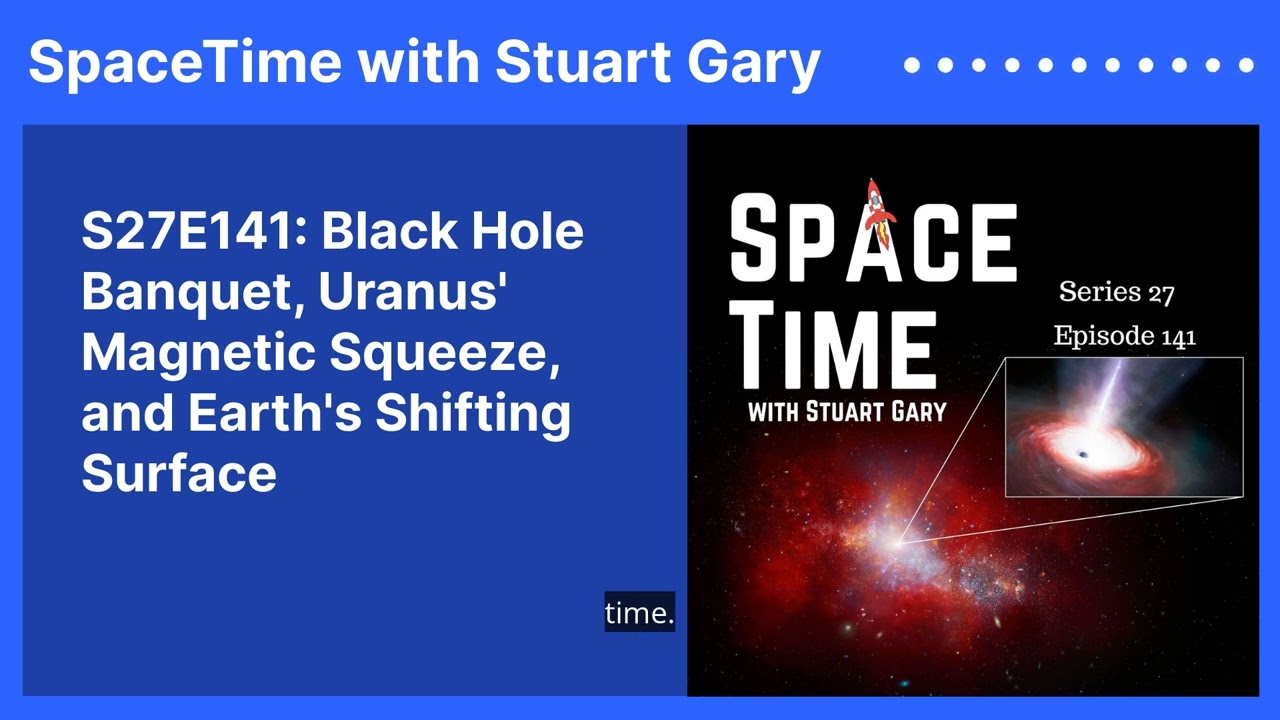 Space News TodayS27E141: Black Hole Banquet, Uranus’ Magnetic Squeeze, and Earth’s Shifting SurfaceSpaceTime Series 27 Episode 141
* Supermassive Black Hole Consumes Matter at Record Speed
Astronomers have discovered a supermassive black hole in the early universe consuming matter at a rate more than 40 times its theoretical limit. This black hole, catalogued as LID568, was observed by the Webb Space Telescope and is providing new insights into the rapid growth mechanisms of black holes shortly after the Big Bang. The findings challenge existing theories on how these cosmic giants formed so quickly and open new avenues for future research.
* Uranus' Magnetic Mysteries Unveiled
New analysis of 38...2024-11-2225 min
Space News TodayS27E141: Black Hole Banquet, Uranus’ Magnetic Squeeze, and Earth’s Shifting SurfaceSpaceTime Series 27 Episode 141
* Supermassive Black Hole Consumes Matter at Record Speed
Astronomers have discovered a supermassive black hole in the early universe consuming matter at a rate more than 40 times its theoretical limit. This black hole, catalogued as LID568, was observed by the Webb Space Telescope and is providing new insights into the rapid growth mechanisms of black holes shortly after the Big Bang. The findings challenge existing theories on how these cosmic giants formed so quickly and open new avenues for future research.
* Uranus' Magnetic Mysteries Unveiled
New analysis of 38...2024-11-2225 min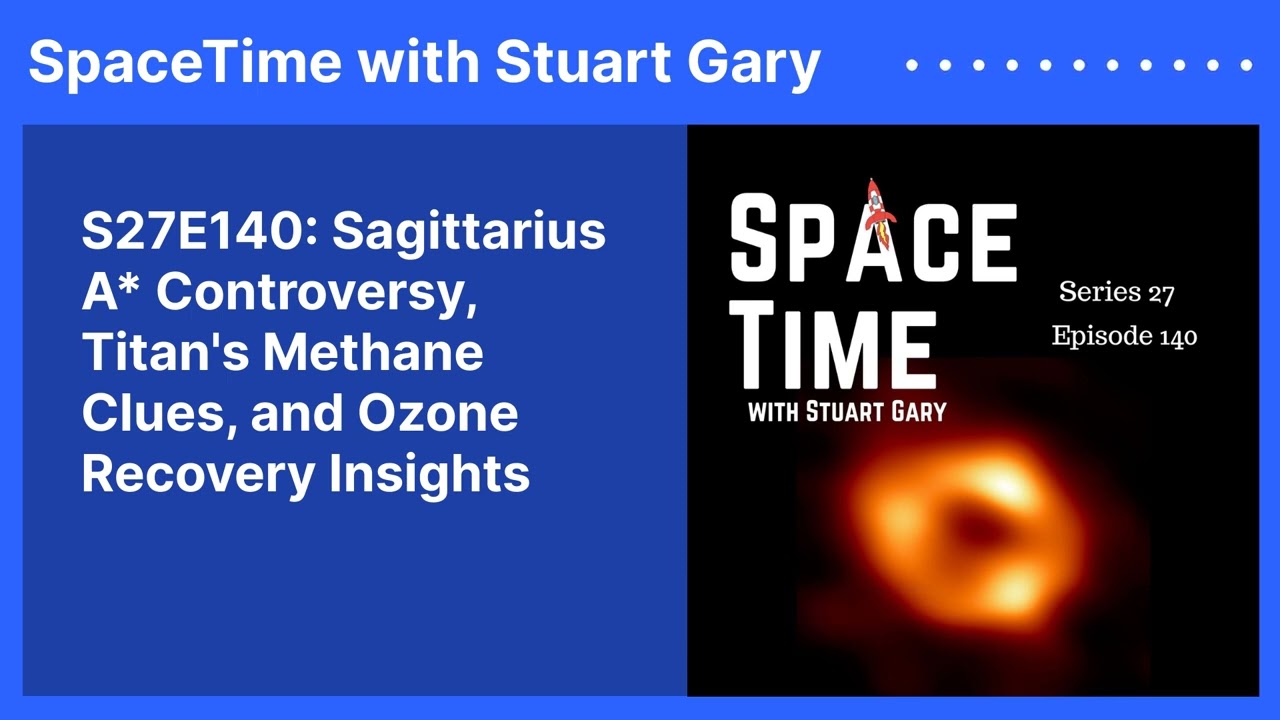 Space News TodayS27E140: Sagittarius A* Controversy, Titan’s Methane Clues, and Ozone Recovery InsightsSpaceTime Series 27 Episode 140
*Revisiting the Milky Way's Black Hole Image
A new study questions the accuracy of the first-ever image of Sagittarius A, the supermassive black hole at the centre of the Milky Way. Researchers suggest the image may not accurately represent its appearance, proposing a more elongated accretion disc instead of the ring-like structure previously released by the Event Horizon Telescope.
*Methane in Titan's Crust
Data from NASA's Cassini spacecraft indicates that Saturn's moon Titan may have a methane-rich crust up to 10 kilometres thick. This insulating layer could explain Titan's...2024-11-2026 min
Space News TodayS27E140: Sagittarius A* Controversy, Titan’s Methane Clues, and Ozone Recovery InsightsSpaceTime Series 27 Episode 140
*Revisiting the Milky Way's Black Hole Image
A new study questions the accuracy of the first-ever image of Sagittarius A, the supermassive black hole at the centre of the Milky Way. Researchers suggest the image may not accurately represent its appearance, proposing a more elongated accretion disc instead of the ring-like structure previously released by the Event Horizon Telescope.
*Methane in Titan's Crust
Data from NASA's Cassini spacecraft indicates that Saturn's moon Titan may have a methane-rich crust up to 10 kilometres thick. This insulating layer could explain Titan's...2024-11-2026 min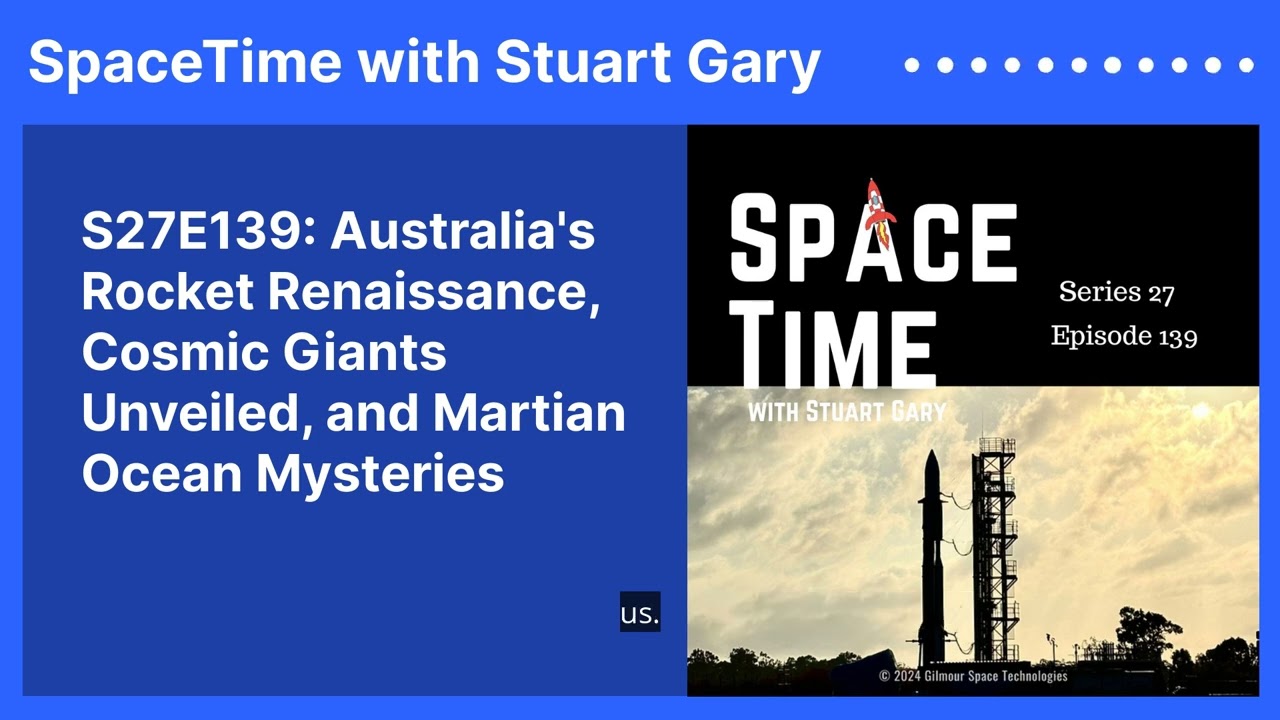 Space News TodayS27E139: Australia’s Rocket Renaissance, Cosmic Giants Unveiled, and Martian Ocean MysteriesSpaceTime Series 27 Episode 139
*Gilmore Space Cleared for Orbital Launch
The Australian Space Agency has granted Gilmore Space the final approval needed to conduct its maiden orbital test flight of the Ares rocket from the Bowen Spaceport in North Queensland. This launch will mark the first orbital test flight of an Australian-made rocket from Australian soil, showcasing a new hybrid propulsion system developed by the company.
*Discovery of Red Monster Galaxies in the Early Universe
Astronomers have identified three ultra-massive galaxies, each nearly the size of the Milky Way, that reached their...2024-11-1830 min
Space News TodayS27E139: Australia’s Rocket Renaissance, Cosmic Giants Unveiled, and Martian Ocean MysteriesSpaceTime Series 27 Episode 139
*Gilmore Space Cleared for Orbital Launch
The Australian Space Agency has granted Gilmore Space the final approval needed to conduct its maiden orbital test flight of the Ares rocket from the Bowen Spaceport in North Queensland. This launch will mark the first orbital test flight of an Australian-made rocket from Australian soil, showcasing a new hybrid propulsion system developed by the company.
*Discovery of Red Monster Galaxies in the Early Universe
Astronomers have identified three ultra-massive galaxies, each nearly the size of the Milky Way, that reached their...2024-11-1830 min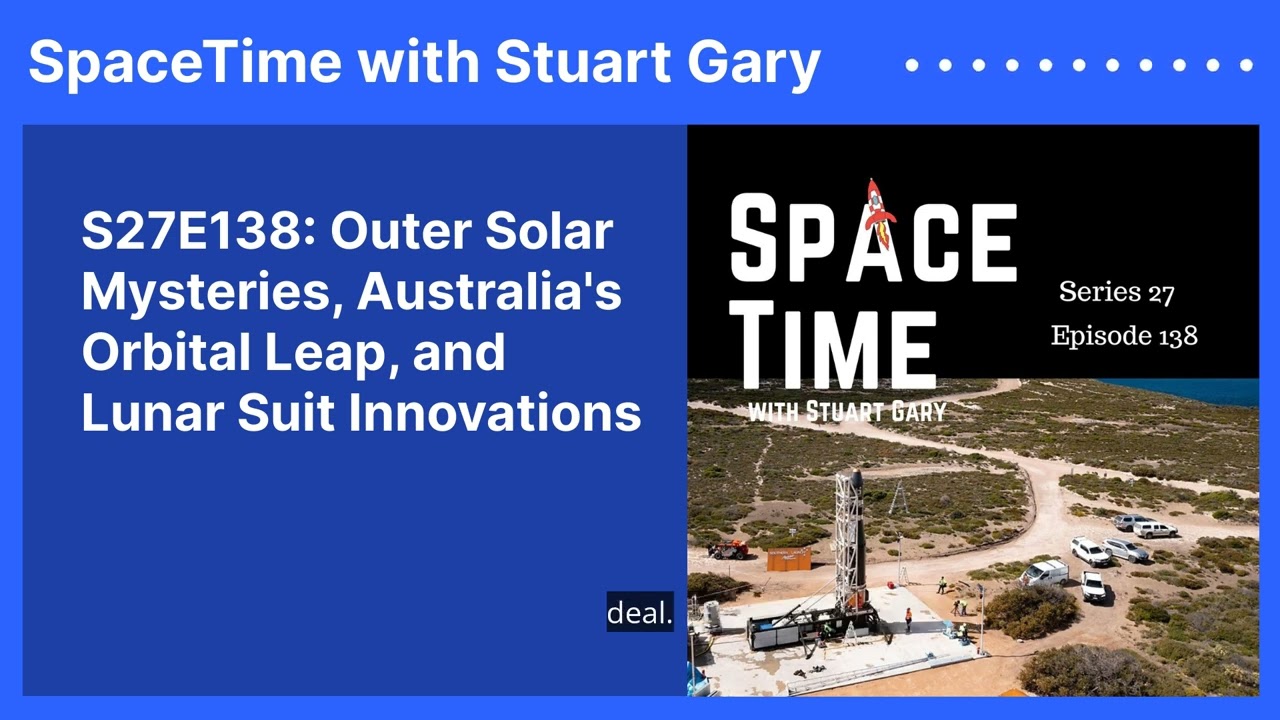 Space News TodayS27E138: Outer Solar Mysteries, Australia’s Orbital Leap, and Lunar Suit InnovationsSpaceTime Series 27 Episode 138
* Discovery of the Outer Solar System's Magnetic Field
Scientists have discovered evidence of an ancient magnetic field at the far reaches of our solar system. Research published in AGU Advances, based on 4.6 billion-year-old grain samples from the asteroid Richie, suggests the presence of a weak magnetic field during the formation of the outer solar system. This field, although weak, could have been instrumental in the formation of the outer planets, including Jupiter, Saturn, Uranus, and Neptune. The findings provide new insights into the magnetic influences shaping our solar system.
* Southern...2024-11-1521 min
Space News TodayS27E138: Outer Solar Mysteries, Australia’s Orbital Leap, and Lunar Suit InnovationsSpaceTime Series 27 Episode 138
* Discovery of the Outer Solar System's Magnetic Field
Scientists have discovered evidence of an ancient magnetic field at the far reaches of our solar system. Research published in AGU Advances, based on 4.6 billion-year-old grain samples from the asteroid Richie, suggests the presence of a weak magnetic field during the formation of the outer solar system. This field, although weak, could have been instrumental in the formation of the outer planets, including Jupiter, Saturn, Uranus, and Neptune. The findings provide new insights into the magnetic influences shaping our solar system.
* Southern...2024-11-1521 min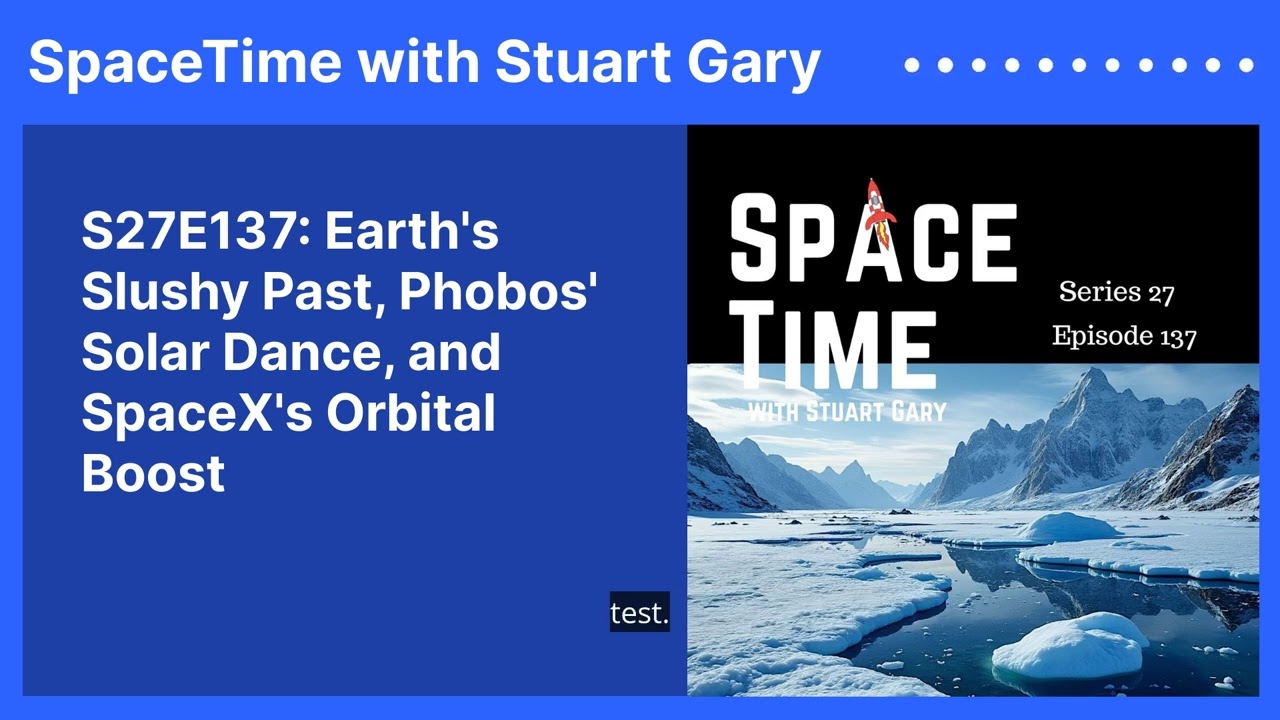 Space News TodayS27E137: Earth’s Slushy Past, Phobos’ Solar Dance, and SpaceX’s Orbital BoostSpaceTime Series 27 Episode 137
*The Earth: A Giant Slushie?
New research reveals that Earth once experienced a "slushy" period following its snowball Earth phase. Published in the Proceedings of the National Academy of Sciences, the study by Virginia Tech scientists suggests that as the planet thawed, it transitioned into a slushy state, marked by high carbon dioxide levels and rapid melting. The findings offer fresh insights into Earth's climate evolution and the resilience of life under extreme conditions.
*Phobos Eclipses the Sun
NASA's Mars Perseverance rover has captured a rare celestial event...2024-11-1323 min
Space News TodayS27E137: Earth’s Slushy Past, Phobos’ Solar Dance, and SpaceX’s Orbital BoostSpaceTime Series 27 Episode 137
*The Earth: A Giant Slushie?
New research reveals that Earth once experienced a "slushy" period following its snowball Earth phase. Published in the Proceedings of the National Academy of Sciences, the study by Virginia Tech scientists suggests that as the planet thawed, it transitioned into a slushy state, marked by high carbon dioxide levels and rapid melting. The findings offer fresh insights into Earth's climate evolution and the resilience of life under extreme conditions.
*Phobos Eclipses the Sun
NASA's Mars Perseverance rover has captured a rare celestial event...2024-11-1323 min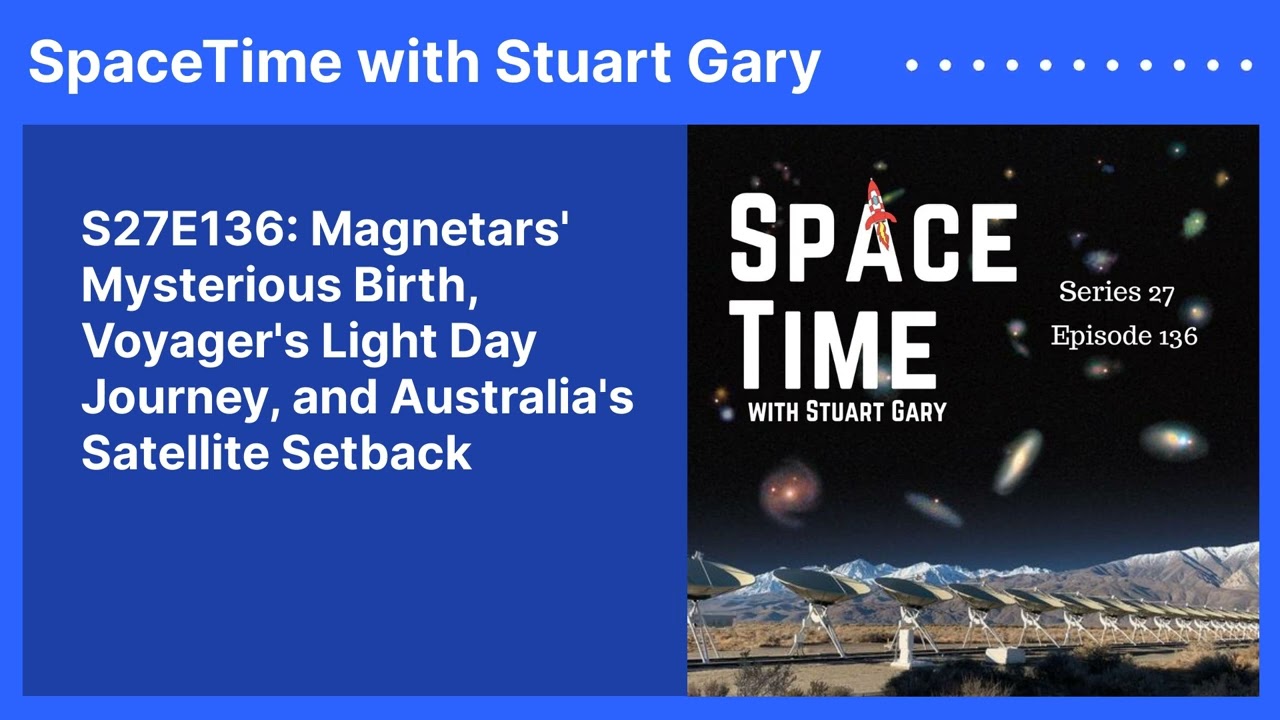 Space News TodayS27E136: Magnetars’ Mysterious Birth, Voyager’s Light Day Journey, and Australia’s Satellite SetbackSpaceTime Series 27 Episode 136
*Discovering the Origins of Magnetars
A groundbreaking study reveals that magnetars, highly magnetic neutron stars, are born from stellar mergers rather than single star supernova events. These findings, published in Nature, delve into the origins of fast radio bursts (FRBs), which are high-energy flashes releasing more energy in nanoseconds than half a billion suns. The research indicates that FRBs are more common in massive star-forming galaxies, suggesting a link to magnetars formed from stellar mergers. This discovery challenges previous assumptions about magnetar formation and sheds light on the dynamic processes in the...2024-11-1224 min
Space News TodayS27E136: Magnetars’ Mysterious Birth, Voyager’s Light Day Journey, and Australia’s Satellite SetbackSpaceTime Series 27 Episode 136
*Discovering the Origins of Magnetars
A groundbreaking study reveals that magnetars, highly magnetic neutron stars, are born from stellar mergers rather than single star supernova events. These findings, published in Nature, delve into the origins of fast radio bursts (FRBs), which are high-energy flashes releasing more energy in nanoseconds than half a billion suns. The research indicates that FRBs are more common in massive star-forming galaxies, suggesting a link to magnetars formed from stellar mergers. This discovery challenges previous assumptions about magnetar formation and sheds light on the dynamic processes in the...2024-11-1224 min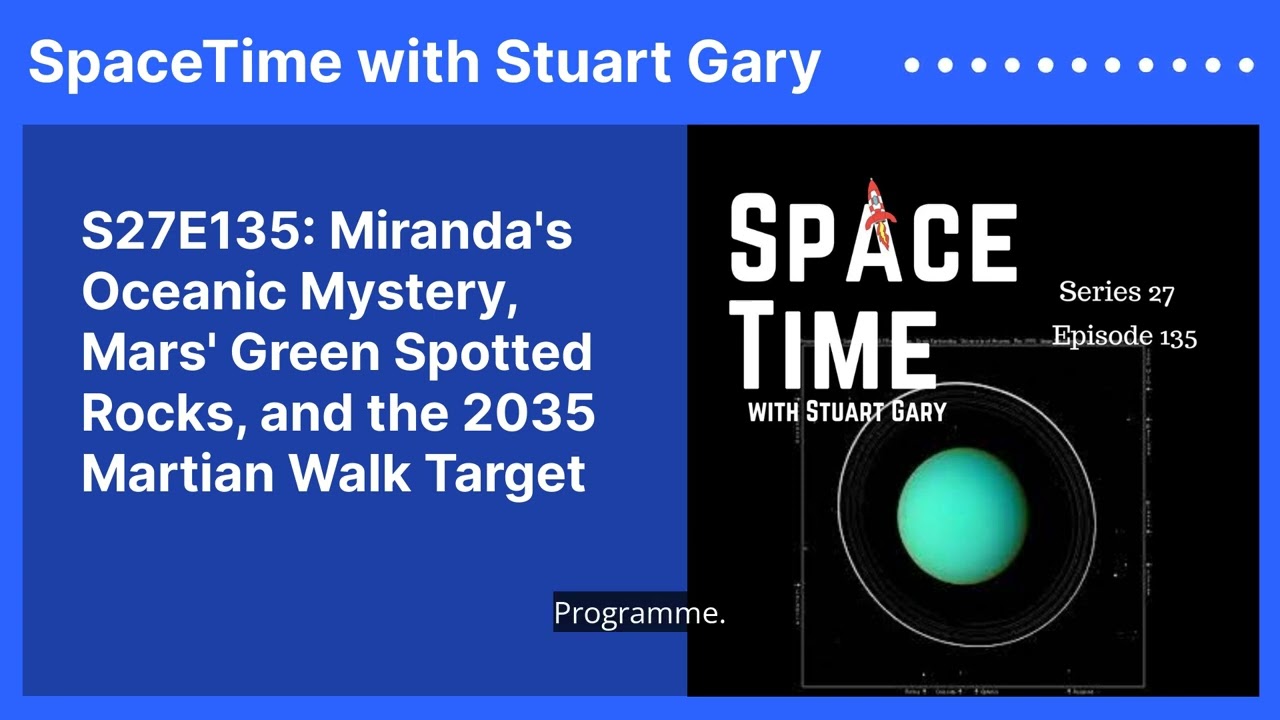 Space News TodayS27E135: Miranda’s Oceanic Mystery, Mars’ Green Spotted Rocks, and the 2035 Martian Walk TargetSpaceTime Series 27 Episode 135
*Could Uranus Moon Miranda Have a Subsurface Ocean?
A new study suggests that Uranus' moon Miranda may harbour a liquid water ocean beneath its peculiar jigsaw-like surface. The findings, published in the Planetary Science Journal, challenge existing assumptions about Miranda's history and composition, potentially placing it among the select few worlds in our solar system with environments that could support life. The study highlights the intriguing possibility of a vast ocean beneath Miranda's icy crust, kept warm by gravitational tidal forces.
*NASA Discovers Weird Red Rocks with Green Spots on...2024-11-0820 min
Space News TodayS27E135: Miranda’s Oceanic Mystery, Mars’ Green Spotted Rocks, and the 2035 Martian Walk TargetSpaceTime Series 27 Episode 135
*Could Uranus Moon Miranda Have a Subsurface Ocean?
A new study suggests that Uranus' moon Miranda may harbour a liquid water ocean beneath its peculiar jigsaw-like surface. The findings, published in the Planetary Science Journal, challenge existing assumptions about Miranda's history and composition, potentially placing it among the select few worlds in our solar system with environments that could support life. The study highlights the intriguing possibility of a vast ocean beneath Miranda's icy crust, kept warm by gravitational tidal forces.
*NASA Discovers Weird Red Rocks with Green Spots on...2024-11-0820 min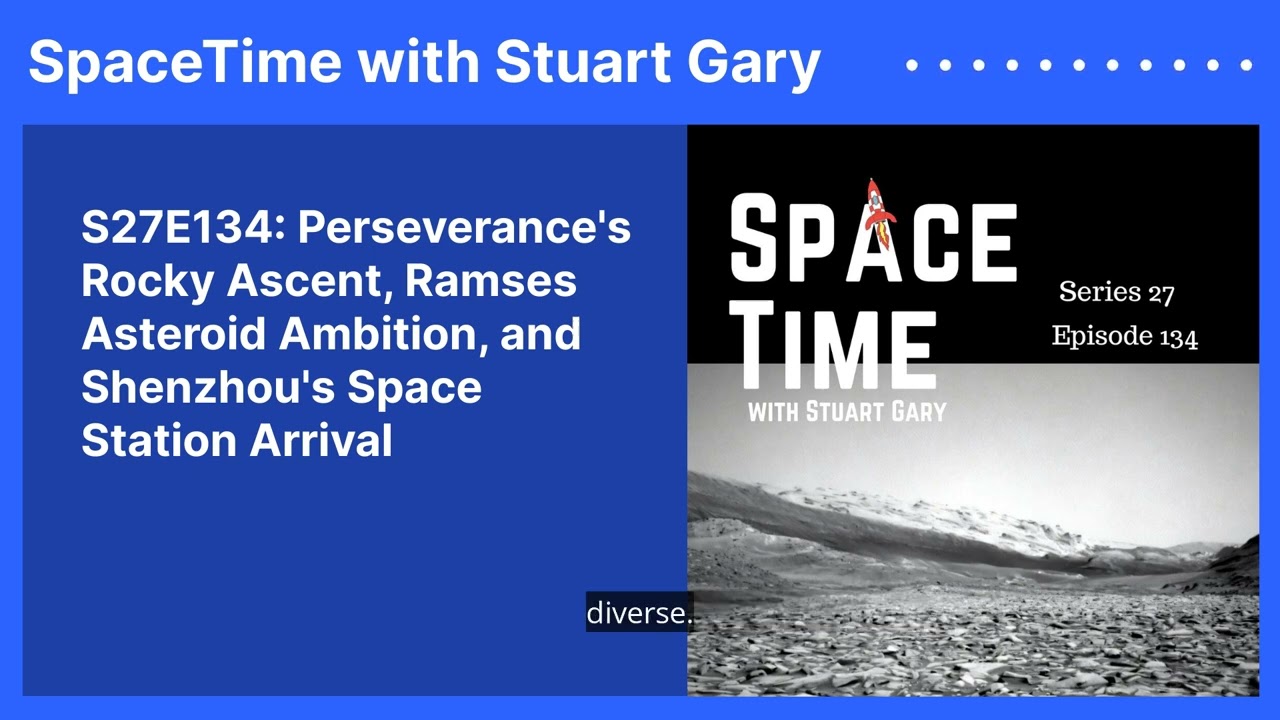 Space News TodayS27E134: Perseverance’s Rocky Ascent, Ramses Asteroid Ambition, and Shenzhou’s Space Station ArrivalSpaceTime Series 27 Episode 134
* Perseverance's Uphill Struggle in Jezero Crater
NASA's Mars Perseverance Rover faces challenges as it attempts to climb the steep and slippery ridgeline of Jezero Crater. Despite its previous experience with steep inclines, this mission marks the first time the rover has tackled such a challenging combination of slope and surface. Engineers are exploring new strategies, including driving backwards and zigzagging, to improve traction. The goal is to reach the crater's rim for valuable scientific exploration, with plans to study potential microbial life signs preserved in ancient rock layers.
* ESA's Ramses...2024-11-0621 min
Space News TodayS27E134: Perseverance’s Rocky Ascent, Ramses Asteroid Ambition, and Shenzhou’s Space Station ArrivalSpaceTime Series 27 Episode 134
* Perseverance's Uphill Struggle in Jezero Crater
NASA's Mars Perseverance Rover faces challenges as it attempts to climb the steep and slippery ridgeline of Jezero Crater. Despite its previous experience with steep inclines, this mission marks the first time the rover has tackled such a challenging combination of slope and surface. Engineers are exploring new strategies, including driving backwards and zigzagging, to improve traction. The goal is to reach the crater's rim for valuable scientific exploration, with plans to study potential microbial life signs preserved in ancient rock layers.
* ESA's Ramses...2024-11-0621 min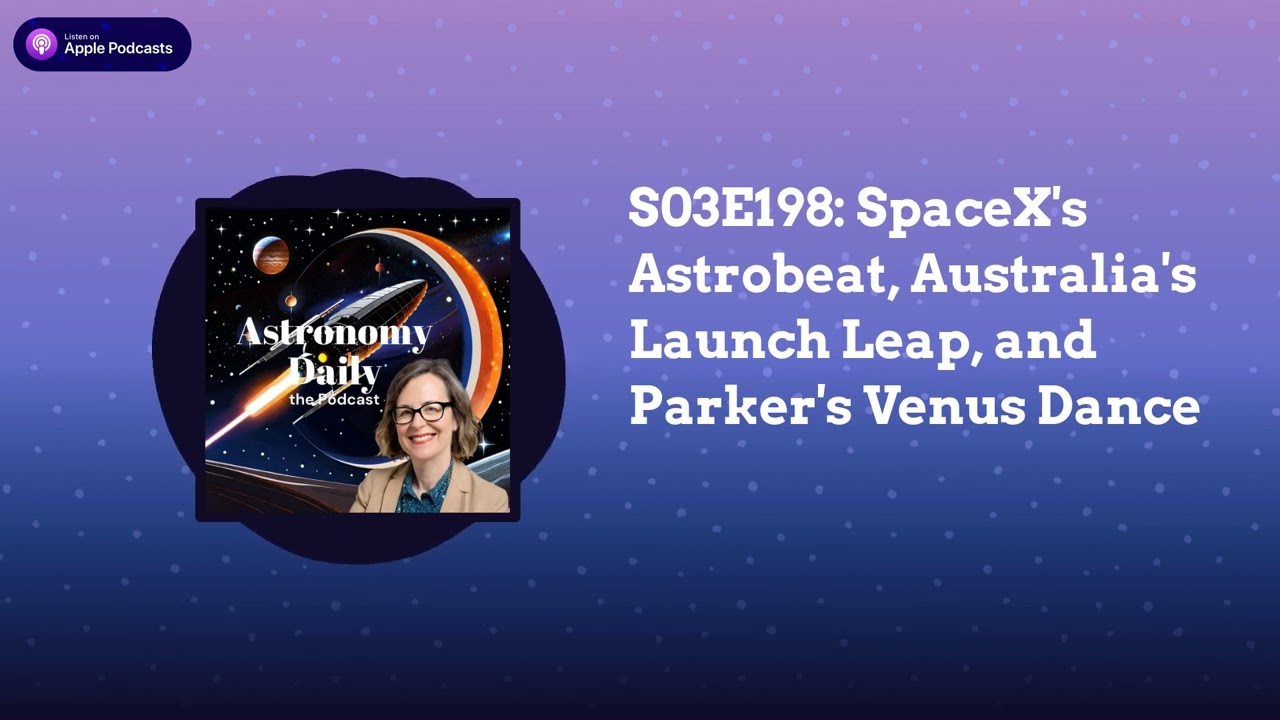 Space News TodayS03E198: SpaceX’s Astrobeat, Australia’s Launch Leap, and Parker’s Venus DanceAstronomy Daily - The Podcast: S03E198
Welcome to Astronomy Daily, your Daily source for the latest in space and Astronomy news. I'm your host, Anna, and today we have an exciting array of stories that will take you from the latest SpaceX mission to the International Space Station to groundbreaking discoveries about Mars and Venus.
Highlights:
- SpaceX Resupply Mission: SpaceX has successfully launched its 31st commercial resupply mission to the International Space Station. The Dragon spacecraft carried over 6,000 pounds of supplies and cutting-edge scientific experiments, including AstroBeat, a project exploring cold...2024-11-0511 min
Space News TodayS03E198: SpaceX’s Astrobeat, Australia’s Launch Leap, and Parker’s Venus DanceAstronomy Daily - The Podcast: S03E198
Welcome to Astronomy Daily, your Daily source for the latest in space and Astronomy news. I'm your host, Anna, and today we have an exciting array of stories that will take you from the latest SpaceX mission to the International Space Station to groundbreaking discoveries about Mars and Venus.
Highlights:
- SpaceX Resupply Mission: SpaceX has successfully launched its 31st commercial resupply mission to the International Space Station. The Dragon spacecraft carried over 6,000 pounds of supplies and cutting-edge scientific experiments, including AstroBeat, a project exploring cold...2024-11-0511 min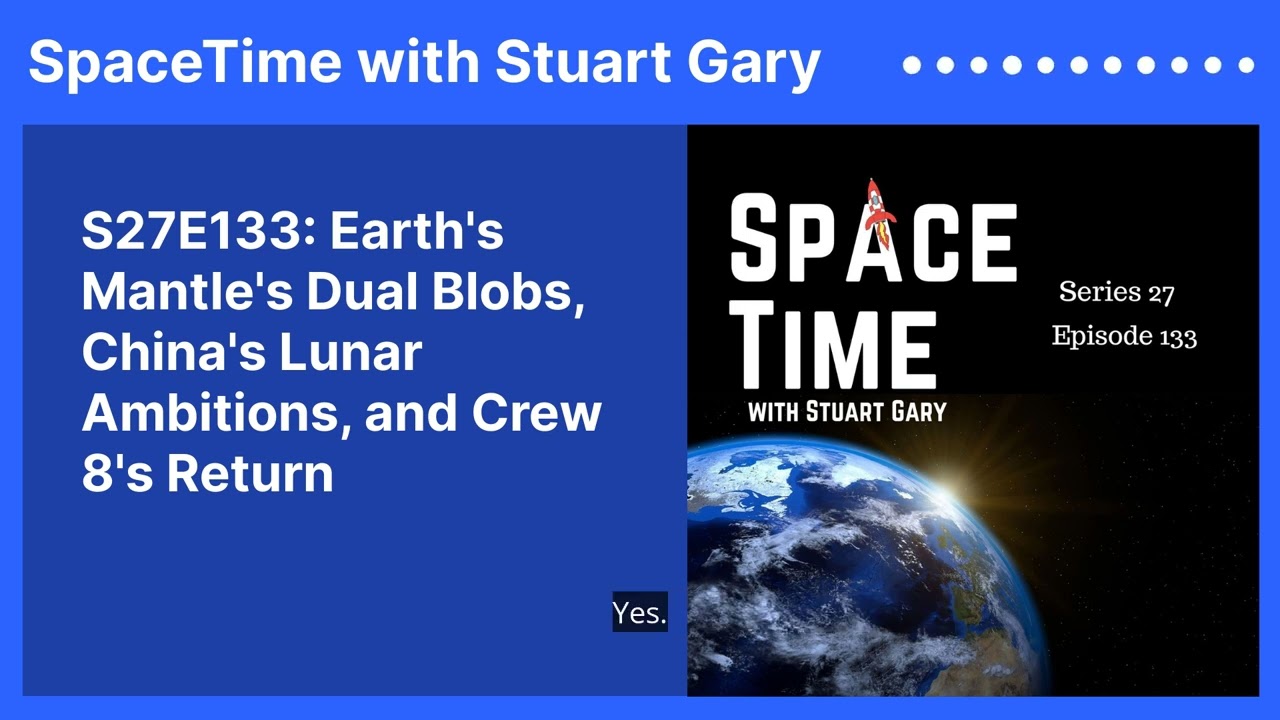 Space News TodayS27E133: Earth’s Mantle’s Dual Blobs, China’s Lunar Ambitions, and Crew 8’s ReturnSpaceTime Series 27 Episode 133
* Earth's Mantle: Two Distinct Domains Revealed
Groundbreaking research has unveiled that the Earth's mantle is composed of two distinct and separate types of materials, forming independent African and Pacific domains. This discovery, published in Nature Geoscience, challenges previous assumptions of a chemically uniform mantle. The study highlights how these domains have been shaped by the formation and breakup of supercontinents over the past 700 million years, revealing the Earth has two chemically distinct hemispheres.
* China's Ambitious Lunar Plans
China is accelerating its space ambitions, aiming to send its first...2024-11-0427 min
Space News TodayS27E133: Earth’s Mantle’s Dual Blobs, China’s Lunar Ambitions, and Crew 8’s ReturnSpaceTime Series 27 Episode 133
* Earth's Mantle: Two Distinct Domains Revealed
Groundbreaking research has unveiled that the Earth's mantle is composed of two distinct and separate types of materials, forming independent African and Pacific domains. This discovery, published in Nature Geoscience, challenges previous assumptions of a chemically uniform mantle. The study highlights how these domains have been shaped by the formation and breakup of supercontinents over the past 700 million years, revealing the Earth has two chemically distinct hemispheres.
* China's Ambitious Lunar Plans
China is accelerating its space ambitions, aiming to send its first...2024-11-0427 min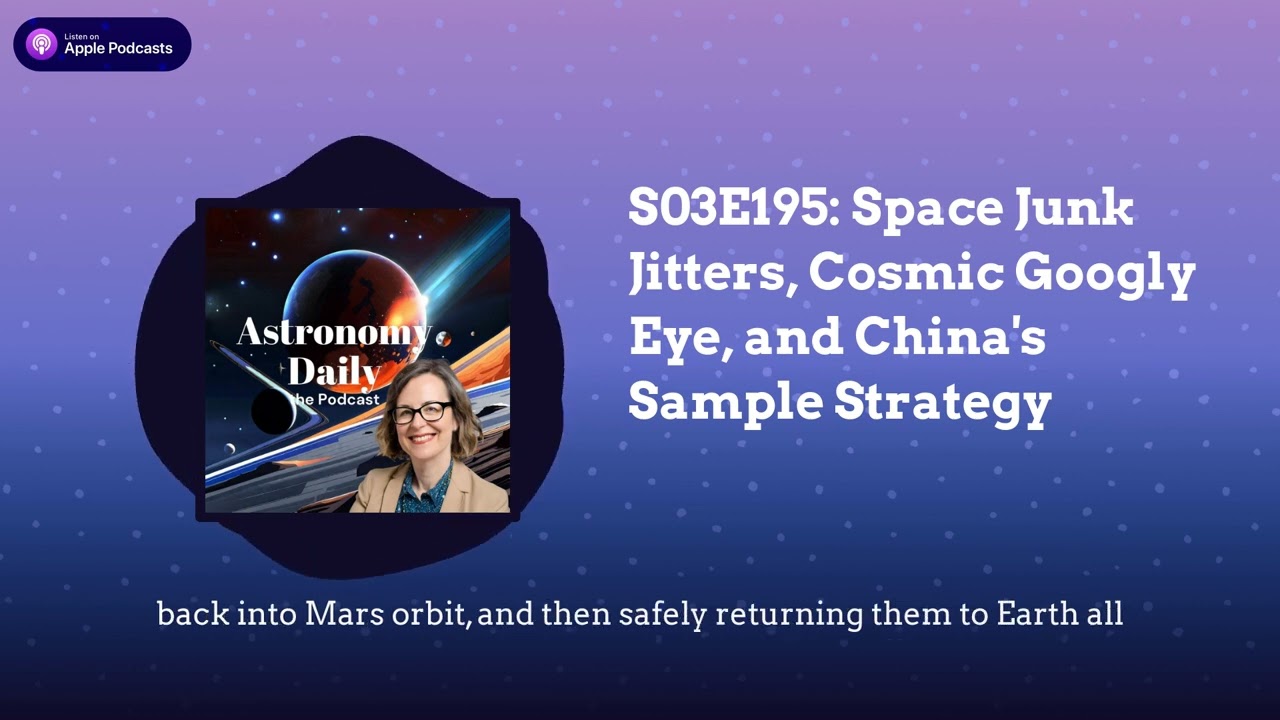 Space News TodayS03E195: Space Junk Jitters, Cosmic Googly Eye, and China’s Sample StrategyAstronomy Daily - The Podcast: S03E195
Welcome to Astronomy Daily, your trusted source for the latest space and Astronomy news. I'm your host, Anna, and today we have an exciting array of stories, from the challenges of orbital debris to the latest in lunar and Martian exploration.
Highlights:
- Intelsat 33e Breakup: The recent disintegration of the Intelsat 33e satellite has intensified concerns over space debris, adding to the already critical situation in low Earth orbit. With over 13,000 metric tons of space junk orbiting our planet, this incident underscores the urgent need...2024-11-0113 min
Space News TodayS03E195: Space Junk Jitters, Cosmic Googly Eye, and China’s Sample StrategyAstronomy Daily - The Podcast: S03E195
Welcome to Astronomy Daily, your trusted source for the latest space and Astronomy news. I'm your host, Anna, and today we have an exciting array of stories, from the challenges of orbital debris to the latest in lunar and Martian exploration.
Highlights:
- Intelsat 33e Breakup: The recent disintegration of the Intelsat 33e satellite has intensified concerns over space debris, adding to the already critical situation in low Earth orbit. With over 13,000 metric tons of space junk orbiting our planet, this incident underscores the urgent need...2024-11-0113 min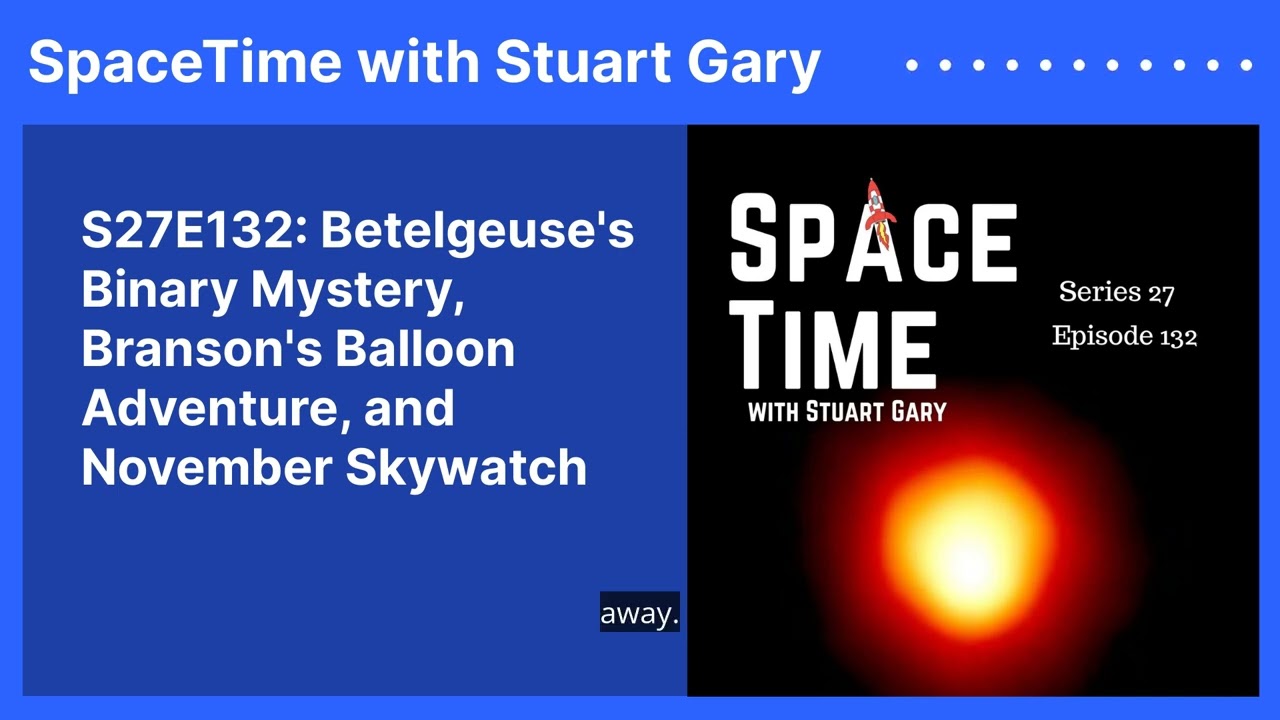 Space News TodayS27E132: Betelgeuse’s Binary Mystery, Branson’s Balloon Adventure, and November SkywatchSpaceTime Series 27 Episode 132
*Could Betelgeuse Actually Be Two Stars?
A new study raises the intriguing possibility that the red supergiant Betelgeuse may not be on the brink of supernova, as previously thought. Instead, it might be a binary star system. This revelation, reported in the Astrophysical Journal, suggests that an unseen companion star could be causing Betelgeuse's pulsing brightness, challenging the long-held belief of its impending explosion.
*Richard Branson to Co-Pilot Space Perspective's First Manned Balloon Flight
Virgin Group founder Richard Branson is set to co-pilot Space Perspective's first manned stratospheric...2024-11-0133 min
Space News TodayS27E132: Betelgeuse’s Binary Mystery, Branson’s Balloon Adventure, and November SkywatchSpaceTime Series 27 Episode 132
*Could Betelgeuse Actually Be Two Stars?
A new study raises the intriguing possibility that the red supergiant Betelgeuse may not be on the brink of supernova, as previously thought. Instead, it might be a binary star system. This revelation, reported in the Astrophysical Journal, suggests that an unseen companion star could be causing Betelgeuse's pulsing brightness, challenging the long-held belief of its impending explosion.
*Richard Branson to Co-Pilot Space Perspective's First Manned Balloon Flight
Virgin Group founder Richard Branson is set to co-pilot Space Perspective's first manned stratospheric...2024-11-0133 min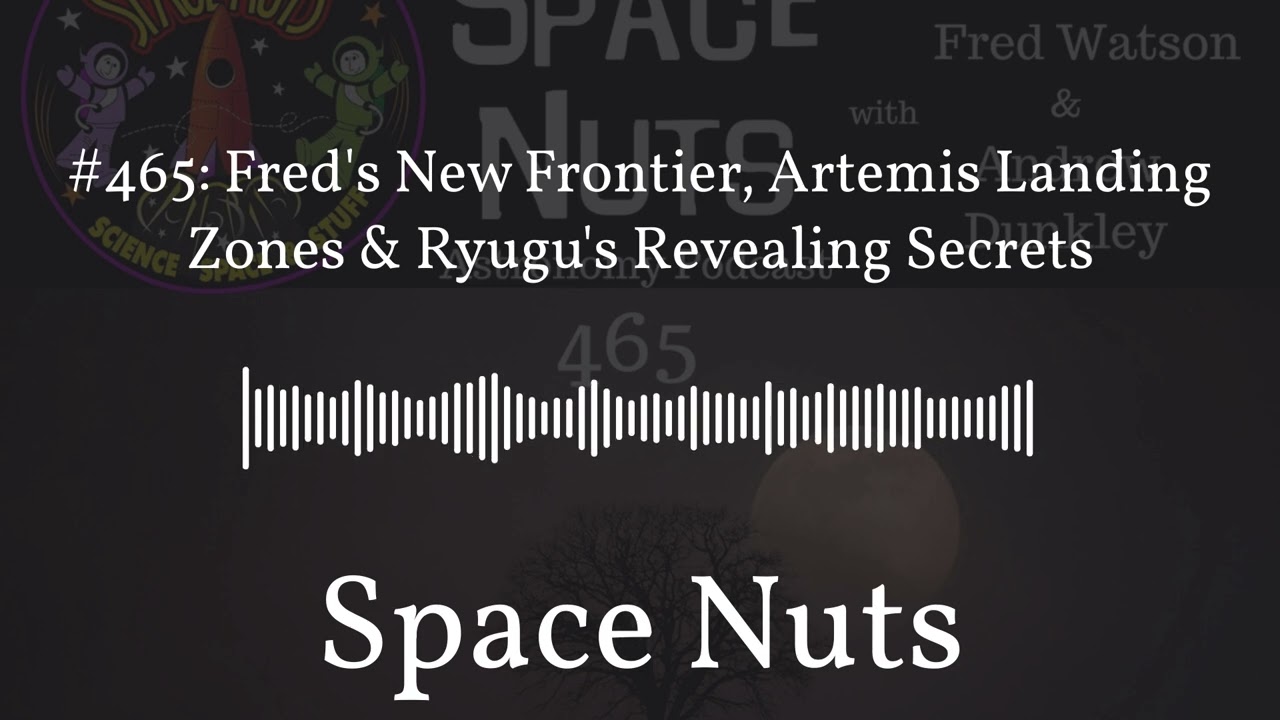 Space News Today#465: Fred’s New Frontier, Artemis Landing Zones & Ryugu’s Revealing Secrets | Space NutsSpace Nuts #464
Join Andrew Dunkley and Professor Fred Watson in an engaging episode of Space Nuts as they explore significant developments in the world of astronomy and Space exploration. From Fred Watson Watson's career transition to groundbreaking lunar missions, this episode is packed with stellar discussions and intriguing insights.
Episode Highlights:
- The Future of Fred Watson : Discover the next chapter in Fred Watson Watson's illustrious career as he transitions from his role as Australia's Astronomer at Large to a new position in academia. Learn how this change could amplify his influence in...2024-10-3132 min
Space News Today#465: Fred’s New Frontier, Artemis Landing Zones & Ryugu’s Revealing Secrets | Space NutsSpace Nuts #464
Join Andrew Dunkley and Professor Fred Watson in an engaging episode of Space Nuts as they explore significant developments in the world of astronomy and Space exploration. From Fred Watson Watson's career transition to groundbreaking lunar missions, this episode is packed with stellar discussions and intriguing insights.
Episode Highlights:
- The Future of Fred Watson : Discover the next chapter in Fred Watson Watson's illustrious career as he transitions from his role as Australia's Astronomer at Large to a new position in academia. Learn how this change could amplify his influence in...2024-10-3132 min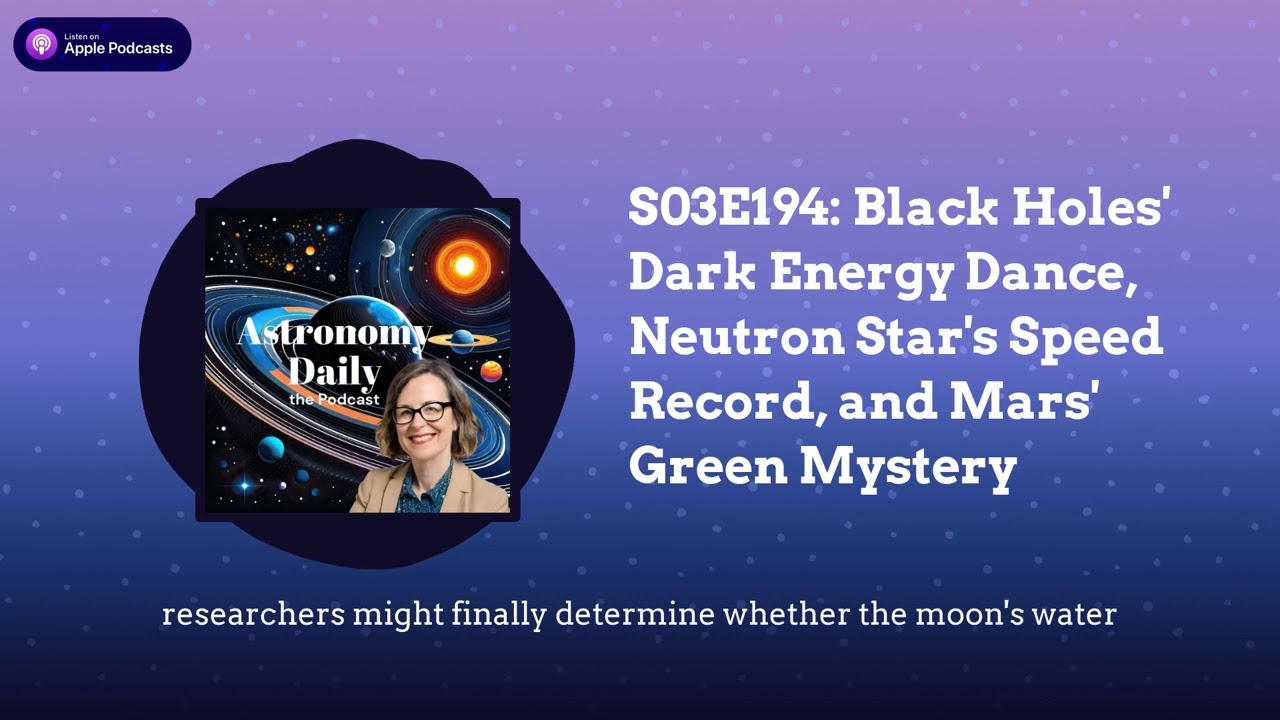 Space News TodayS03E194: Black Holes’ Dark Energy Dance, Neutron Star’s Speed Record, and Mars’ Green MysteryAstronomy Daily - The Podcast: S03E194
Welcome to Astronomy Daily, your Daily source for the latest space and Astronomy news. I'm Anna, and today we have a stellar lineup of stories that will take you from the depths of black holes to the surface of Mars.
Highlights:
- Black Holes and Dark Energy: Discover groundbreaking research suggesting that black holes might hold the key to understanding dark energy, a force that constitutes 70% of our universe and drives its accelerating expansion.
- Fastest Spinning Neutron Star: Researchers at DTU Space have...2024-10-3114 min
Space News TodayS03E194: Black Holes’ Dark Energy Dance, Neutron Star’s Speed Record, and Mars’ Green MysteryAstronomy Daily - The Podcast: S03E194
Welcome to Astronomy Daily, your Daily source for the latest space and Astronomy news. I'm Anna, and today we have a stellar lineup of stories that will take you from the depths of black holes to the surface of Mars.
Highlights:
- Black Holes and Dark Energy: Discover groundbreaking research suggesting that black holes might hold the key to understanding dark energy, a force that constitutes 70% of our universe and drives its accelerating expansion.
- Fastest Spinning Neutron Star: Researchers at DTU Space have...2024-10-3114 min Space News TodayS03E193: Voyager’s Vanishing Act, Tiangong’s Triumph, and Miranda’s Icy SecretAstronomy Daily - The Podcast: S03E193
Welcome to Astronomy Daily, your trusted source for the latest space and Astronomy news. I'm your host, Anna, and today we have an exciting lineup of stories, from the edge of our solar system to surprising discoveries closer to home.
Highlights :
- Voyager 1 Communication Challenges: NASA's Voyager 1, 15 billion miles from Earth, recently faced communication issues due to a fault protection system trigger. After switching to a backup S band system, NASA successfully reestablished contact, showcasing the spacecraft's resilience and the challenges of maintaining aging technology in...2024-10-3014 min
Space News TodayS03E193: Voyager’s Vanishing Act, Tiangong’s Triumph, and Miranda’s Icy SecretAstronomy Daily - The Podcast: S03E193
Welcome to Astronomy Daily, your trusted source for the latest space and Astronomy news. I'm your host, Anna, and today we have an exciting lineup of stories, from the edge of our solar system to surprising discoveries closer to home.
Highlights :
- Voyager 1 Communication Challenges: NASA's Voyager 1, 15 billion miles from Earth, recently faced communication issues due to a fault protection system trigger. After switching to a backup S band system, NASA successfully reestablished contact, showcasing the spacecraft's resilience and the challenges of maintaining aging technology in...2024-10-3014 min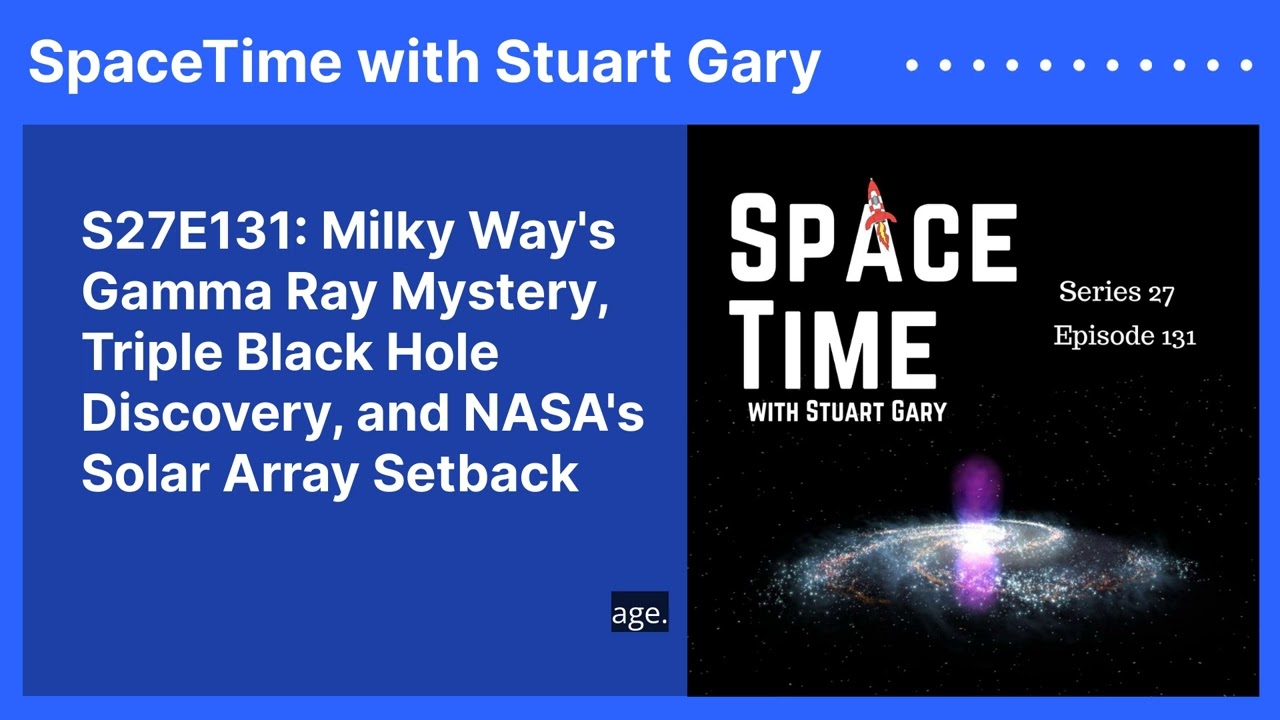 Space News TodayS27E131: Milky Way’s Gamma Ray Mystery, Triple Black Hole Discovery, and NASA’s Solar Array SetbackSpaceTime Series 27 Episode 131
* Ultra High Energy Gamma Rays Detected in the Milky Way's Core
Scientists have detected ultra high energy gamma rays emanating from the centre of the Milky Way. This discovery, reported in the Astrophysical Journal Letters, offers a new perspective on the violent phenomena occurring in the galactic core. Using the High Altitude Water Cherenkov Observatory in Mexico, researchers measured these gamma rays at over 100 tera electron volts, providing insights into the cosmic processes involving Sagittarius A, the galaxy's central supermassive black hole.
* Discovery of a Potential Triple Black Hole System 2024-10-3022 min
Space News TodayS27E131: Milky Way’s Gamma Ray Mystery, Triple Black Hole Discovery, and NASA’s Solar Array SetbackSpaceTime Series 27 Episode 131
* Ultra High Energy Gamma Rays Detected in the Milky Way's Core
Scientists have detected ultra high energy gamma rays emanating from the centre of the Milky Way. This discovery, reported in the Astrophysical Journal Letters, offers a new perspective on the violent phenomena occurring in the galactic core. Using the High Altitude Water Cherenkov Observatory in Mexico, researchers measured these gamma rays at over 100 tera electron volts, providing insights into the cosmic processes involving Sagittarius A, the galaxy's central supermassive black hole.
* Discovery of a Potential Triple Black Hole System 2024-10-3022 min Space News TodayS03E192: Cosmic Combat Concerns, CubeSat’s Celestial Check-In, and Artemis Aims HighAstronomy Daily - The Podcast: S03E192
Welcome to Astronomy Daily, your premier source for the latest news in space and Astronomy. I'm your host, Anna, and today we're embarking on a cosmic journey that spans from the militarization of space to the mysteries of Venus.
Highlights:
- Militarization of Space : As space becomes a potential battleground, nations worldwide are investing in space defense. With both kinetic and non-kinetic weapons being explored, the risks of an arms race in space are growing, raising concerns about the need for updated international regulations.
...2024-10-2912 min
Space News TodayS03E192: Cosmic Combat Concerns, CubeSat’s Celestial Check-In, and Artemis Aims HighAstronomy Daily - The Podcast: S03E192
Welcome to Astronomy Daily, your premier source for the latest news in space and Astronomy. I'm your host, Anna, and today we're embarking on a cosmic journey that spans from the militarization of space to the mysteries of Venus.
Highlights:
- Militarization of Space : As space becomes a potential battleground, nations worldwide are investing in space defense. With both kinetic and non-kinetic weapons being explored, the risks of an arms race in space are growing, raising concerns about the need for updated international regulations.
...2024-10-2912 min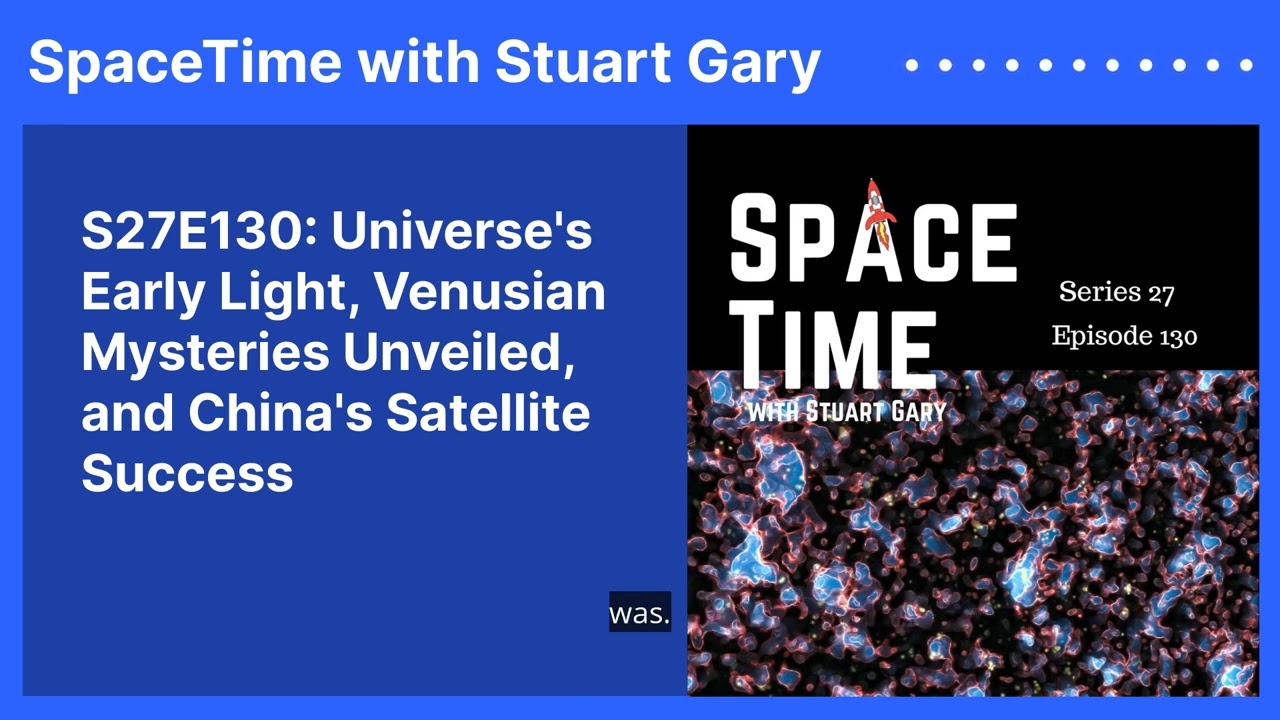 Space News TodayS27E130: Universe’s Early Light, Venusian Mysteries Unveiled, and China’s Satellite SuccessSpaceTime Series 27 Episode 130
*Epoch of Reionization: New Insights from Webb
A groundbreaking study suggests the epoch of reionization, a pivotal era in the universe's early evolution, may have occurred 350 million years earlier than previously believed. Utilising data from the James Webb Space Telescope, astronomers have uncovered a greater abundance of extreme ultraviolet emitting galaxies, challenging established models. This revelation might imply that the cosmic microwave background radiation and the Lyman alpha forest should appear different, posing a conundrum for scientists and opening new avenues for understanding the universe's history.
*NASA's DaVinci Mission Prepares...2024-10-2924 min
Space News TodayS27E130: Universe’s Early Light, Venusian Mysteries Unveiled, and China’s Satellite SuccessSpaceTime Series 27 Episode 130
*Epoch of Reionization: New Insights from Webb
A groundbreaking study suggests the epoch of reionization, a pivotal era in the universe's early evolution, may have occurred 350 million years earlier than previously believed. Utilising data from the James Webb Space Telescope, astronomers have uncovered a greater abundance of extreme ultraviolet emitting galaxies, challenging established models. This revelation might imply that the cosmic microwave background radiation and the Lyman alpha forest should appear different, posing a conundrum for scientists and opening new avenues for understanding the universe's history.
*NASA's DaVinci Mission Prepares...2024-10-2924 min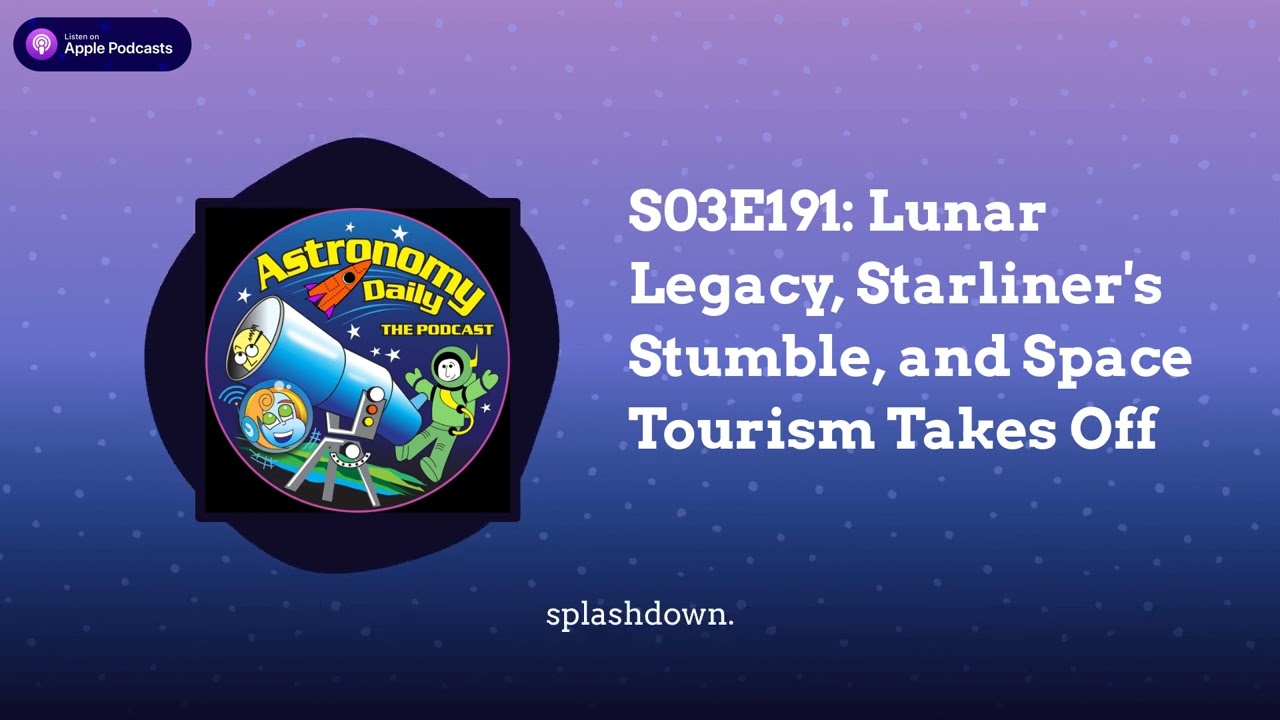 Space News TodayS03E191: Lunar Legacy, Starliner’s Stumble, and Space Tourism Takes OffAstronomy Daily the Podcast - S03E191
Welcome to Astronomy AstroDailyPod, your daily source for the latest in Space and Astronomy news. I'm Steve, your host, and today we have a fascinating lineup of stories ranging from lunar discoveries to Space tourism and astronaut health updates.
Highlights:
- Apollo 16 Lunar Sample Revelations : Fresh analysis of lunar dust collected by Apollo 16 astronauts unveils new insights into the moon's history. These findings highlight the impact of asteroid strikes and could guide future moon missions in locating valuable resources for moon bases.
- Crew 8...2024-10-2818 min
Space News TodayS03E191: Lunar Legacy, Starliner’s Stumble, and Space Tourism Takes OffAstronomy Daily the Podcast - S03E191
Welcome to Astronomy AstroDailyPod, your daily source for the latest in Space and Astronomy news. I'm Steve, your host, and today we have a fascinating lineup of stories ranging from lunar discoveries to Space tourism and astronaut health updates.
Highlights:
- Apollo 16 Lunar Sample Revelations : Fresh analysis of lunar dust collected by Apollo 16 astronauts unveils new insights into the moon's history. These findings highlight the impact of asteroid strikes and could guide future moon missions in locating valuable resources for moon bases.
- Crew 8...2024-10-2818 min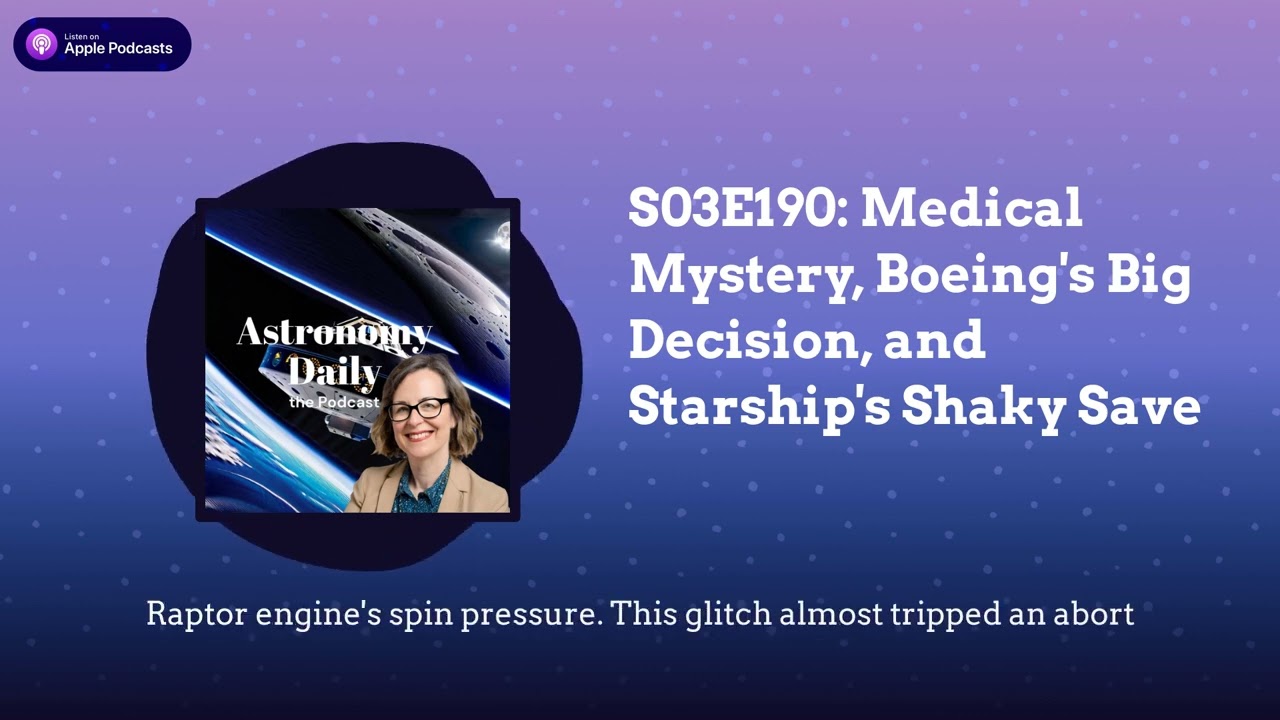 Space News TodayS03E190: Medical Mystery, Boeing’s Big Decision, and Starship’s Shaky SaveAstronomy Daily - The Podcast: S03E190
Welcome to Astronomy Daily, your go-to source for the latest and most exciting space and Astronomy news. I'm your host, Anna, and I'm thrilled to bring you today's Cosmic Update. In this episode, we've got a packed lineup of fascinating stories from the world of space exploration and discovery.
Highlights :
- SpaceX Crew Dragon Medical Incident: An unnamed NASA astronaut faced an unspecified medical issue shortly after returning to Earth from a nearly eight-month mission aboard the ISS. The crew's return was delayed due to hurricanes...2024-10-2610 min
Space News TodayS03E190: Medical Mystery, Boeing’s Big Decision, and Starship’s Shaky SaveAstronomy Daily - The Podcast: S03E190
Welcome to Astronomy Daily, your go-to source for the latest and most exciting space and Astronomy news. I'm your host, Anna, and I'm thrilled to bring you today's Cosmic Update. In this episode, we've got a packed lineup of fascinating stories from the world of space exploration and discovery.
Highlights :
- SpaceX Crew Dragon Medical Incident: An unnamed NASA astronaut faced an unspecified medical issue shortly after returning to Earth from a nearly eight-month mission aboard the ISS. The crew's return was delayed due to hurricanes...2024-10-2610 min Space News TodayS03E189: Debris Dilemmas, Cosmic Espionage, and Black Hole BalletAstronomy Daily - The Podcast: S03E189
Welcome to Astronomy Daily, your source for the latest in space and Astronomy news. I'm your host, Anna, and today we're exploring a range of captivating topics, from space debris solutions to black holes, espionage in space, and the burgeoning field of space tourism.
Highlights:
- Zero Debris Charter: The European Space Agency is tackling the growing issue of space debris with their innovative Zero Debris Charter, gaining over 100 international signatories, including New Zealand and Mexico. This voluntary initiative aims to foster global cooperation in mitigating...2024-10-2510 min
Space News TodayS03E189: Debris Dilemmas, Cosmic Espionage, and Black Hole BalletAstronomy Daily - The Podcast: S03E189
Welcome to Astronomy Daily, your source for the latest in space and Astronomy news. I'm your host, Anna, and today we're exploring a range of captivating topics, from space debris solutions to black holes, espionage in space, and the burgeoning field of space tourism.
Highlights:
- Zero Debris Charter: The European Space Agency is tackling the growing issue of space debris with their innovative Zero Debris Charter, gaining over 100 international signatories, including New Zealand and Mexico. This voluntary initiative aims to foster global cooperation in mitigating...2024-10-2510 min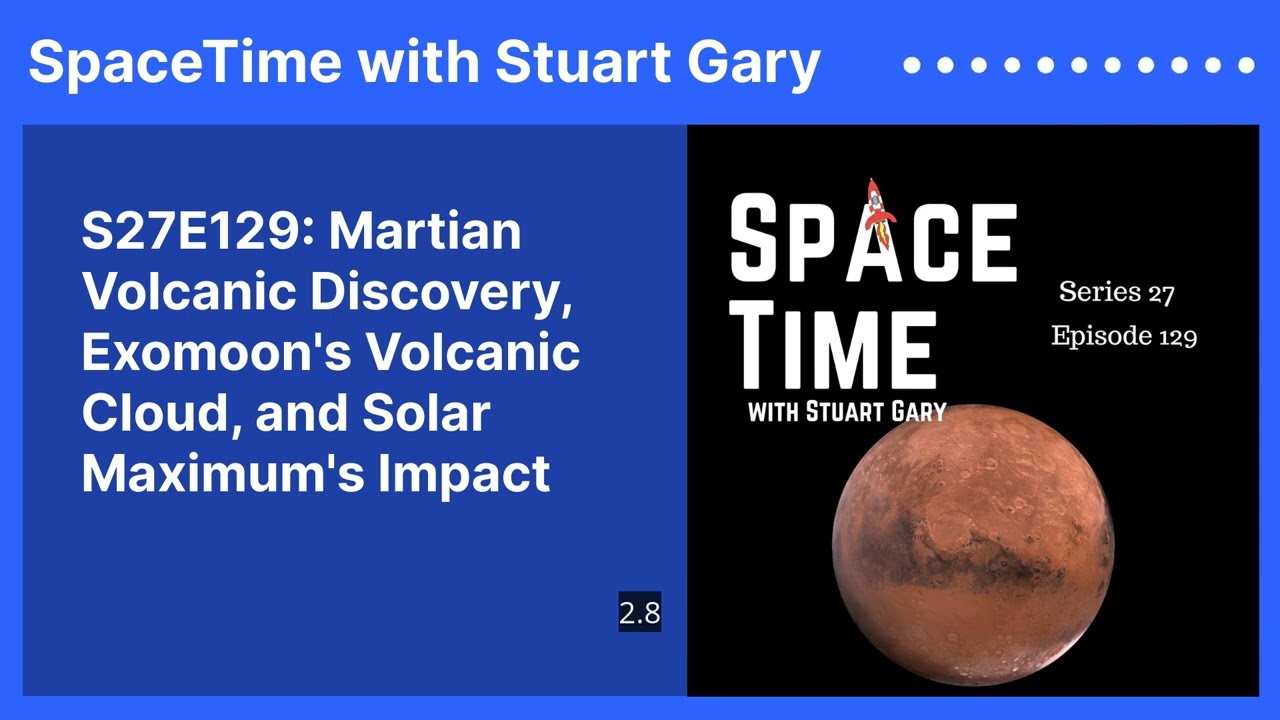 Space News TodayS27E129: Martian Volcanic Discovery, Exomoon’s Volcanic Cloud, and Solar Maximum’s ImpactSpaceTime Series 27 Episode 129
*First Evidence of a Volcanic Splatocone on Mars
Scientists have identified what appears to be the first evidence of a volcanic splatter cone on Mars, similar to those found on Earth. This discovery, led by Ian Flynn from the University of Idaho, sheds light on the volcanic processes of the red planet. The presence of splatter cones, which form under specific conditions, provides new insights into Martian volcanology and the dynamics of volcanic eruptions.
*Volcanic Moon Around a Distant Exoplanet?
A new study suggests the presence of a...2024-10-2527 min
Space News TodayS27E129: Martian Volcanic Discovery, Exomoon’s Volcanic Cloud, and Solar Maximum’s ImpactSpaceTime Series 27 Episode 129
*First Evidence of a Volcanic Splatocone on Mars
Scientists have identified what appears to be the first evidence of a volcanic splatter cone on Mars, similar to those found on Earth. This discovery, led by Ian Flynn from the University of Idaho, sheds light on the volcanic processes of the red planet. The presence of splatter cones, which form under specific conditions, provides new insights into Martian volcanology and the dynamics of volcanic eruptions.
*Volcanic Moon Around a Distant Exoplanet?
A new study suggests the presence of a...2024-10-2527 min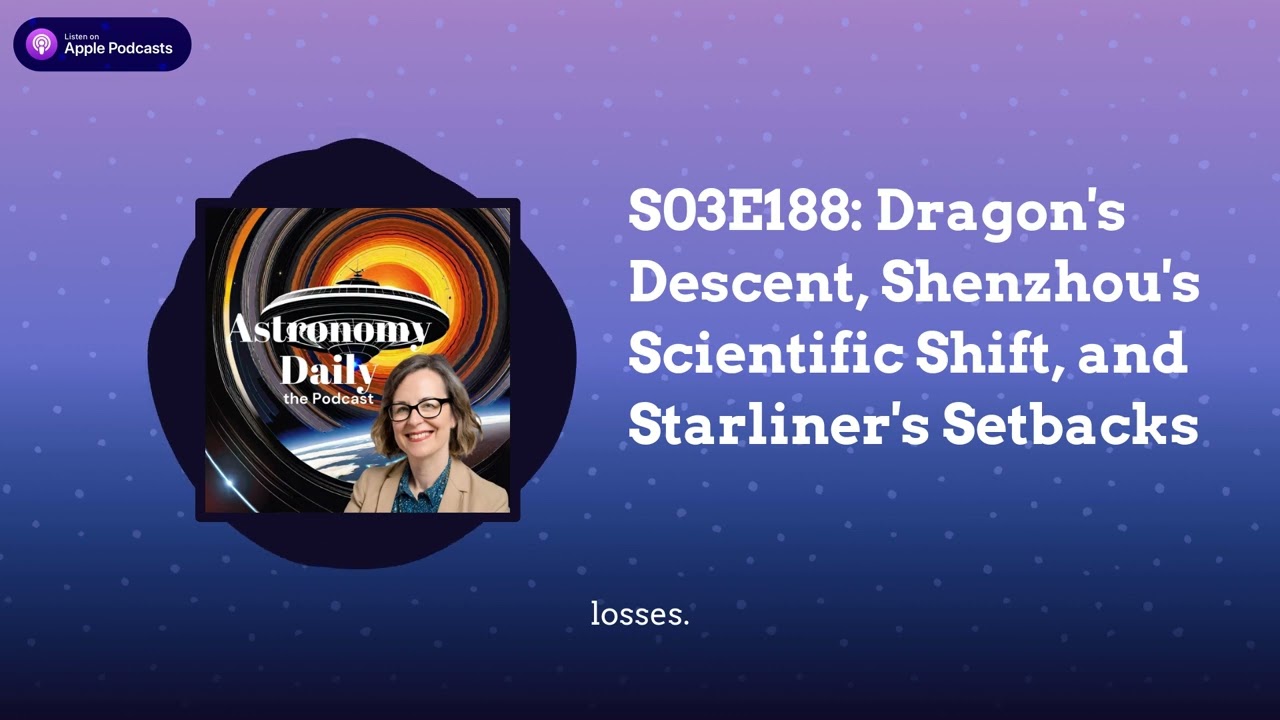 Space News TodayS03E188: Dragon’s Descent, Shenzhou’s Scientific Shift, and Starliner’s SetbacksAstronomy Daily - The Podcast: S03E188
Welcome to another episode of Astronomy Daily, your go-to source for the latest in space and Astronomy news. I'm your host, Anna, and today we're diving into a cosmic lineup of stories that span from SpaceX missions to innovative methods of studying solar storms and satellite mishaps.
Highlights:
- SpaceX Crew-8 Mission : After weather-related delays, SpaceX's Crew-8 mission is finally on its way back to Earth. The Dragon spacecraft, Endeavor, has undocked from the ISS, marking the end of a seven-month mission for its four astronauts...2024-10-2411 min
Space News TodayS03E188: Dragon’s Descent, Shenzhou’s Scientific Shift, and Starliner’s SetbacksAstronomy Daily - The Podcast: S03E188
Welcome to another episode of Astronomy Daily, your go-to source for the latest in space and Astronomy news. I'm your host, Anna, and today we're diving into a cosmic lineup of stories that span from SpaceX missions to innovative methods of studying solar storms and satellite mishaps.
Highlights:
- SpaceX Crew-8 Mission : After weather-related delays, SpaceX's Crew-8 mission is finally on its way back to Earth. The Dragon spacecraft, Endeavor, has undocked from the ISS, marking the end of a seven-month mission for its four astronauts...2024-10-2411 min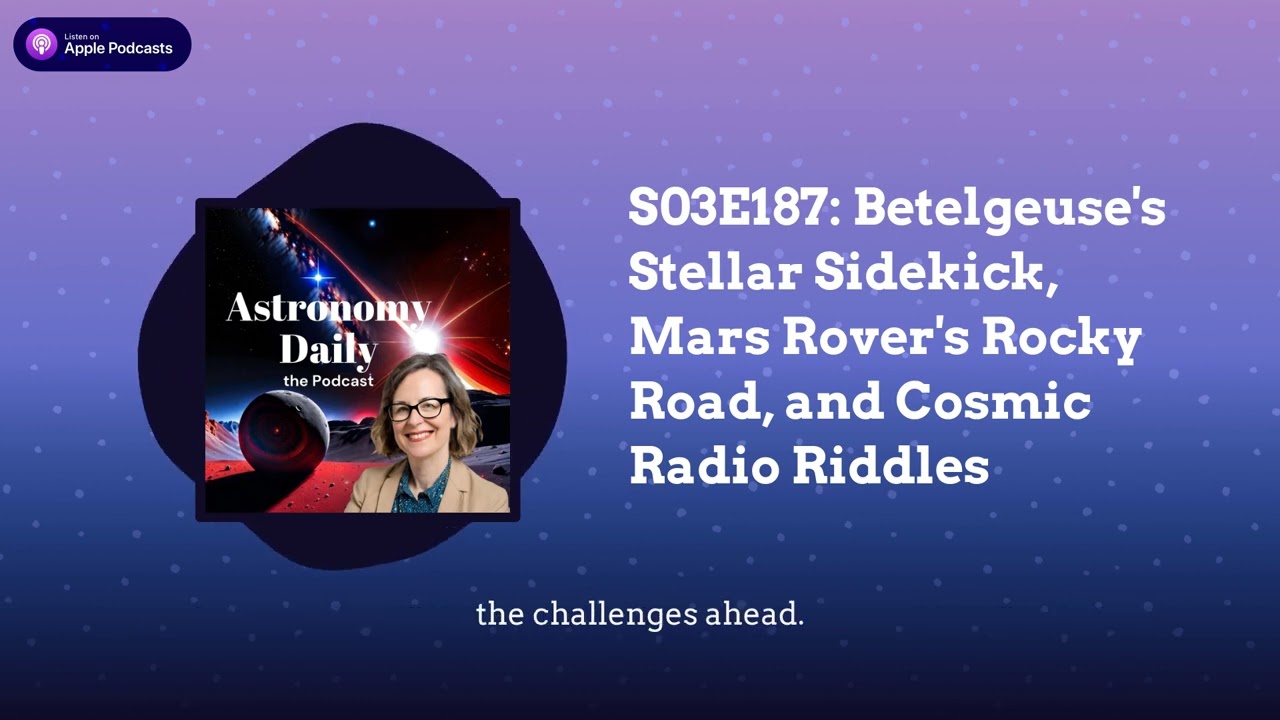 Space News TodayS03E187: Betelgeuse’s Stellar Sidekick, Mars Rover’s Rocky Road, and Cosmic Radio RiddlesAstronomy Daily - The Podcast: S03E187
Welcome to Astronomy Daily, your trusted source for the latest and most exciting space and Astronomy news. I'm Anna, and today we're embarking on a cosmic adventure filled with fascinating discoveries and developments from the universe.
Highlights:
- Betelgeuse's Mysterious Behavior: Explore the latest theory about Betelgeuse, the enigmatic red supergiant star. Scientists suspect it might have a companion, affectionately dubbed "Beetle Buddy," which could explain its recent dimming and brightening. Could this cosmic giant be hiding secrets about its future supernova potential?
...2024-10-2312 min
Space News TodayS03E187: Betelgeuse’s Stellar Sidekick, Mars Rover’s Rocky Road, and Cosmic Radio RiddlesAstronomy Daily - The Podcast: S03E187
Welcome to Astronomy Daily, your trusted source for the latest and most exciting space and Astronomy news. I'm Anna, and today we're embarking on a cosmic adventure filled with fascinating discoveries and developments from the universe.
Highlights:
- Betelgeuse's Mysterious Behavior: Explore the latest theory about Betelgeuse, the enigmatic red supergiant star. Scientists suspect it might have a companion, affectionately dubbed "Beetle Buddy," which could explain its recent dimming and brightening. Could this cosmic giant be hiding secrets about its future supernova potential?
...2024-10-2312 min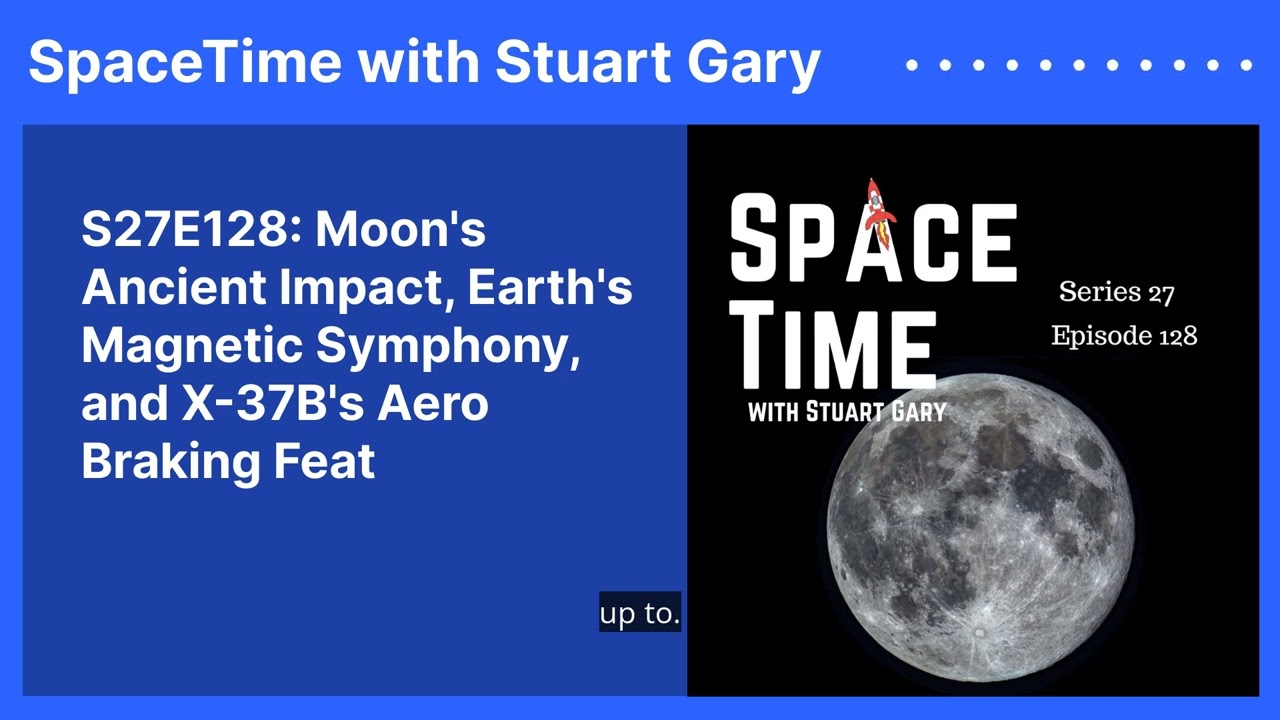 Space News TodayS27E128: Moon’s Ancient Impact, Earth’s Magnetic Symphony, and X-37B’s Aero Braking FeatSpaceTime Series 27 Episode 128
*Dating the Moon's Oldest Impact Crater
Scientists have pinpointed the edge of the massive South Pole-Aitken Basin, the largest and oldest known impact crater on the Moon, dating it to over 4.32 billion years old. By analysing a lunar meteorite, researchers have concluded that this impact site is around 120 million years earlier than the previously believed intense period of impact bombardment. These findings provide a clearer picture of the Moon's early impact history and have implications for understanding Earth's early conditions.
*Recreating the Sound of Earth's Magnetic Polar Flip
...2024-10-2323 min
Space News TodayS27E128: Moon’s Ancient Impact, Earth’s Magnetic Symphony, and X-37B’s Aero Braking FeatSpaceTime Series 27 Episode 128
*Dating the Moon's Oldest Impact Crater
Scientists have pinpointed the edge of the massive South Pole-Aitken Basin, the largest and oldest known impact crater on the Moon, dating it to over 4.32 billion years old. By analysing a lunar meteorite, researchers have concluded that this impact site is around 120 million years earlier than the previously believed intense period of impact bombardment. These findings provide a clearer picture of the Moon's early impact history and have implications for understanding Earth's early conditions.
*Recreating the Sound of Earth's Magnetic Polar Flip
...2024-10-2323 min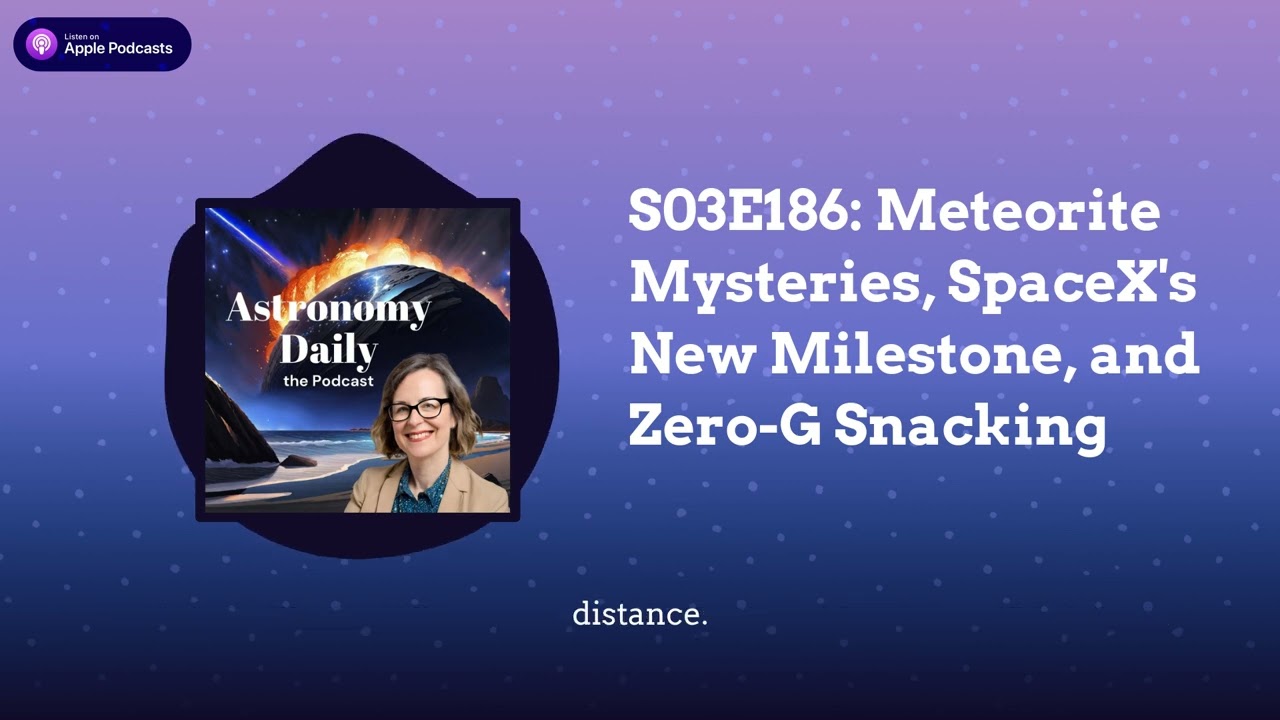 Space News TodayS03E186: Meteorite Mysteries, SpaceX’s New Milestone, and Zero-G SnackingAstronomy Daily - The Podcast: S03E186
Welcome to another thrilling episode of Astronomy Daily, your go-to source for the latest in space and Astronomy news. I'm your host, Anna, and today we're diving into a cosmic lineup that spans from ancient meteorite impacts to the intriguing world of black hole mergers.
Highlights:
- Ancient Meteorite Impacts: Journey back 3.26 billion years to an Earth transformed by a colossal meteorite impact, 200 times larger than the one that ended the dinosaurs. Discover how this cataclysmic event may have surprisingly boosted early life, as revealed by...2024-10-2209 min
Space News TodayS03E186: Meteorite Mysteries, SpaceX’s New Milestone, and Zero-G SnackingAstronomy Daily - The Podcast: S03E186
Welcome to another thrilling episode of Astronomy Daily, your go-to source for the latest in space and Astronomy news. I'm your host, Anna, and today we're diving into a cosmic lineup that spans from ancient meteorite impacts to the intriguing world of black hole mergers.
Highlights:
- Ancient Meteorite Impacts: Journey back 3.26 billion years to an Earth transformed by a colossal meteorite impact, 200 times larger than the one that ended the dinosaurs. Discover how this cataclysmic event may have surprisingly boosted early life, as revealed by...2024-10-2209 min Space News TodayS27E127: SpaceX’s Triumph, Asteroid Mysteries, and Europa’s Ocean OdysseySpaceTime Series 27 Episode 127
*SpaceX's Starship's Fifth Test Flight Success
SpaceX's Starship has completed its fifth test flight with a spectacular feat of engineering, successfully catching the super heavy booster with mechanical chopsticks on the launch pad tower. The booster, equipped with 33 Raptor engines, returned to Earth after a successful launch from SpaceX's Starbase in Texas, showcasing the potential for rapid reuse and interplanetary missions. The test flight marks a significant step towards developing Starship for NASA's Artemis III mission, aiming for a manned moon landing in 2026.
* Origins of Earth's Meteorites Uncovered
...2024-10-2134 min
Space News TodayS27E127: SpaceX’s Triumph, Asteroid Mysteries, and Europa’s Ocean OdysseySpaceTime Series 27 Episode 127
*SpaceX's Starship's Fifth Test Flight Success
SpaceX's Starship has completed its fifth test flight with a spectacular feat of engineering, successfully catching the super heavy booster with mechanical chopsticks on the launch pad tower. The booster, equipped with 33 Raptor engines, returned to Earth after a successful launch from SpaceX's Starbase in Texas, showcasing the potential for rapid reuse and interplanetary missions. The test flight marks a significant step towards developing Starship for NASA's Artemis III mission, aiming for a manned moon landing in 2026.
* Origins of Earth's Meteorites Uncovered
...2024-10-2134 min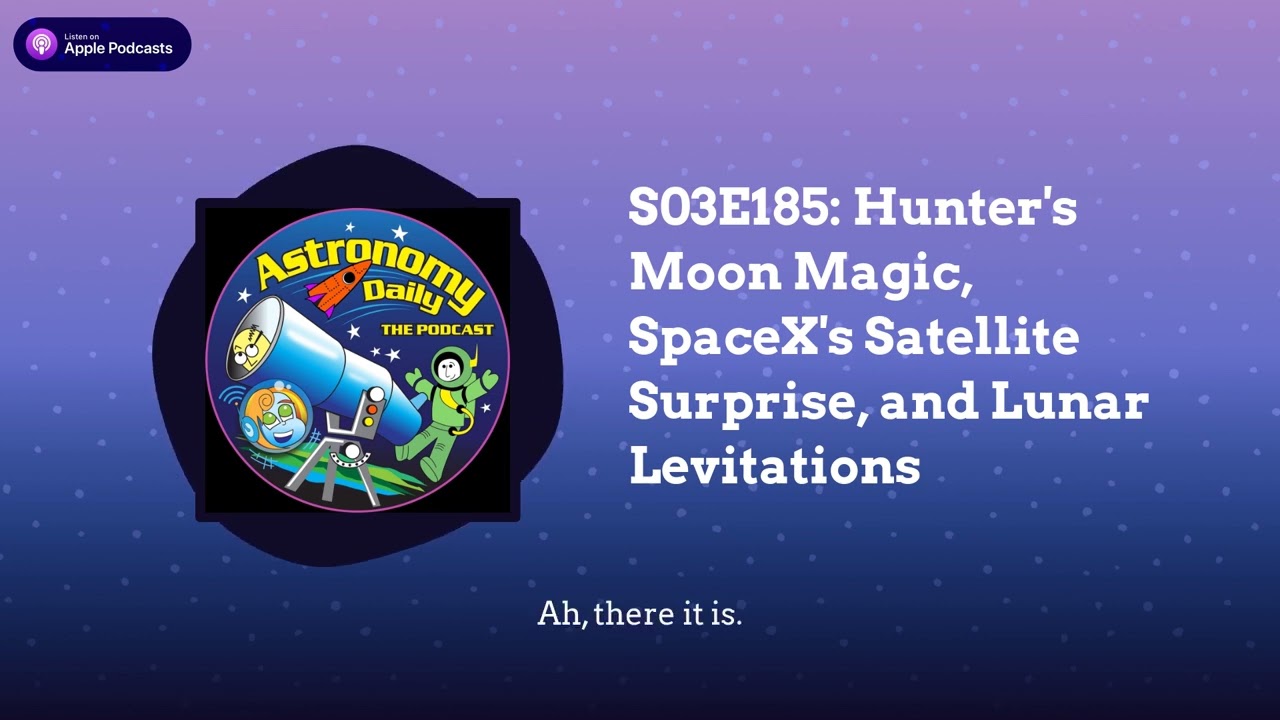 Space News TodayS03E185: Hunter’s Moon Magic, SpaceX’s Satellite Surprise, and Lunar LevitationsAstronomy Daily - The Podcast: S03E185
Welcome to Astronomy AstroDailyPod, your trusted source for the latest in Space and astronomy news. Join hosts Steve and Hallie for an enlightening journey through the cosmos, packed with the latest updat es and stories that are sure to ignite your curiosity.
Highlights:
- Hunter's Moon Delight: Experience the beauty of the Hunter's Moon as observed from Newcastle, Australia. This celestial event has captivated skywatchers worldwide, overtaking the excitement of recent auroras.
- SpaceX Satellite Launch : SpaceX successfully launched 20 spare OneWeb satellites to bolster...2024-10-2115 min
Space News TodayS03E185: Hunter’s Moon Magic, SpaceX’s Satellite Surprise, and Lunar LevitationsAstronomy Daily - The Podcast: S03E185
Welcome to Astronomy AstroDailyPod, your trusted source for the latest in Space and astronomy news. Join hosts Steve and Hallie for an enlightening journey through the cosmos, packed with the latest updat es and stories that are sure to ignite your curiosity.
Highlights:
- Hunter's Moon Delight: Experience the beauty of the Hunter's Moon as observed from Newcastle, Australia. This celestial event has captivated skywatchers worldwide, overtaking the excitement of recent auroras.
- SpaceX Satellite Launch : SpaceX successfully launched 20 spare OneWeb satellites to bolster...2024-10-2115 min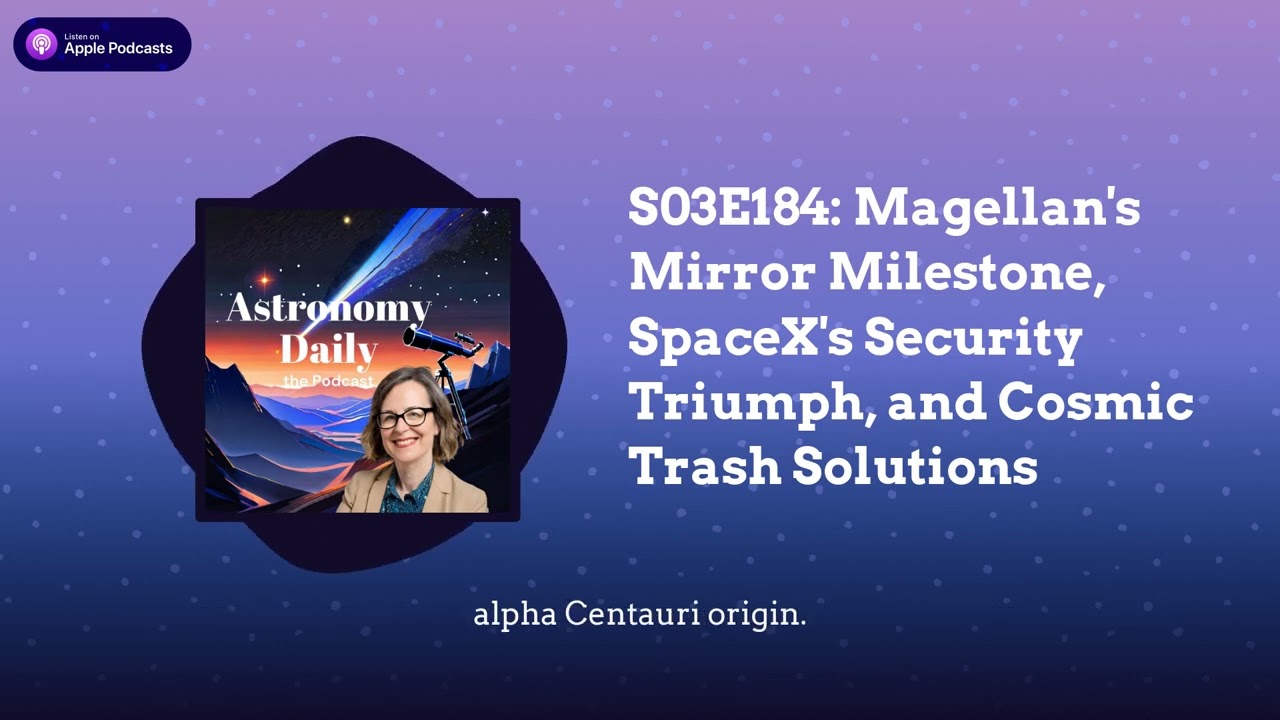 Space News TodayS03E184: Magellan’s Mirror Milestone, SpaceX’s Security Triumph, and Cosmic Trash SolutionsAstronomy Daily - The Podcast: S03E184
Welcome to Astronomy Daily, your go-to source for the latest and most exciting developments in space and Astronomy. I'm your host, Anna, and today we are embarking on a cosmic journey that promises to expand our understanding of the universe.
Highlights:
- Giant Magellan Telescope Progress: Exciting advancements in the Giant Magellan Telescope project, set to become the world's largest telescope. The successful installation of its primary mirror into a support system prototype marks a crucial milestone. This mirror, with an area half the size of...2024-10-1909 min
Space News TodayS03E184: Magellan’s Mirror Milestone, SpaceX’s Security Triumph, and Cosmic Trash SolutionsAstronomy Daily - The Podcast: S03E184
Welcome to Astronomy Daily, your go-to source for the latest and most exciting developments in space and Astronomy. I'm your host, Anna, and today we are embarking on a cosmic journey that promises to expand our understanding of the universe.
Highlights:
- Giant Magellan Telescope Progress: Exciting advancements in the Giant Magellan Telescope project, set to become the world's largest telescope. The successful installation of its primary mirror into a support system prototype marks a crucial milestone. This mirror, with an area half the size of...2024-10-1909 min Space News TodayS03E183: Webb’s Galactic Oddity, Europe’s Moonlight Initiative, and Branson’s Balloon ComebackAstronomy Daily - The Podcast: S03E183
Welcome to Astronomy Daily, your trusted source for the most exciting space and Astronomy news. I'm Anna, and today we've got a stellar lineup of stories that'll take you from the far reaches of the cosmos right back to our own celestial neighborhood.
Highlights:
- James Webb's Galactic Discovery: The James Webb Space Telescope unveils a galaxy, GSnDG 9422, that challenges our understanding of the early universe. This cosmic oddity, appearing a billion years after the Big Bang, features glowing gas outshining its stars, offering insights into...2024-10-1811 min
Space News TodayS03E183: Webb’s Galactic Oddity, Europe’s Moonlight Initiative, and Branson’s Balloon ComebackAstronomy Daily - The Podcast: S03E183
Welcome to Astronomy Daily, your trusted source for the most exciting space and Astronomy news. I'm Anna, and today we've got a stellar lineup of stories that'll take you from the far reaches of the cosmos right back to our own celestial neighborhood.
Highlights:
- James Webb's Galactic Discovery: The James Webb Space Telescope unveils a galaxy, GSnDG 9422, that challenges our understanding of the early universe. This cosmic oddity, appearing a billion years after the Big Bang, features glowing gas outshining its stars, offering insights into...2024-10-1811 min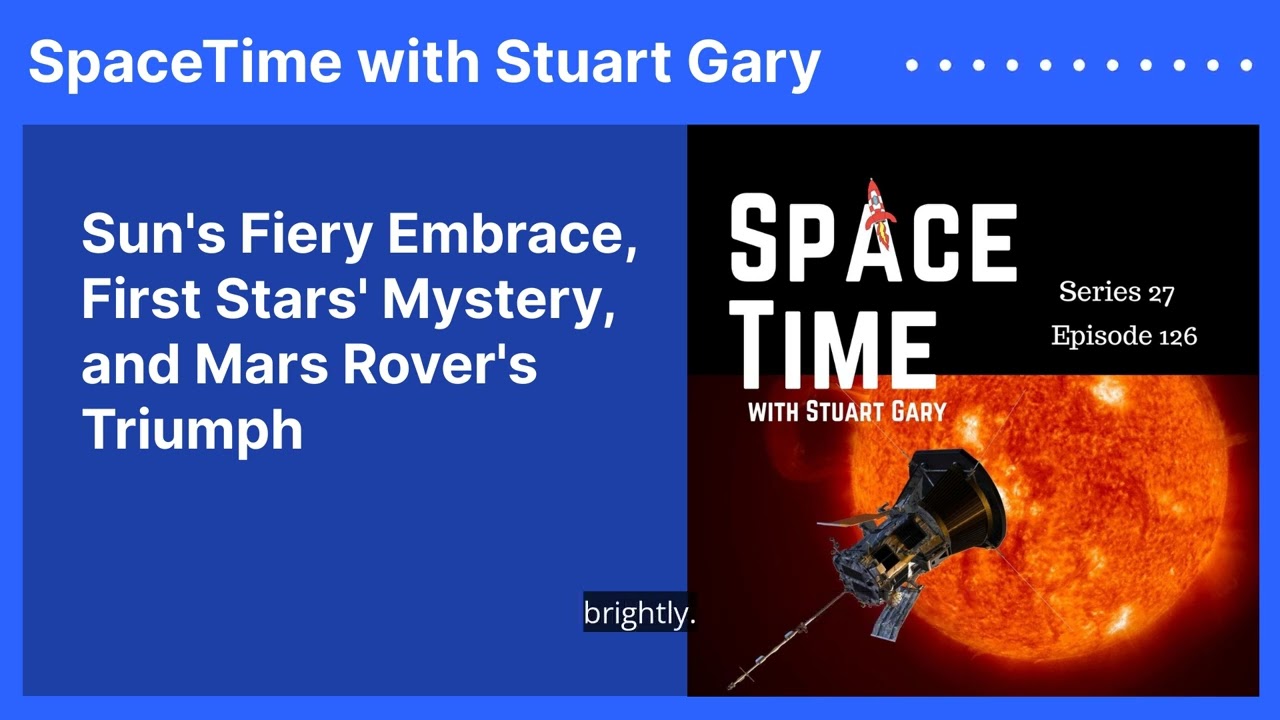 Space News TodaySun’s Fiery Embrace, First Stars’ Mystery, and Mars Rover’s TriumphSpaceTime Series 27 Episode 126
* NASA's Parker Solar Probe Completes 21st Philip of the Sun
NASA's Parker Solar Probe has achieved its 21st close encounter with the Sun, matching its previous distance and speed records. The spacecraft swooped to within 7.26 million kilometers of the solar surface at a record speed of 635,300 km/h. This flyby sets up the probe for its final closest approaches, with its orbit shaped by a Venus gravity assist. The mission, launched in 2018, aims to study the Sun's corona and the solar wind, unraveling the mysteries of solar phenomena that impact the solar...2024-10-1823 min
Space News TodaySun’s Fiery Embrace, First Stars’ Mystery, and Mars Rover’s TriumphSpaceTime Series 27 Episode 126
* NASA's Parker Solar Probe Completes 21st Philip of the Sun
NASA's Parker Solar Probe has achieved its 21st close encounter with the Sun, matching its previous distance and speed records. The spacecraft swooped to within 7.26 million kilometers of the solar surface at a record speed of 635,300 km/h. This flyby sets up the probe for its final closest approaches, with its orbit shaped by a Venus gravity assist. The mission, launched in 2018, aims to study the Sun's corona and the solar wind, unraveling the mysteries of solar phenomena that impact the solar...2024-10-1823 min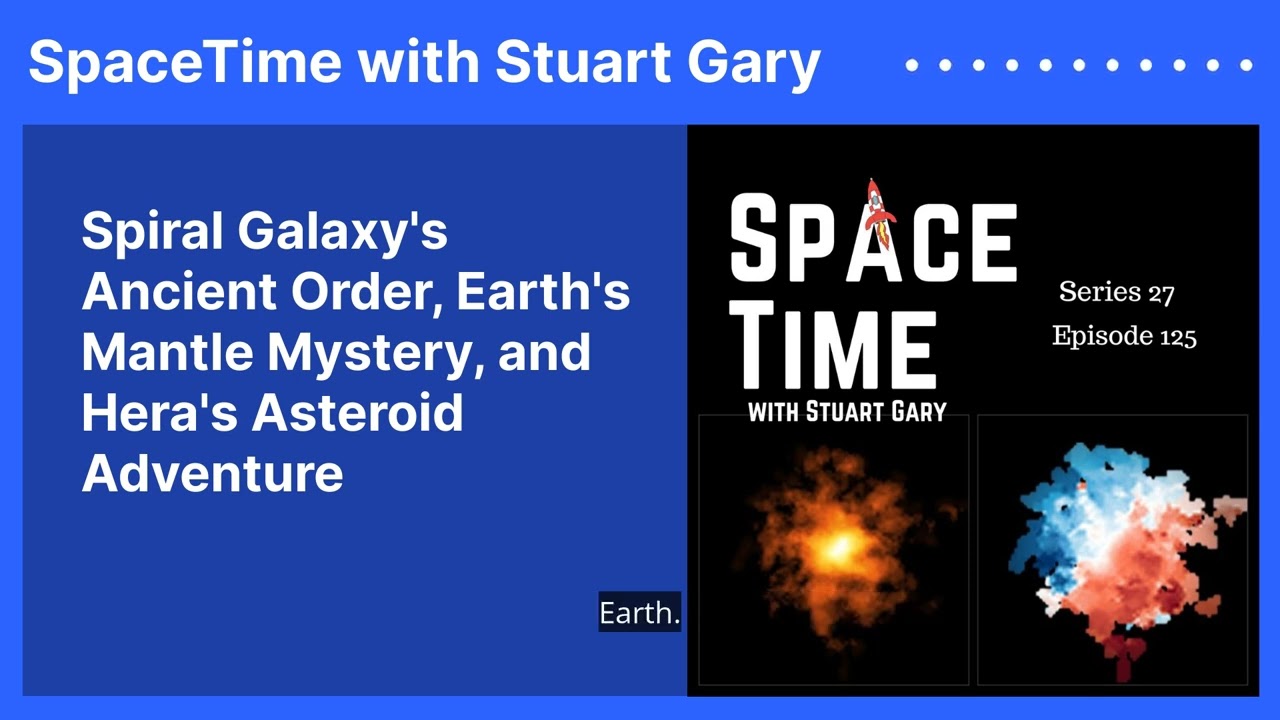 Space News TodaySpiral Galaxy’s Ancient Order, Earth’s Mantle Mystery, and Hera’s Asteroid AdventureSpaceTime Series 27 Episode 125
*Discovery of the Most Distant Spiral Galaxy
Astronomers have identified the most distant spiral galaxy ever seen, named REBELS 25. This galaxy, observed as it was 13.1 billion years ago, challenges current models of galaxy formation with its orderly spiral structure, despite being from an era when the universe was just 700 million years old. The discovery, made using the ALMA radio telescope in Chile, offers new insights into the early universe and the evolution of galaxies.
*Record-Breaking Mantle Rock Recovery
Scientists have achieved a groundbreaking recovery of rocks from Earth's...2024-10-1633 min
Space News TodaySpiral Galaxy’s Ancient Order, Earth’s Mantle Mystery, and Hera’s Asteroid AdventureSpaceTime Series 27 Episode 125
*Discovery of the Most Distant Spiral Galaxy
Astronomers have identified the most distant spiral galaxy ever seen, named REBELS 25. This galaxy, observed as it was 13.1 billion years ago, challenges current models of galaxy formation with its orderly spiral structure, despite being from an era when the universe was just 700 million years old. The discovery, made using the ALMA radio telescope in Chile, offers new insights into the early universe and the evolution of galaxies.
*Record-Breaking Mantle Rock Recovery
Scientists have achieved a groundbreaking recovery of rocks from Earth's...2024-10-1633 min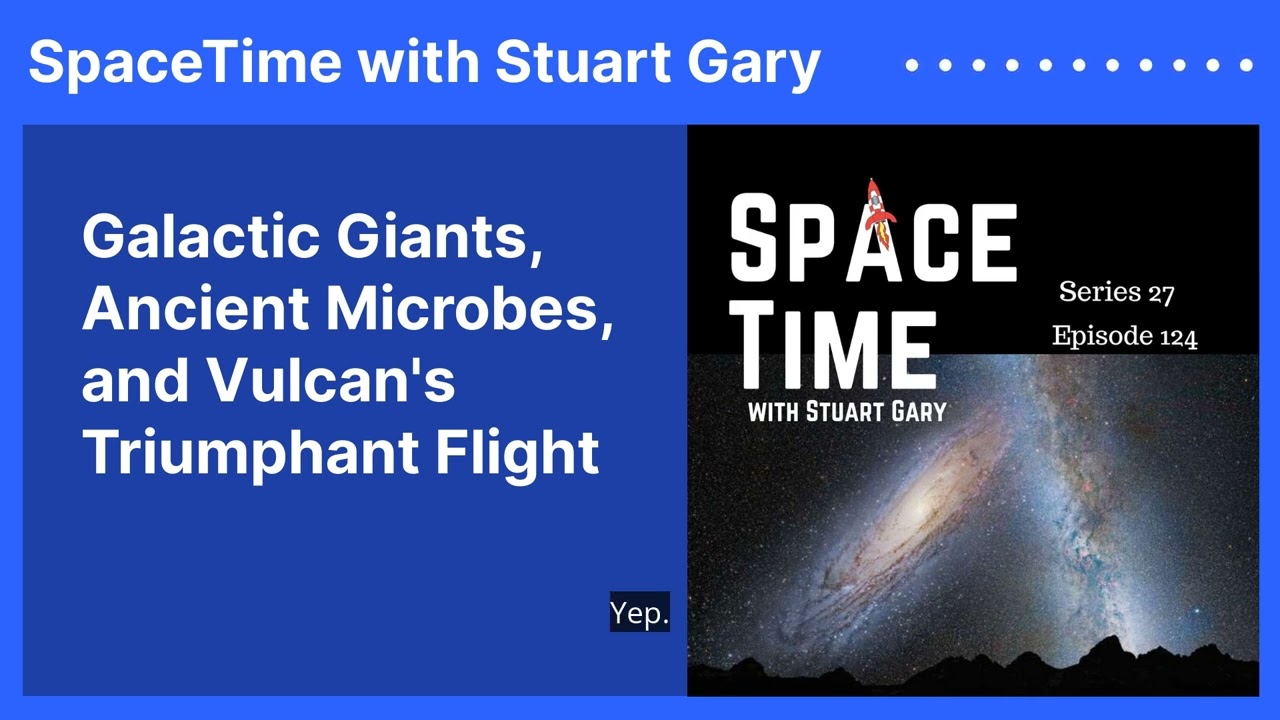 Space News TodayGalactic Giants, Ancient Microbes, and Vulcan’s Triumphant FlightSpaceTime Series 27 Episode 124
*Galaxies: Bigger Than We Ever Imagined
Recent findings suggest that galaxies are far larger than previously thought, with gaseous halos extending much further into intergalactic space. This study, published in Nature Astronomy, focuses on the circumgalactic medium of a starburst galaxy 270 million light-years away. These halos, accounting for about 70% of a galaxy's mass excluding dark matter, may already be interacting with neighboring galaxies like Andromeda and the Milky Way. The research offers fresh insights into galaxy evolution, gas cycling, and the cosmic web.
*Ancient Microbes Found in Billion-Year-Old Rocks
2024-10-1529 min
Space News TodayGalactic Giants, Ancient Microbes, and Vulcan’s Triumphant FlightSpaceTime Series 27 Episode 124
*Galaxies: Bigger Than We Ever Imagined
Recent findings suggest that galaxies are far larger than previously thought, with gaseous halos extending much further into intergalactic space. This study, published in Nature Astronomy, focuses on the circumgalactic medium of a starburst galaxy 270 million light-years away. These halos, accounting for about 70% of a galaxy's mass excluding dark matter, may already be interacting with neighboring galaxies like Andromeda and the Milky Way. The research offers fresh insights into galaxy evolution, gas cycling, and the cosmic web.
*Ancient Microbes Found in Billion-Year-Old Rocks
2024-10-1529 min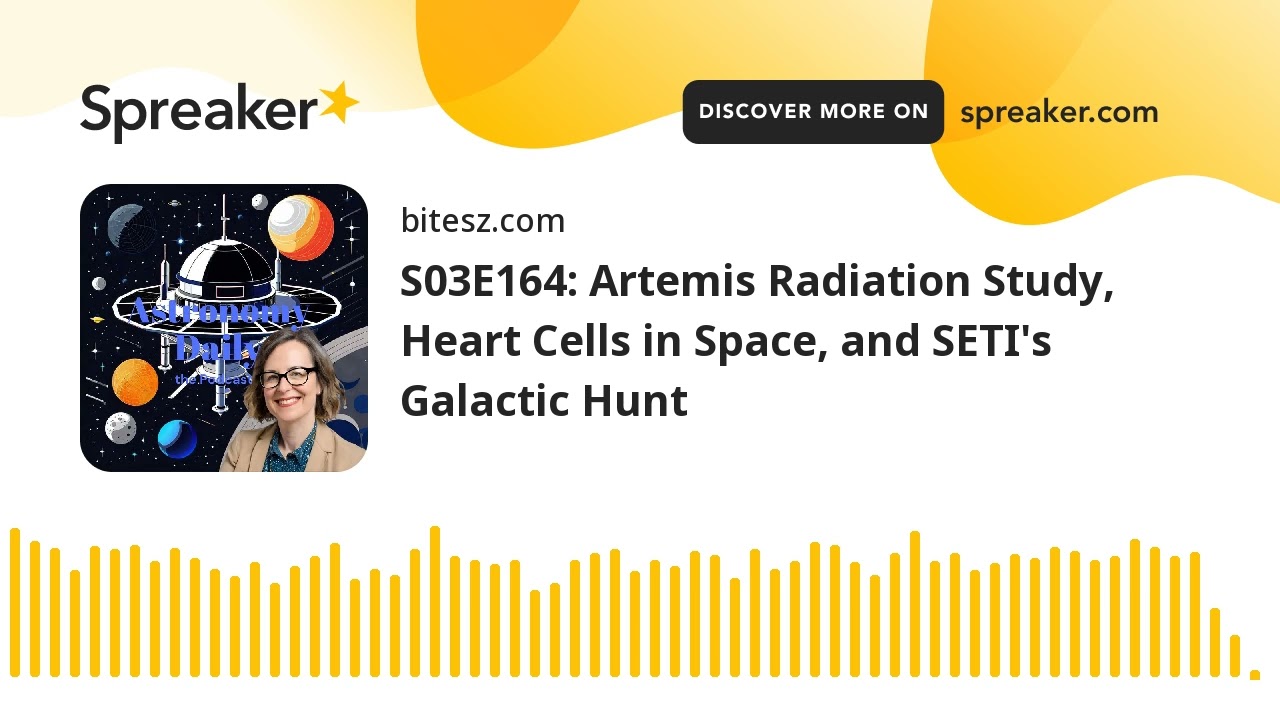 Space News TodayS03E164: Artemis Radiation Study, Heart Cells in Space, and SETI’s Galactic HuntSource:
https://www.spreaker.com/episode/s03e164-artemis-radiation-study-heart-cells-in-space-and-seti-s-galactic-hunt--62113417
Astronomy Daily - The Podcast: S03E164
Welcome to Astronomy Daily, your source for the latest space and Astronomy news. I'm your host, Anna, and today we have an exciting lineup of stories that span from Earth's orbit to distant galaxies. Buckle up and get ready for a thrilling journey through the cosmos.
Highlights:
- Spaceflight Radiation Exposure: During NASA's Artemis I mission, scientists gathered crucial data on radiation exposure using mannequins and advanced sensors. Findings show that...2024-09-2608 min
Space News TodayS03E164: Artemis Radiation Study, Heart Cells in Space, and SETI’s Galactic HuntSource:
https://www.spreaker.com/episode/s03e164-artemis-radiation-study-heart-cells-in-space-and-seti-s-galactic-hunt--62113417
Astronomy Daily - The Podcast: S03E164
Welcome to Astronomy Daily, your source for the latest space and Astronomy news. I'm your host, Anna, and today we have an exciting lineup of stories that span from Earth's orbit to distant galaxies. Buckle up and get ready for a thrilling journey through the cosmos.
Highlights:
- Spaceflight Radiation Exposure: During NASA's Artemis I mission, scientists gathered crucial data on radiation exposure using mannequins and advanced sensors. Findings show that...2024-09-2608 min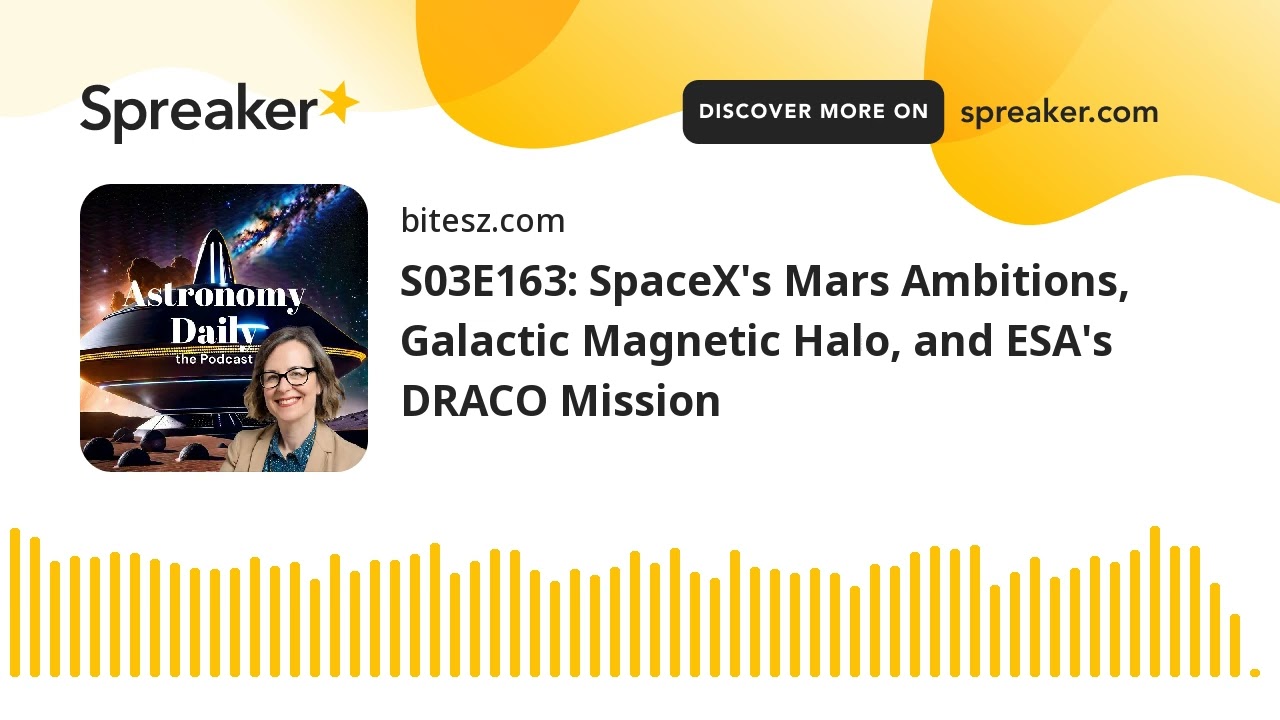 Space News TodayS03E163: SpaceX’s Mars Ambitions, Galactic Magnetic Halo, and ESA’s DRACO MissionSource:
https://www.spreaker.com/episode/s03e163-spacex-s-mars-ambitions-galactic-magnetic-halo-and-esa-s-draco-mission--62100546
Astronomy Daily - The Podcast: S03E163
Welcome to Astronomy Daily, your source for the latest space and Astronomy news. I'm your host, Anna, and today we'll be covering a range of exciting topics, from SpaceX's ambitious Mars plans to new discoveries about our galaxy's magnetic halo. Strap in for a cosmic journey as we explore the frontiers of space exploration and scientific discovery.
Highlights:
- SpaceX's Mars Missions: Elon Musk has announced that SpaceX aims to launch...2024-09-2508 min
Space News TodayS03E163: SpaceX’s Mars Ambitions, Galactic Magnetic Halo, and ESA’s DRACO MissionSource:
https://www.spreaker.com/episode/s03e163-spacex-s-mars-ambitions-galactic-magnetic-halo-and-esa-s-draco-mission--62100546
Astronomy Daily - The Podcast: S03E163
Welcome to Astronomy Daily, your source for the latest space and Astronomy news. I'm your host, Anna, and today we'll be covering a range of exciting topics, from SpaceX's ambitious Mars plans to new discoveries about our galaxy's magnetic halo. Strap in for a cosmic journey as we explore the frontiers of space exploration and scientific discovery.
Highlights:
- SpaceX's Mars Missions: Elon Musk has announced that SpaceX aims to launch...2024-09-2508 min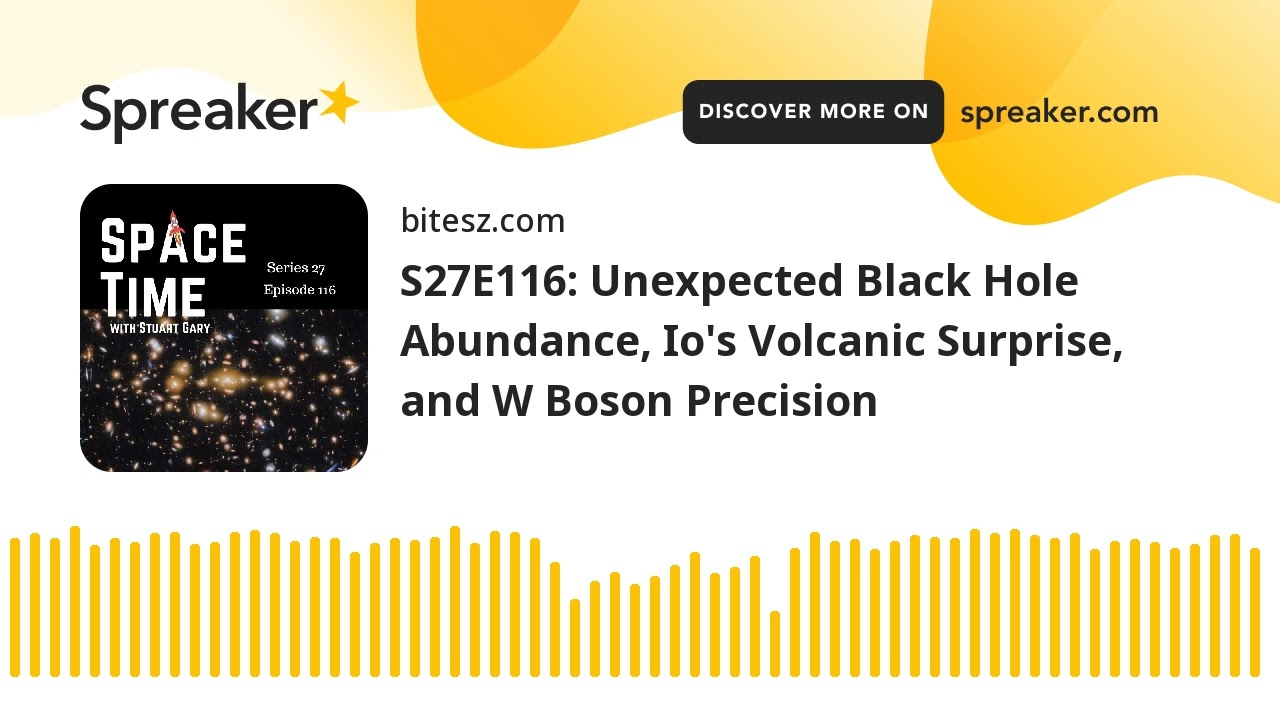 Space News TodayS27E116: Unexpected Black Hole Abundance, Io’s Volcanic Surprise, and W Boson PrecisionSource:
https://www.spreaker.com/episode/s27e116-unexpected-black-hole-abundance-io-s-volcanic-surprise-and-w-boson-precision--62097998
SpaceTime Series 27 Episode 116
*Discovery of More Black Holes Than Expected in the Early Universe
A new study using the Hubble Space Telescope has uncovered a significantly higher number of supermassive black holes in the early universe than previously anticipated. Published in the Astrophysical Journal Letters, the findings could revolutionise our understanding of how these ancient black holes formed shortly after the Big Bang. Astronomers, including Alice Young from Stockholm University, suggest that these massive black holes might have originated from...2024-09-2525 min
Space News TodayS27E116: Unexpected Black Hole Abundance, Io’s Volcanic Surprise, and W Boson PrecisionSource:
https://www.spreaker.com/episode/s27e116-unexpected-black-hole-abundance-io-s-volcanic-surprise-and-w-boson-precision--62097998
SpaceTime Series 27 Episode 116
*Discovery of More Black Holes Than Expected in the Early Universe
A new study using the Hubble Space Telescope has uncovered a significantly higher number of supermassive black holes in the early universe than previously anticipated. Published in the Astrophysical Journal Letters, the findings could revolutionise our understanding of how these ancient black holes formed shortly after the Big Bang. Astronomers, including Alice Young from Stockholm University, suggest that these massive black holes might have originated from...2024-09-2525 min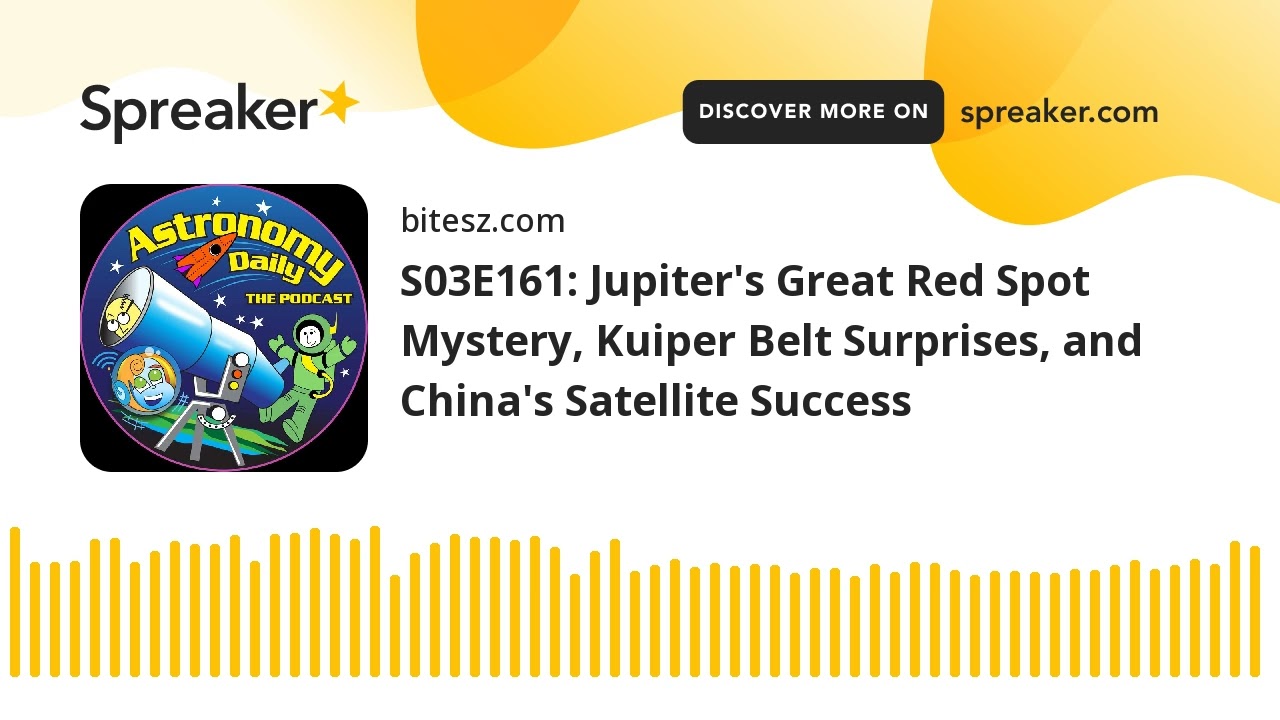 Space News TodayS03E161: Jupiter’s Great Red Spot Mystery, Kuiper Belt Surprises, and China’s Satellite SuccessSource:
https://www.spreaker.com/episode/s03e161-jupiter-s-great-red-spot-mystery-kuiper-belt-surprises-and-china-s-satellite-success--62075197
Astronomy AstroDailyPod - The Podcast: 23rd September 2024
Welcome to another episode of Astronomy AstroDailyPod, your ultimate source for the latest Space and Astronomy news. I'm your host, Steve Dunkley, and today we have a fascinating lineup of stories from the Astronomy AstroDailyPod newsletter. From insights into Jupiter's Great Red Spot and moonquakes, to China's latest satellite launch and discoveries at the edge of the solar system, we've got it all covered. Let's dive in!
Highlights:
- Jupiter's Great...2024-09-2319 min
Space News TodayS03E161: Jupiter’s Great Red Spot Mystery, Kuiper Belt Surprises, and China’s Satellite SuccessSource:
https://www.spreaker.com/episode/s03e161-jupiter-s-great-red-spot-mystery-kuiper-belt-surprises-and-china-s-satellite-success--62075197
Astronomy AstroDailyPod - The Podcast: 23rd September 2024
Welcome to another episode of Astronomy AstroDailyPod, your ultimate source for the latest Space and Astronomy news. I'm your host, Steve Dunkley, and today we have a fascinating lineup of stories from the Astronomy AstroDailyPod newsletter. From insights into Jupiter's Great Red Spot and moonquakes, to China's latest satellite launch and discoveries at the edge of the solar system, we've got it all covered. Let's dive in!
Highlights:
- Jupiter's Great...2024-09-2319 min Space News TodayS03E155: Hypersonic Breakthroughs, Starliner’s Return, and Mars’ Spiders UnveiledSource:
https://www.spreaker.com/episode/s03e155-hypersonic-breakthroughs-starliner-s-return-and-mars-spiders-unveiled--61822003
Astronomy AstroDailyPod - The Podcast: 16th September 2024
Welcome to Astronomy AstroDailyPod, your ultimate source for the latest in Space and astronomy news. I'm your host, Steve, and today we've got a stellar lineup of stories straight from the Astronomy AstroDailyPod newsletter. Joining us is Hallie, who will share some fascinating updates from Adelaide, South Australia, where hypersonic technology is taking off. So, buckle up as we explore hypersonic testbeds, lunar eclipses, and much more.
Highlights:
- Hypersonic Technology...2024-09-1626 min
Space News TodayS03E155: Hypersonic Breakthroughs, Starliner’s Return, and Mars’ Spiders UnveiledSource:
https://www.spreaker.com/episode/s03e155-hypersonic-breakthroughs-starliner-s-return-and-mars-spiders-unveiled--61822003
Astronomy AstroDailyPod - The Podcast: 16th September 2024
Welcome to Astronomy AstroDailyPod, your ultimate source for the latest in Space and astronomy news. I'm your host, Steve, and today we've got a stellar lineup of stories straight from the Astronomy AstroDailyPod newsletter. Joining us is Hallie, who will share some fascinating updates from Adelaide, South Australia, where hypersonic technology is taking off. So, buckle up as we explore hypersonic testbeds, lunar eclipses, and much more.
Highlights:
- Hypersonic Technology...2024-09-1626 min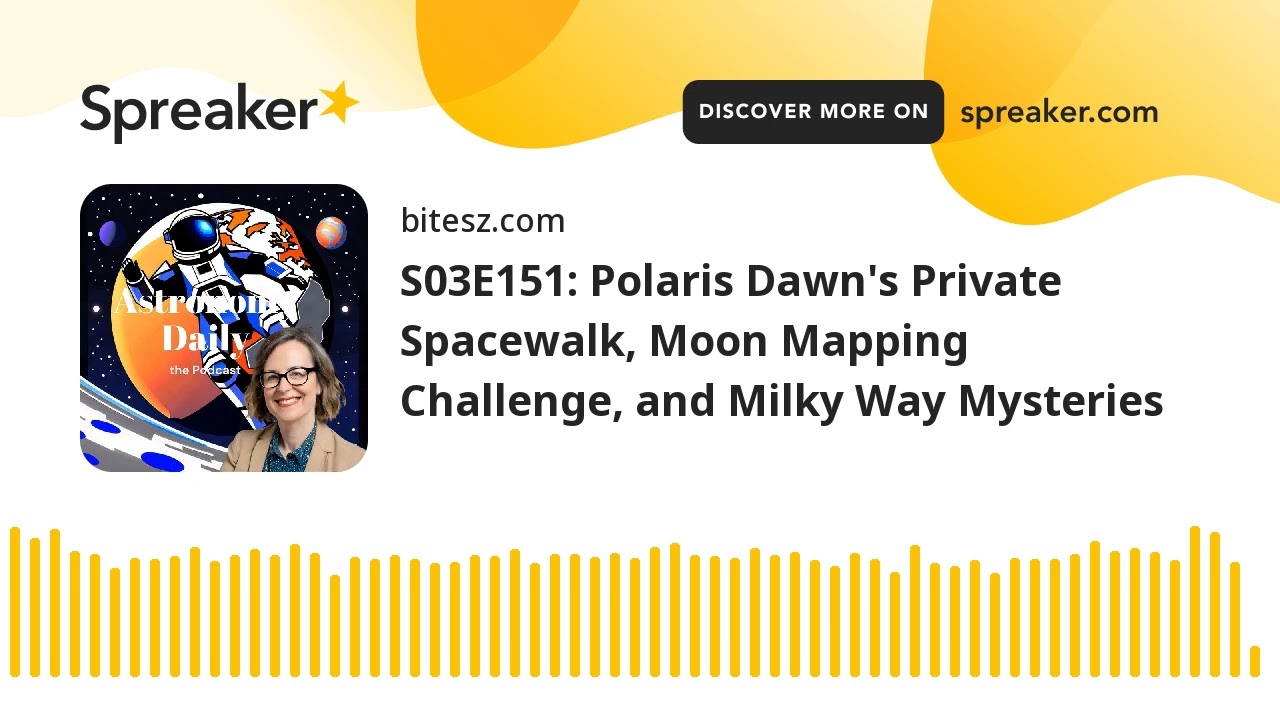 Space News TodayS03E151: Polaris Dawn’s Private Spacewalk, Moon Mapping Challenge, and Milky Way MysteriesSource:
https://www.spreaker.com/episode/s03e151-polaris-dawn-s-private-spacewalk-moon-mapping-challenge-and-milky-way-mysteries--61335167
Astronomy Daily - The Podcast: 11th September 2024
Welcome to Astronomy Daily, your go-to Podcast for the latest and greatest in space and Astronomy. I'm your host, Anna, and today we have some thrilling stories lined up for you. Sit tight as we dive into groundbreaking missions, celestial discoveries, and much more. Buckle up, stargazers. It's going to be an exciting ride through the cosmos.
Highlights:
- SpaceX's Polaris Dawn Mission: Earlier this week, SpaceX made history with the...2024-09-1116 min
Space News TodayS03E151: Polaris Dawn’s Private Spacewalk, Moon Mapping Challenge, and Milky Way MysteriesSource:
https://www.spreaker.com/episode/s03e151-polaris-dawn-s-private-spacewalk-moon-mapping-challenge-and-milky-way-mysteries--61335167
Astronomy Daily - The Podcast: 11th September 2024
Welcome to Astronomy Daily, your go-to Podcast for the latest and greatest in space and Astronomy. I'm your host, Anna, and today we have some thrilling stories lined up for you. Sit tight as we dive into groundbreaking missions, celestial discoveries, and much more. Buckle up, stargazers. It's going to be an exciting ride through the cosmos.
Highlights:
- SpaceX's Polaris Dawn Mission: Earlier this week, SpaceX made history with the...2024-09-1116 min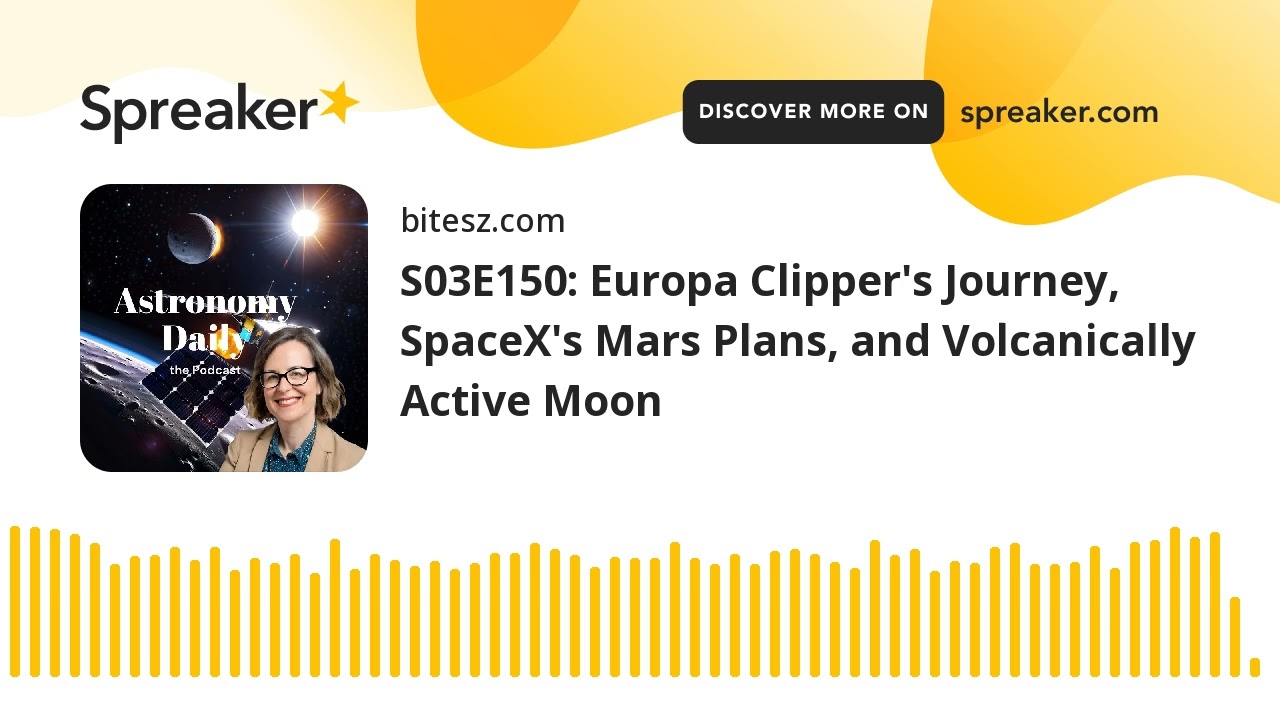 Space News TodayS03E150: Europa Clipper’s Journey, SpaceX’s Mars Plans, and Volcanically Active MoonSource:
https://www.spreaker.com/episode/s03e150-europa-clipper-s-journey-spacex-s-mars-plans-and-volcanically-active-moon--61321196
Astronomy Daily - The Podcast: 10th October 2024
Welcome to Astronomy Daily, your Daily dose of space and Astronomy news. I'm your host, Anna. Today we have an exciting lineup of stories that I can't wait to share with you. First, we'll delve into NASA's Europa Clipper mission, which is ready to embark on an epic journey to Jupiter and its intriguing moon Europa. Then we'll talk about Elon Musk and SpaceX's ambitious plans to launch uncrewed starships to Mars in just two...2024-09-1013 min
Space News TodayS03E150: Europa Clipper’s Journey, SpaceX’s Mars Plans, and Volcanically Active MoonSource:
https://www.spreaker.com/episode/s03e150-europa-clipper-s-journey-spacex-s-mars-plans-and-volcanically-active-moon--61321196
Astronomy Daily - The Podcast: 10th October 2024
Welcome to Astronomy Daily, your Daily dose of space and Astronomy news. I'm your host, Anna. Today we have an exciting lineup of stories that I can't wait to share with you. First, we'll delve into NASA's Europa Clipper mission, which is ready to embark on an epic journey to Jupiter and its intriguing moon Europa. Then we'll talk about Elon Musk and SpaceX's ambitious plans to launch uncrewed starships to Mars in just two...2024-09-1013 min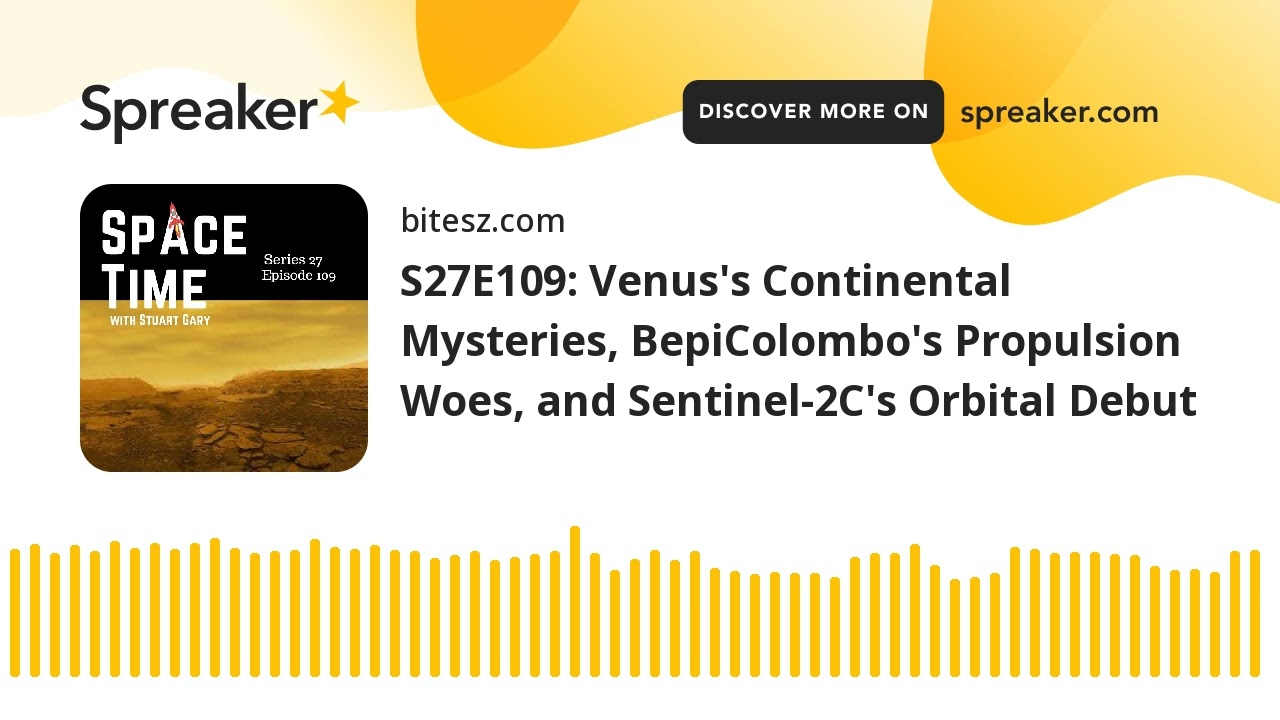 Space News TodayS27E109: Venus’s Continental Mysteries, BepiColombo’s Propulsion Woes, and Sentinel-2C’s Orbital DebSource:
https://www.spreaker.com/episode/s27e109-venus-s-continental-mysteries-bepicolombo-s-propulsion-woes-and-sentinel-2c-s-orbital-debut--61309693
In this episode of SpaceTime, new research suggests Venus may have formed continents in a manner similar to early Earth, the BepiColombo spacecraft faces propulsion issues, and Sentinel-2C joins the Copernicus family in orbit. Join us for these fascinating updates and more!
00:00:00 - This is SpaceTime series 27, episode 109, for broadcast on 9 September 2024
00:00:45 - New study suggests Venus's tesserae may have formed like Earth's earliest continents
00:12:30 - Propulsion glitches aboard the BepiColombo spacecraft
00:23:45 - Sentinel-2C jo...2024-09-0937 min
Space News TodayS27E109: Venus’s Continental Mysteries, BepiColombo’s Propulsion Woes, and Sentinel-2C’s Orbital DebSource:
https://www.spreaker.com/episode/s27e109-venus-s-continental-mysteries-bepicolombo-s-propulsion-woes-and-sentinel-2c-s-orbital-debut--61309693
In this episode of SpaceTime, new research suggests Venus may have formed continents in a manner similar to early Earth, the BepiColombo spacecraft faces propulsion issues, and Sentinel-2C joins the Copernicus family in orbit. Join us for these fascinating updates and more!
00:00:00 - This is SpaceTime series 27, episode 109, for broadcast on 9 September 2024
00:00:45 - New study suggests Venus's tesserae may have formed like Earth's earliest continents
00:12:30 - Propulsion glitches aboard the BepiColombo spacecraft
00:23:45 - Sentinel-2C jo...2024-09-0937 min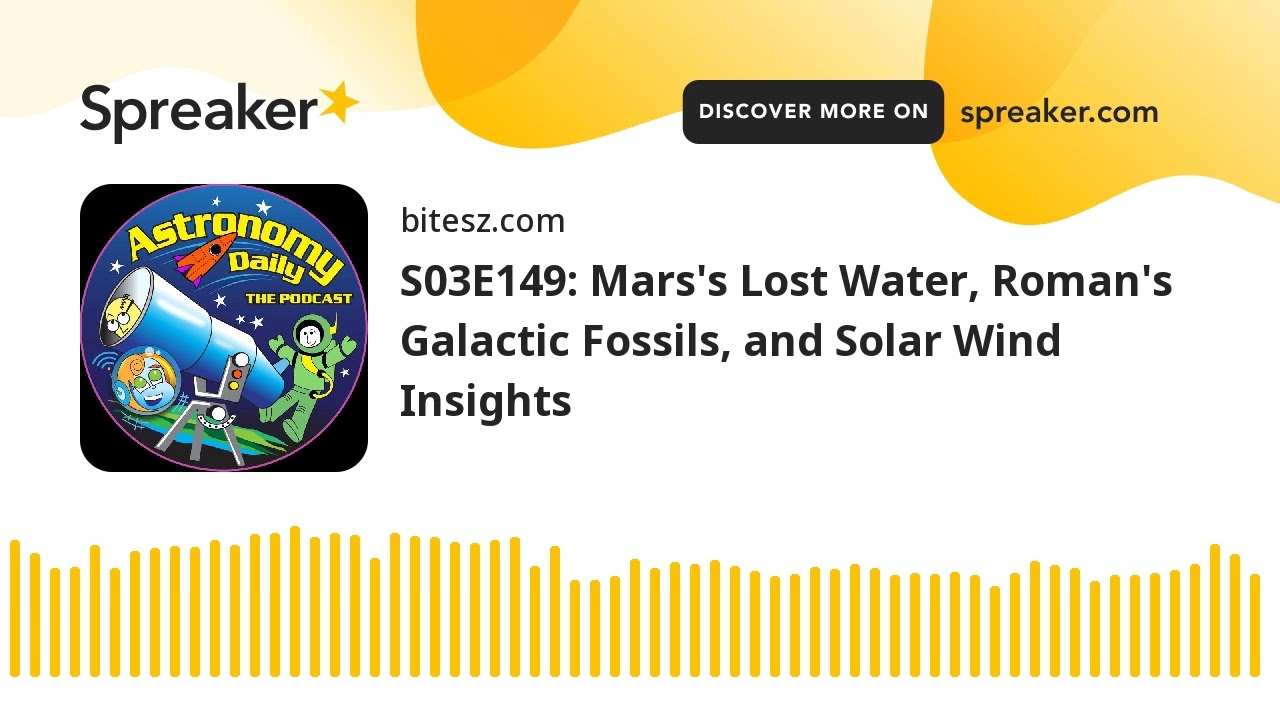 Space News TodayS03E149: Mars’s Lost Water, Roman’s Galactic Fossils, and Solar Wind InsightsSource:
https://www.spreaker.com/episode/s03e149-mars-s-lost-water-roman-s-galactic-fossils-and-solar-wind-insights--61308248
Astronomy Daily - The Podcast: 9th September 2024
Welcome to another episode of Astronomy Daily with your host, Steve Dunkley. Today, we're diving into some of the most intriguing stories from the cosmos. From the mystery of Mars's lost water to the latest updates on NASA's Parker Solar Probe and ESA's Solar Orbiter, we've got a stellar lineup for you. We'll also discuss the Roman Space Telescope's quest to uncover ancient galaxies, the fascinating journey of the Sinchengjung Atlas comet, and ESA's unique...2024-09-0927 min
Space News TodayS03E149: Mars’s Lost Water, Roman’s Galactic Fossils, and Solar Wind InsightsSource:
https://www.spreaker.com/episode/s03e149-mars-s-lost-water-roman-s-galactic-fossils-and-solar-wind-insights--61308248
Astronomy Daily - The Podcast: 9th September 2024
Welcome to another episode of Astronomy Daily with your host, Steve Dunkley. Today, we're diving into some of the most intriguing stories from the cosmos. From the mystery of Mars's lost water to the latest updates on NASA's Parker Solar Probe and ESA's Solar Orbiter, we've got a stellar lineup for you. We'll also discuss the Roman Space Telescope's quest to uncover ancient galaxies, the fascinating journey of the Sinchengjung Atlas comet, and ESA's unique...2024-09-0927 min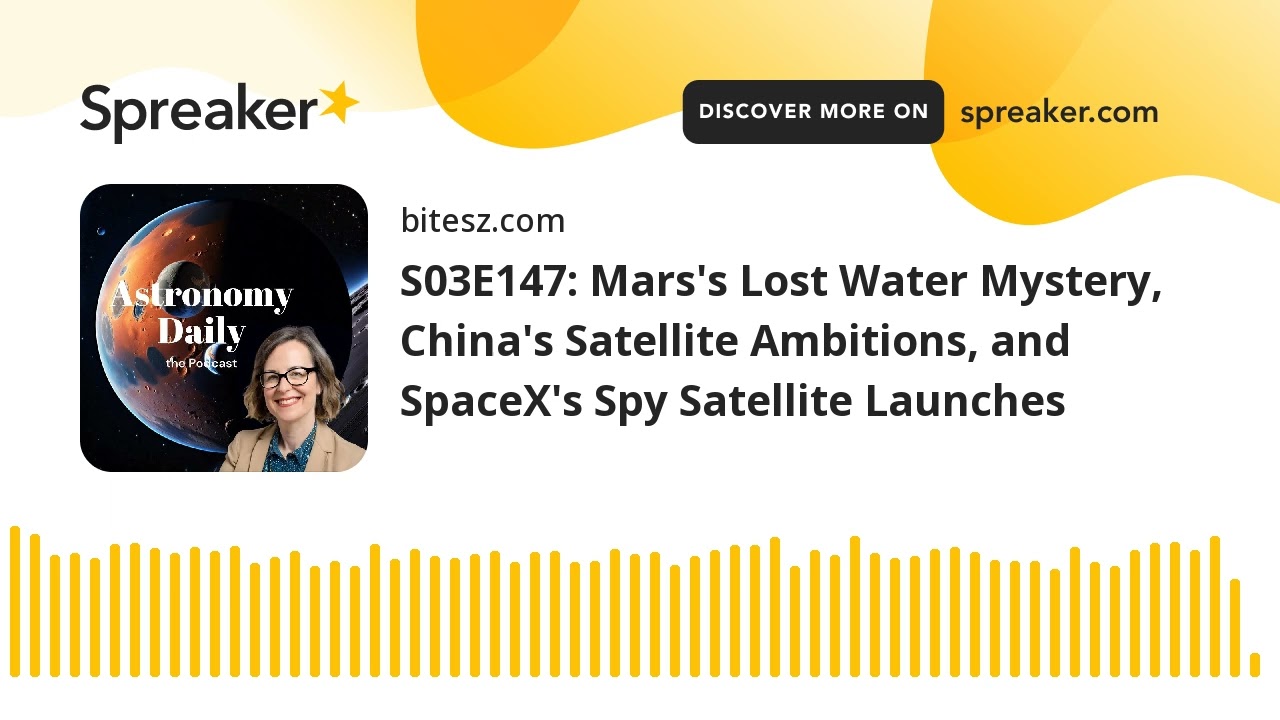 Space News TodayS03E147: Mars’s Lost Water Mystery, China’s Satellite Ambitions, and SpaceX’s Spy Satellite LaunchesSource:
https://www.spreaker.com/episode/s03e147-mars-s-lost-water-mystery-china-s-satellite-ambitions-and-spacex-s-spy-satellite-launches--61280854
Astronomy Daily - The Podcast: 6th September 2024
Welcome to Astronomy Daily, your latest source of space and Astronomy news, with your host, Anna. Today we're diving into some fascinating topics, ranging from the latest findings about Mars's escaping water to the exciting flyby of Mercury by the Bepicolombo mission. We'll also discuss China's ambitious plans with G Space's new low Earth orbit satellites, SpaceX's launch of next-gen spy satellites, and how amateur astronomers are aiding the study of Jupiter's weather. Stick around...2024-09-0614 min
Space News TodayS03E147: Mars’s Lost Water Mystery, China’s Satellite Ambitions, and SpaceX’s Spy Satellite LaunchesSource:
https://www.spreaker.com/episode/s03e147-mars-s-lost-water-mystery-china-s-satellite-ambitions-and-spacex-s-spy-satellite-launches--61280854
Astronomy Daily - The Podcast: 6th September 2024
Welcome to Astronomy Daily, your latest source of space and Astronomy news, with your host, Anna. Today we're diving into some fascinating topics, ranging from the latest findings about Mars's escaping water to the exciting flyby of Mercury by the Bepicolombo mission. We'll also discuss China's ambitious plans with G Space's new low Earth orbit satellites, SpaceX's launch of next-gen spy satellites, and how amateur astronomers are aiding the study of Jupiter's weather. Stick around...2024-09-0614 min Space News TodayS03E145: Spaceflight Health Discoveries, BepiColombo’s New Route, and Ganymede’s Titanic CollisionSource:
https://www.spreaker.com/episode/s03e145-spaceflight-health-discoveries-bepicolombo-s-new-route-and-ganymede-s-titanic-collision--61260548
Astronomy Daily - The Podcast: 4th September 2024
Welcome to another episode of Astronomy Daily, your go-to source for the latest in space and Astronomy news. I'm your host, Anna, and today we have some fascinating stories to delve into, from groundbreaking research uncovering how spaceflight affects human physiology to the thruster issues delaying the BepiColombo spacecraft's journey to Mercury. We also have the intriguing tale of a peculiar noise heard on NASA's Starliner and a look at how a titanic asteroid impact...2024-09-0413 min
Space News TodayS03E145: Spaceflight Health Discoveries, BepiColombo’s New Route, and Ganymede’s Titanic CollisionSource:
https://www.spreaker.com/episode/s03e145-spaceflight-health-discoveries-bepicolombo-s-new-route-and-ganymede-s-titanic-collision--61260548
Astronomy Daily - The Podcast: 4th September 2024
Welcome to another episode of Astronomy Daily, your go-to source for the latest in space and Astronomy news. I'm your host, Anna, and today we have some fascinating stories to delve into, from groundbreaking research uncovering how spaceflight affects human physiology to the thruster issues delaying the BepiColombo spacecraft's journey to Mercury. We also have the intriguing tale of a peculiar noise heard on NASA's Starliner and a look at how a titanic asteroid impact...2024-09-0413 min Space News TodayS27E107: First Galaxies Unveiled, Europa Clipper’s Big Leap, and Falcon 9’s Fiery FallSource:
https://www.spreaker.com/episode/s27e107-first-galaxies-unveiled-europa-clipper-s-big-leap-and-falcon-9-s-fiery-fall--61236088
In this episode of SpaceTime, new discoveries reveal the universe's first galaxies weren't as massive as previously thought, but their central black holes made them appear larger. NASA's Europa Clipper mission moves closer to launch readiness, and SpaceX halts Falcon 9 launches following a dramatic landing failure. Join us for these fascinating updates and more!
00:00:00 - This is SpaceTime series 27, episode 107, for broadcast on 4 September 2024
00:00:45 - New study shows early galaxies' black holes made them seem bigger and brighter
2024-09-0425 min
Space News TodayS27E107: First Galaxies Unveiled, Europa Clipper’s Big Leap, and Falcon 9’s Fiery FallSource:
https://www.spreaker.com/episode/s27e107-first-galaxies-unveiled-europa-clipper-s-big-leap-and-falcon-9-s-fiery-fall--61236088
In this episode of SpaceTime, new discoveries reveal the universe's first galaxies weren't as massive as previously thought, but their central black holes made them appear larger. NASA's Europa Clipper mission moves closer to launch readiness, and SpaceX halts Falcon 9 launches following a dramatic landing failure. Join us for these fascinating updates and more!
00:00:00 - This is SpaceTime series 27, episode 107, for broadcast on 4 September 2024
00:00:45 - New study shows early galaxies' black holes made them seem bigger and brighter
2024-09-0425 min Space News TodayS03E144: BepiColombo’s Mercury Philip, China’s Sea-Based Launch, and Artemis 4G RevolutionSource:
https://www.spreaker.com/episode/s03e144-bepicolombo-s-mercury-philip-china-s-sea-based-launch-and-artemis-4g-revolution--61251677
Astronomy Daily - The Podcast: 3rd September 2024
Welcome to Astronomy Daily, your go-to Podcast for all the latest news in the world of space and Astronomy. I'm Anna, your host for today. We've got some exciting stories lined up for you, from NASA's Artemis III mission to the latest updates on the BepiColombo spacecraft and more. So stay tuned for some incredible space news and insights.
Highlights:
- BepiColombo's Fourth Mercury Philip: The joint mission by the...2024-09-0313 min
Space News TodayS03E144: BepiColombo’s Mercury Philip, China’s Sea-Based Launch, and Artemis 4G RevolutionSource:
https://www.spreaker.com/episode/s03e144-bepicolombo-s-mercury-philip-china-s-sea-based-launch-and-artemis-4g-revolution--61251677
Astronomy Daily - The Podcast: 3rd September 2024
Welcome to Astronomy Daily, your go-to Podcast for all the latest news in the world of space and Astronomy. I'm Anna, your host for today. We've got some exciting stories lined up for you, from NASA's Artemis III mission to the latest updates on the BepiColombo spacecraft and more. So stay tuned for some incredible space news and insights.
Highlights:
- BepiColombo's Fourth Mercury Philip: The joint mission by the...2024-09-0313 min Space News TodayS27E106: Dream Chaser Delayed, Earth’s Electric Field Unveiled, and Australia’s New Lunar RoverSource:
https://www.spreaker.com/episode/s27e106-dream-chaser-delayed-earth-s-electric-field-unveiled-and-australia-s-new-lunar-rover--61236040
In this episode of SpaceTime, the launch of the new Dream Chaser orbital Space plane is delayed until next year, NASA discovers a long-sought-after global electric field on Earth, and the latest Australian lunar rover is unveiled. Join us for these fascinating updates and more!
00:00:00 - Sierra Space have confirmed that their new Dream chaser orbital space plane won't fly
00:08:07 - Scientists have for the first time successfully measured a planet wide electrical field
00:17:17 - Perth based consortium...2024-09-0225 min
Space News TodayS27E106: Dream Chaser Delayed, Earth’s Electric Field Unveiled, and Australia’s New Lunar RoverSource:
https://www.spreaker.com/episode/s27e106-dream-chaser-delayed-earth-s-electric-field-unveiled-and-australia-s-new-lunar-rover--61236040
In this episode of SpaceTime, the launch of the new Dream Chaser orbital Space plane is delayed until next year, NASA discovers a long-sought-after global electric field on Earth, and the latest Australian lunar rover is unveiled. Join us for these fascinating updates and more!
00:00:00 - Sierra Space have confirmed that their new Dream chaser orbital space plane won't fly
00:08:07 - Scientists have for the first time successfully measured a planet wide electrical field
00:17:17 - Perth based consortium...2024-09-0225 min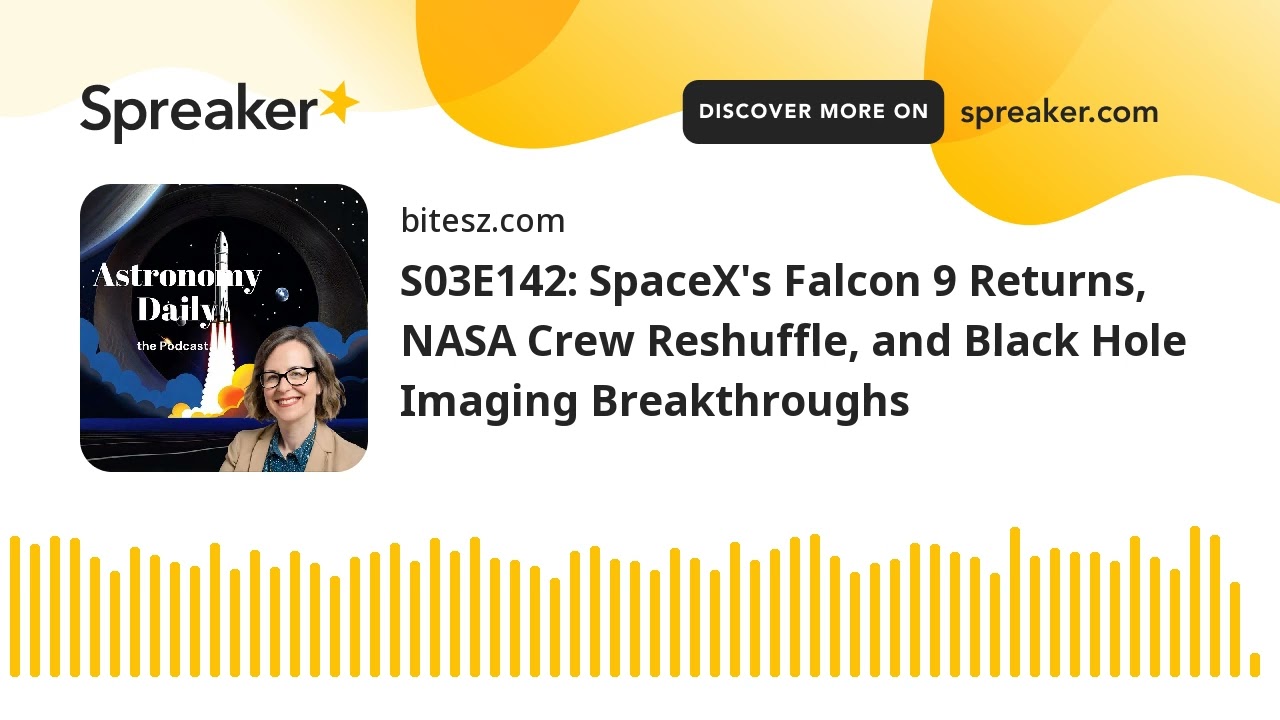 Space News TodayS03E142: SpaceX’s Falcon 9 Returns, NASA Crew Reshuffle, and Black Hole Imaging BreakthroughsSource:
https://www.spreaker.com/episode/s03e142-spacex-s-falcon-9-returns-nasa-crew-reshuffle-and-black-hole-imaging-breakthroughs--61221030
Astronomy Daily - The Podcast: 31 August 2024
Welcome to Astronomy Daily, your source for the latest in space exploration and Astronomy. I'm your host, Anna. Today, we've got some fascinating stories lined up for you. From SpaceX receiving the green light to fly their Falcon 9 rocket again after a recent mishap, to NASA's strategic crew adjustments on their SpaceX flights, there's a lot to cover. We're also diving into groundbreaking advancements with the Event Horizon Telescope that promise to reveal clearer images...2024-08-3112 min
Space News TodayS03E142: SpaceX’s Falcon 9 Returns, NASA Crew Reshuffle, and Black Hole Imaging BreakthroughsSource:
https://www.spreaker.com/episode/s03e142-spacex-s-falcon-9-returns-nasa-crew-reshuffle-and-black-hole-imaging-breakthroughs--61221030
Astronomy Daily - The Podcast: 31 August 2024
Welcome to Astronomy Daily, your source for the latest in space exploration and Astronomy. I'm your host, Anna. Today, we've got some fascinating stories lined up for you. From SpaceX receiving the green light to fly their Falcon 9 rocket again after a recent mishap, to NASA's strategic crew adjustments on their SpaceX flights, there's a lot to cover. We're also diving into groundbreaking advancements with the Event Horizon Telescope that promise to reveal clearer images...2024-08-3112 min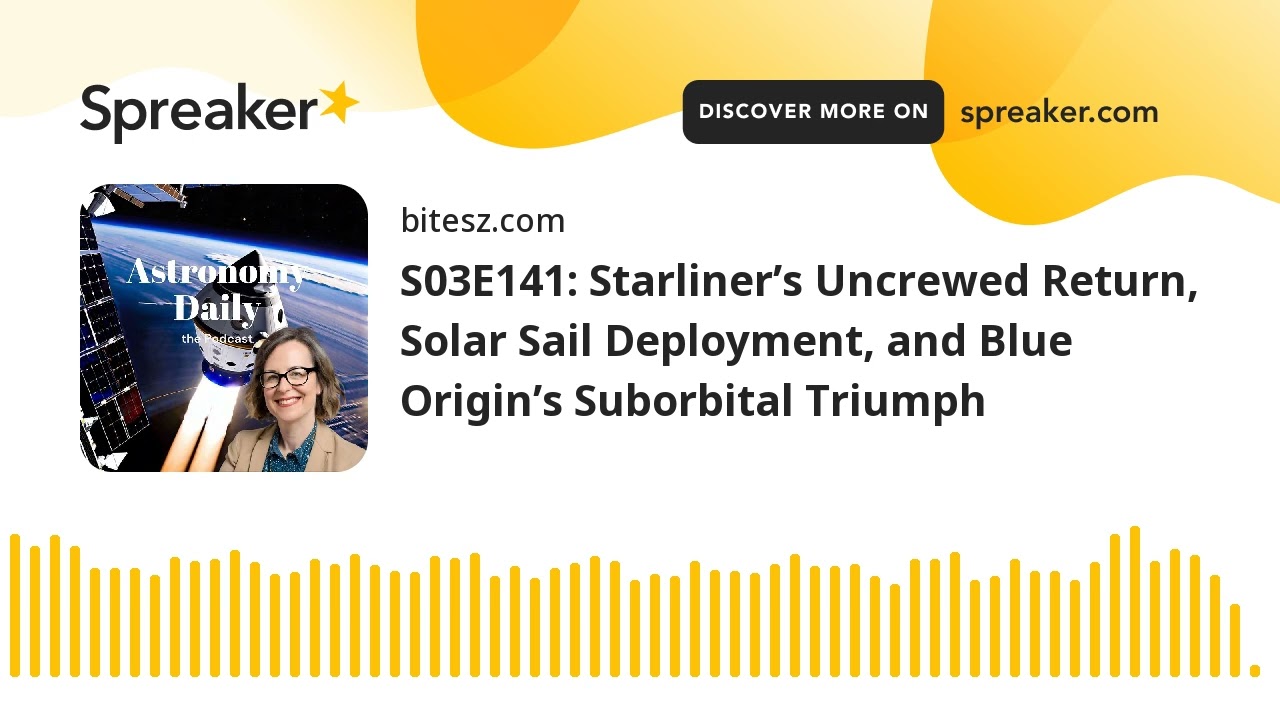 Space News TodayS03E141: Starliner’s Uncrewed Return, Solar Sail Deployment, and Blue Origin’s Suborbital TriumphSource:
https://www.spreaker.com/episode/s03e141-starliner-s-uncrewed-return-solar-sail-deployment-and-blue-origin-s-suborbital-triumph--61207887
Astronomy Daily - The Podcast: 30 August 2024
Welcome to Astronomy Daily, your go-to Podcast for the latest and greatest news in space and Astronomy. I'm your host, Anna, and I'm thrilled to be guiding you through today's top stories. We have some fascinating updates from the cosmos, spanning from groundbreaking scientific missions to the latest in space tourism adventures. Whether you're a seasoned astronomer or just a curious stargazer, there's something here for everyone. So let's dive into some exciting content that's sure...2024-08-3009 min
Space News TodayS03E141: Starliner’s Uncrewed Return, Solar Sail Deployment, and Blue Origin’s Suborbital TriumphSource:
https://www.spreaker.com/episode/s03e141-starliner-s-uncrewed-return-solar-sail-deployment-and-blue-origin-s-suborbital-triumph--61207887
Astronomy Daily - The Podcast: 30 August 2024
Welcome to Astronomy Daily, your go-to Podcast for the latest and greatest news in space and Astronomy. I'm your host, Anna, and I'm thrilled to be guiding you through today's top stories. We have some fascinating updates from the cosmos, spanning from groundbreaking scientific missions to the latest in space tourism adventures. Whether you're a seasoned astronomer or just a curious stargazer, there's something here for everyone. So let's dive into some exciting content that's sure...2024-08-3009 min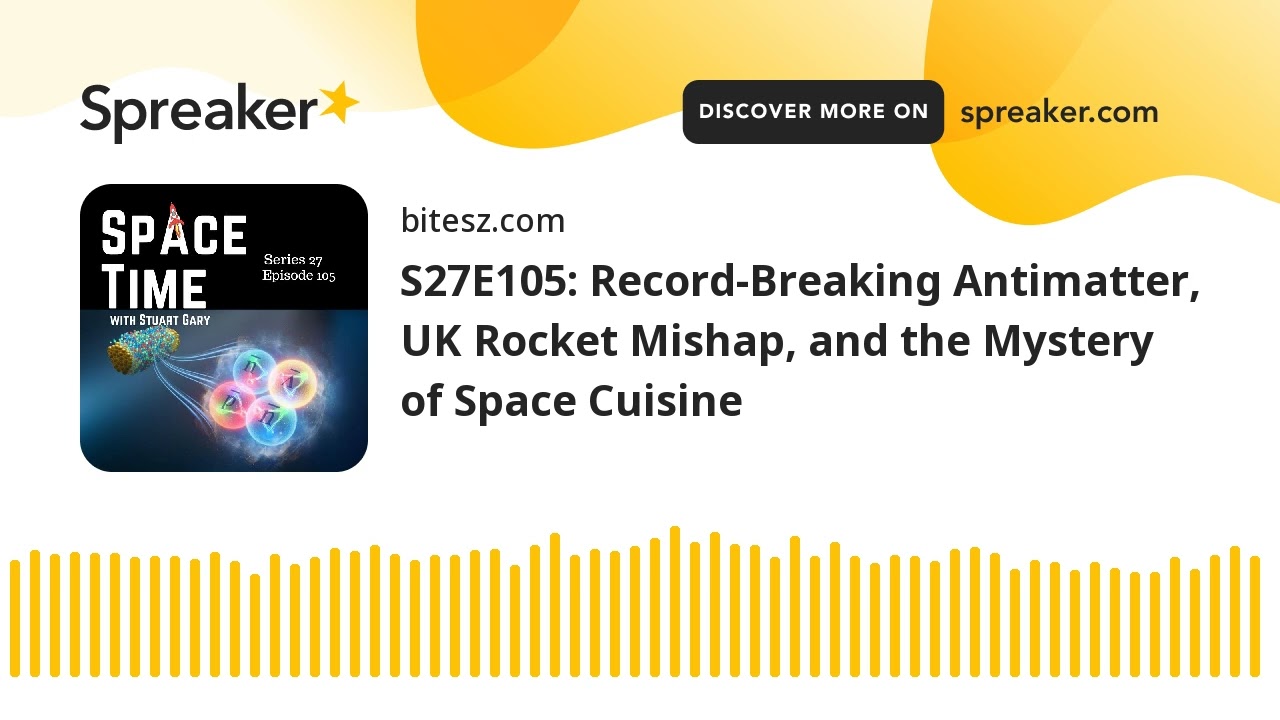 Space News TodayS27E105: Record-Breaking Antimatter, UK Rocket Mishap, and the Mystery of Space CuisineSource:
https://www.spreaker.com/episode/s27e105-record-breaking-antimatter-uk-rocket-mishap-and-the-mystery-of-space-cuisine--61205698
In this episode of SpaceTime, we delve into the discovery of the heaviest antimatter hyper nucleus ever created, witness a spectacular rocket engine explosion at the United Kingdom's new spaceport, and explore why food tastes bad in SpaceTime. Join us for these fascinating updates and more!
00:00:00 - This is spacetime series 27, episode 105 for broadcast on 30 August 2024
00:00:26 - Scientists at Brookhaven National Laboratory have discovered a new antimatter hyper nucleus
00:05:03 - Rocket booster explodes during test at British spaceport...2024-08-3024 min
Space News TodayS27E105: Record-Breaking Antimatter, UK Rocket Mishap, and the Mystery of Space CuisineSource:
https://www.spreaker.com/episode/s27e105-record-breaking-antimatter-uk-rocket-mishap-and-the-mystery-of-space-cuisine--61205698
In this episode of SpaceTime, we delve into the discovery of the heaviest antimatter hyper nucleus ever created, witness a spectacular rocket engine explosion at the United Kingdom's new spaceport, and explore why food tastes bad in SpaceTime. Join us for these fascinating updates and more!
00:00:00 - This is spacetime series 27, episode 105 for broadcast on 30 August 2024
00:00:26 - Scientists at Brookhaven National Laboratory have discovered a new antimatter hyper nucleus
00:05:03 - Rocket booster explodes during test at British spaceport...2024-08-3024 min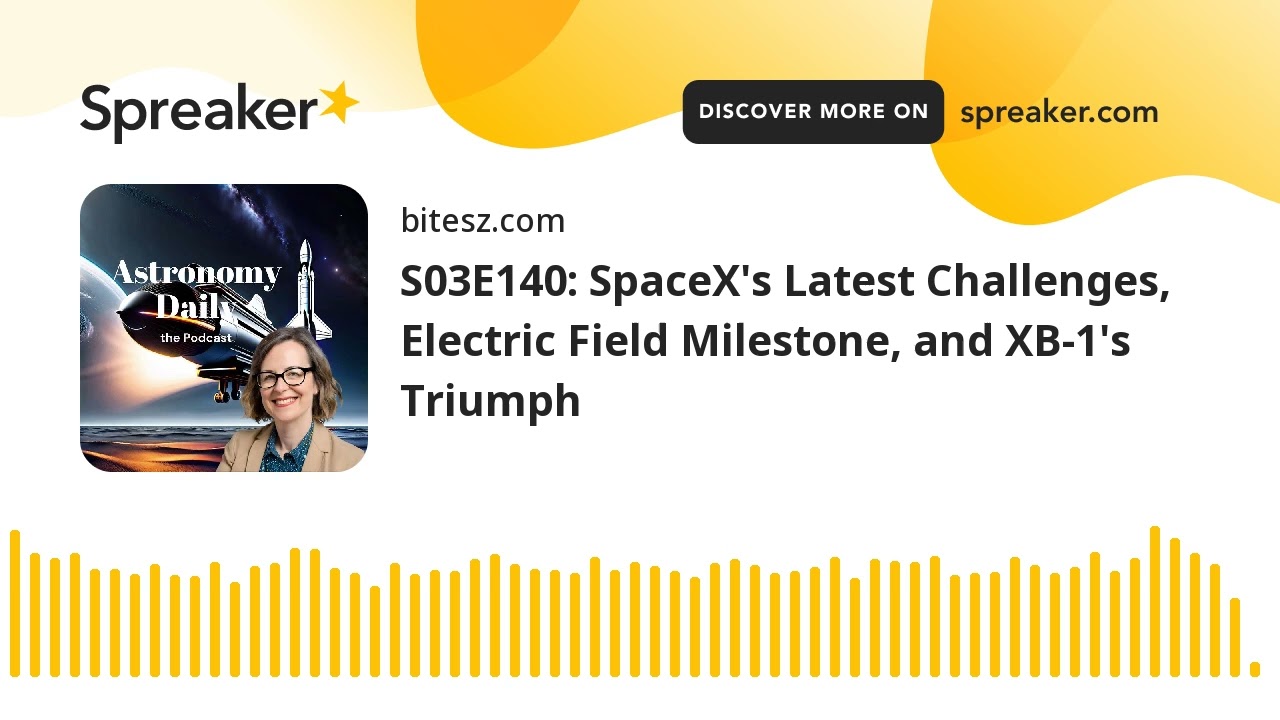 Space News TodayS03E140: SpaceX’s Latest Challenges, Electric Field Milestone, and XB-1’s TriumphSource:
https://www.spreaker.com/episode/s03e140-spacex-s-latest-challenges-electric-field-milestone-and-xb-1-s-triumph--61195852
Astronomy Daily - The Podcast: 29th August 2024
Welcome to Astronomy Daily, the podcast where we explore the latest in space and Astronomy news. I'm your host, Anna. Today we have a fantastic lineup of stories that will take you from the high stakes of space travel to fascinating new scientific discoveries. From SpaceX facing challenges with their Falcon 9 rocket, to scientists measuring a planet-wide electric field for the first time ever, we have so much to explore. We'll also delve into...2024-08-2911 min
Space News TodayS03E140: SpaceX’s Latest Challenges, Electric Field Milestone, and XB-1’s TriumphSource:
https://www.spreaker.com/episode/s03e140-spacex-s-latest-challenges-electric-field-milestone-and-xb-1-s-triumph--61195852
Astronomy Daily - The Podcast: 29th August 2024
Welcome to Astronomy Daily, the podcast where we explore the latest in space and Astronomy news. I'm your host, Anna. Today we have a fantastic lineup of stories that will take you from the high stakes of space travel to fascinating new scientific discoveries. From SpaceX facing challenges with their Falcon 9 rocket, to scientists measuring a planet-wide electric field for the first time ever, we have so much to explore. We'll also delve into...2024-08-2911 min Space News TodayS03E139: Polaris Dawn Delays, Venus’s Atmospheric Secrets, and DART’s Asteroid ImpactSource:
https://www.spreaker.com/episode/s03e139-polaris-dawn-delays-venus-s-atmospheric-secrets-and-dart-s-asteroid-impact--61182134
Astronomy Daily - The Podcast: 15 October 2024
Welcome to Astronomy Daily, your go-to Podcast for all the latest in space and Astronomy news. I'm your host Anna, and I'm delighted to have you with us today. In this episode, we have some exciting updates to share. We'll delve into recent developments from SpaceX and their ongoing Polaris Dawn mission, take a closer look at new research revealing surprising insights about Venus's atmosphere, and explore the far-reaching implications of NASA's DART mission on asteroid...2024-08-2814 min
Space News TodayS03E139: Polaris Dawn Delays, Venus’s Atmospheric Secrets, and DART’s Asteroid ImpactSource:
https://www.spreaker.com/episode/s03e139-polaris-dawn-delays-venus-s-atmospheric-secrets-and-dart-s-asteroid-impact--61182134
Astronomy Daily - The Podcast: 15 October 2024
Welcome to Astronomy Daily, your go-to Podcast for all the latest in space and Astronomy news. I'm your host Anna, and I'm delighted to have you with us today. In this episode, we have some exciting updates to share. We'll delve into recent developments from SpaceX and their ongoing Polaris Dawn mission, take a closer look at new research revealing surprising insights about Venus's atmosphere, and explore the far-reaching implications of NASA's DART mission on asteroid...2024-08-2814 min Space News TodayS27E104: WOW! Signal Solved?, CLUSTER’s Dramatic Demise, and Solar Storm SurgesSource:
https://www.spreaker.com/episode/s27e104-wow-signal-solved-cluster-s-dramatic-demise-and-solar-storm-surges--61180093
In this episode of SpaceTime, the mystery of the famous "Wow!" signal may finally be solved, the European Space Agency's Cluster mission is set to end in a fiery re-entry over the South Pacific, and Earth gets hit by another powerful solar storm. Join us for these fascinating updates and more!
00:00:00 - This is SpaceTime series 27, episode 104, for broadcast on the 28 August 2024
00:00:45 - New study may have identified the source of the famous "Wow!" signal
00:12:30 - European Space...2024-08-2824 min
Space News TodayS27E104: WOW! Signal Solved?, CLUSTER’s Dramatic Demise, and Solar Storm SurgesSource:
https://www.spreaker.com/episode/s27e104-wow-signal-solved-cluster-s-dramatic-demise-and-solar-storm-surges--61180093
In this episode of SpaceTime, the mystery of the famous "Wow!" signal may finally be solved, the European Space Agency's Cluster mission is set to end in a fiery re-entry over the South Pacific, and Earth gets hit by another powerful solar storm. Join us for these fascinating updates and more!
00:00:00 - This is SpaceTime series 27, episode 104, for broadcast on the 28 August 2024
00:00:45 - New study may have identified the source of the famous "Wow!" signal
00:12:30 - European Space...2024-08-2824 min Space News TodayS03E137: Jupiter’s Storms, Moon’s Fiery Past, and Extraterrestrial CuisineSource:
https://www.spreaker.com/episode/s03e137-jupiter-s-storms-moon-s-fiery-past-and-extraterrestrial-cuisine--61154446
AstroDailyPod - The Podcast: 26 August 2024
Welcome back to another episode of Astronomy Daily the Podcast with your host, Steve Dunkley and Hallie. Today, we've got a fascinating mix of stories that will take you from the depths of Jupiter's Great Red Spot to the future of SpaceTime colonies. Buckle up for an intriguing journey through space and time.
Highlights:
- The Great Red Spot: Discover the latest findings on Jupiter's Great Red Spot, its history, and...2024-08-2622 min
Space News TodayS03E137: Jupiter’s Storms, Moon’s Fiery Past, and Extraterrestrial CuisineSource:
https://www.spreaker.com/episode/s03e137-jupiter-s-storms-moon-s-fiery-past-and-extraterrestrial-cuisine--61154446
AstroDailyPod - The Podcast: 26 August 2024
Welcome back to another episode of Astronomy Daily the Podcast with your host, Steve Dunkley and Hallie. Today, we've got a fascinating mix of stories that will take you from the depths of Jupiter's Great Red Spot to the future of SpaceTime colonies. Buckle up for an intriguing journey through space and time.
Highlights:
- The Great Red Spot: Discover the latest findings on Jupiter's Great Red Spot, its history, and...2024-08-2622 min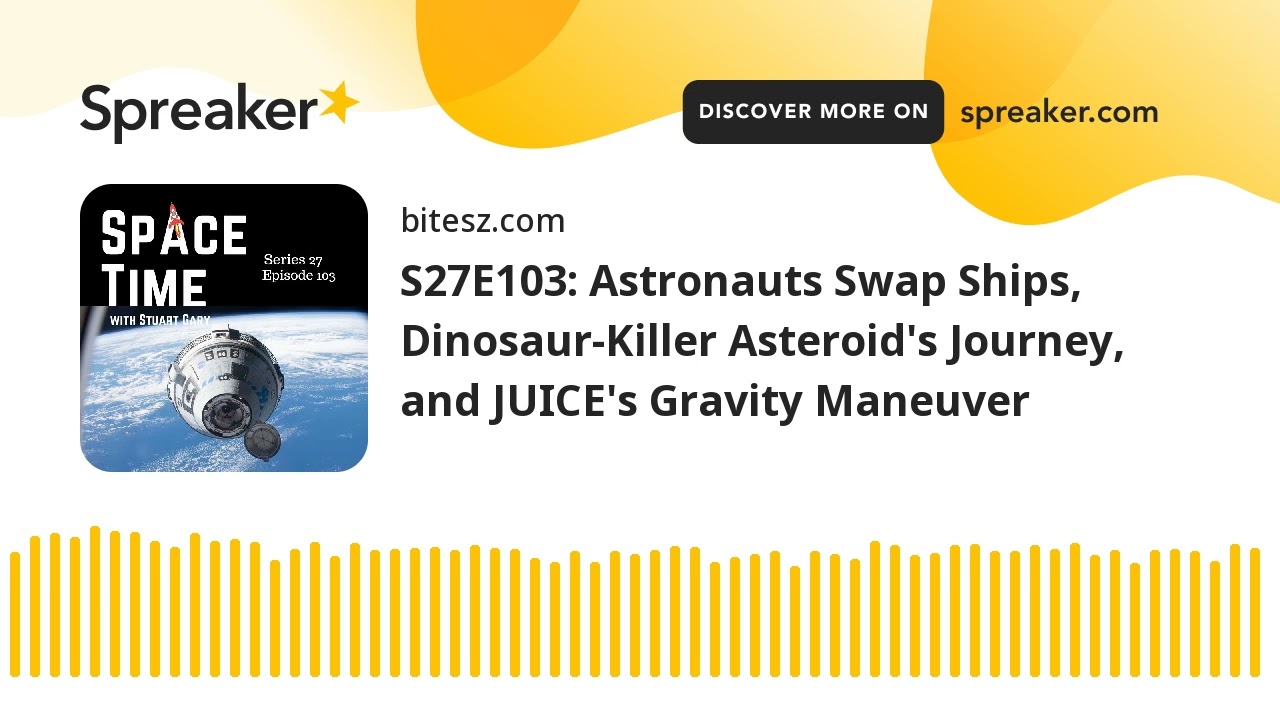 Space News TodayS27E103: Astronauts Swap Ships, Dinosaur-Killer Asteroid’s Journey, and JUICE’s Gravity ManeuverSource:
https://www.spreaker.com/episode/s27e103-astronauts-swap-ships-dinosaur-killer-asteroid-s-journey-and-juice-s-gravity-maneuver--61154192
In this episode of SpaceTime, NASA decides to return the stranded Starliner crew to Earth aboard SpaceX's Dragon, a new study tracks down the asteroid that killed the dinosaurs, the JUICE spacecraft completes the first-ever joint lunar-Earth gravity assist flyby, and three more Australian satellites are sent into orbit. Join us for these fascinating updates and more!
00:00:00 - This is SpaceTime series 27, episode 103, for broadcast on 26 August 2024
00:00:45 - NASA to return Starliner crew aboard SpaceX's Dragon due to ongoing spacecraft...2024-08-2634 min
Space News TodayS27E103: Astronauts Swap Ships, Dinosaur-Killer Asteroid’s Journey, and JUICE’s Gravity ManeuverSource:
https://www.spreaker.com/episode/s27e103-astronauts-swap-ships-dinosaur-killer-asteroid-s-journey-and-juice-s-gravity-maneuver--61154192
In this episode of SpaceTime, NASA decides to return the stranded Starliner crew to Earth aboard SpaceX's Dragon, a new study tracks down the asteroid that killed the dinosaurs, the JUICE spacecraft completes the first-ever joint lunar-Earth gravity assist flyby, and three more Australian satellites are sent into orbit. Join us for these fascinating updates and more!
00:00:00 - This is SpaceTime series 27, episode 103, for broadcast on 26 August 2024
00:00:45 - NASA to return Starliner crew aboard SpaceX's Dragon due to ongoing spacecraft...2024-08-2634 min Space News TodayS03E136: Starbase Milestones, Space Junk Solutions, and Astronaut AdventuresSource:
https://www.spreaker.com/episode/s03e136-starbase-milestones-space-junk-solutions-and-astronaut-adventures--61135559
Welcome to Astronomy Daily, your go-to Podcast for the latest news and insights in the world of space and Astronomy. I'm your host, Anna. Today we'll start with SpaceX's rapid progress at Starbase, where they're making significant advances with their launch towers and preparing for future missions. Then we'll move on to a fascinating new initiative from Japanese company Astroscale, which aims to tackle the growing problem of space junk with an innovative $90 million mission. Next, we'll dive into some exciting research being conducted...2024-08-2416 min
Space News TodayS03E136: Starbase Milestones, Space Junk Solutions, and Astronaut AdventuresSource:
https://www.spreaker.com/episode/s03e136-starbase-milestones-space-junk-solutions-and-astronaut-adventures--61135559
Welcome to Astronomy Daily, your go-to Podcast for the latest news and insights in the world of space and Astronomy. I'm your host, Anna. Today we'll start with SpaceX's rapid progress at Starbase, where they're making significant advances with their launch towers and preparing for future missions. Then we'll move on to a fascinating new initiative from Japanese company Astroscale, which aims to tackle the growing problem of space junk with an innovative $90 million mission. Next, we'll dive into some exciting research being conducted...2024-08-2416 min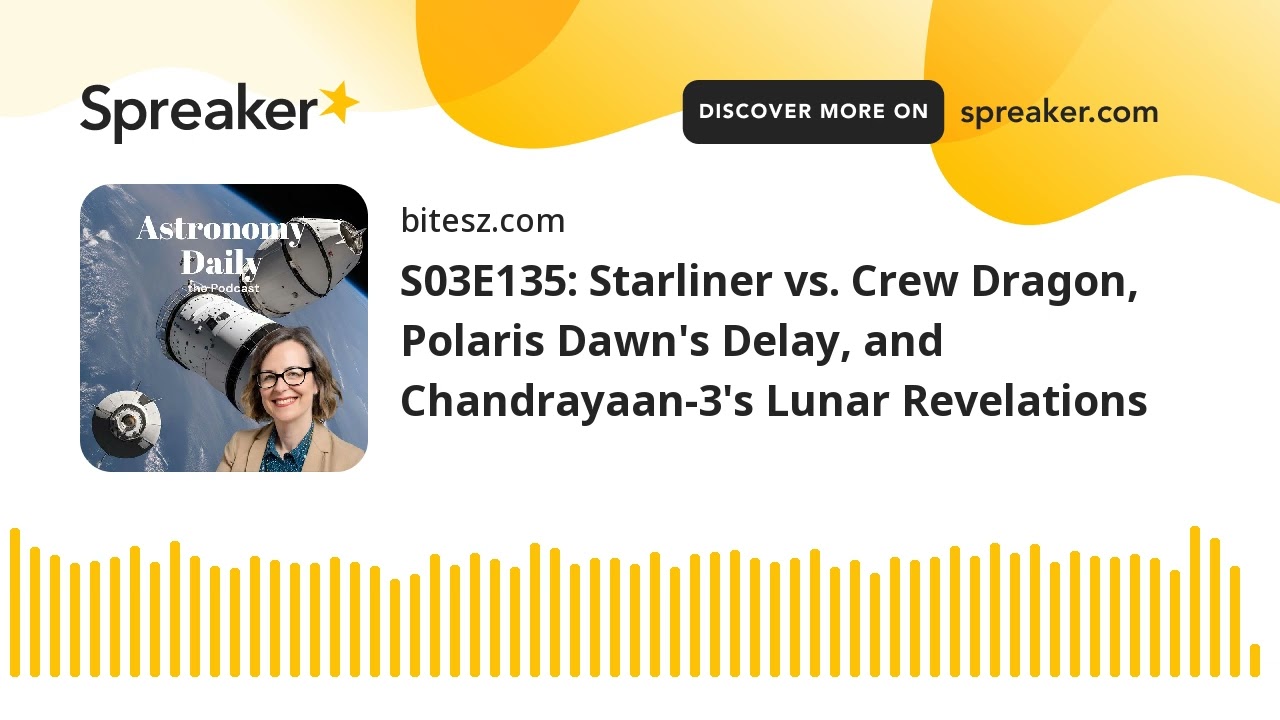 Space News TodayS03E135: Starliner vs. Crew Dragon, Polaris Dawn’s Delay, and Chandrayaan-3’s Lunar RevelationsSource:
https://www.spreaker.com/episode/s03e135-starliner-vs-crew-dragon-polaris-dawn-s-delay-and-chandrayaan-3-s-lunar-revelations--61123807
Welcome to Astronomy Daily, your go-to Podcast for the latest news and discoveries in the field of space and Astronomy. I'm your host Anna, and we have some fascinating stories lined up for you today. From NASA's upcoming decision on Boeing's Starliner to the historic private spacewalk planned by SpaceX's Polaris Dawn mission, we've got the latest updates that will keep you on the edge of your seat. We'll also delve into groundbreaking findings from India's Chandrayaan-3 mission, discuss the finale of ESA's...2024-08-2314 min
Space News TodayS03E135: Starliner vs. Crew Dragon, Polaris Dawn’s Delay, and Chandrayaan-3’s Lunar RevelationsSource:
https://www.spreaker.com/episode/s03e135-starliner-vs-crew-dragon-polaris-dawn-s-delay-and-chandrayaan-3-s-lunar-revelations--61123807
Welcome to Astronomy Daily, your go-to Podcast for the latest news and discoveries in the field of space and Astronomy. I'm your host Anna, and we have some fascinating stories lined up for you today. From NASA's upcoming decision on Boeing's Starliner to the historic private spacewalk planned by SpaceX's Polaris Dawn mission, we've got the latest updates that will keep you on the edge of your seat. We'll also delve into groundbreaking findings from India's Chandrayaan-3 mission, discuss the finale of ESA's...2024-08-2314 min